















This month’s Procurement Magazine issue looks at the dilemma of surviving in uncertain times. Most companies will fail to adapt, transform and, therefore, succeed; but there are those who have been successful, and within these pages is exactly how…
There’s an ongoing arms race in procurement. Though the battle is no longer about the acquisition of the greatest number of things – which included tossing aside people and planet amid an insatiable appetite for more – it increasingly tilts instead towards the stockpiling of newly-forged armouries of sustainability.
The future of procurement is today, and the changes that we are seeing are clear. They reveal that, in a flash, the whole world is set to transform. Only the adaptable and agile will survive the vicissitudes.
From shifting work cultures and progressively peoplecentric organisational ethoses to innovations in technology, Procurement Magazine delves into the companies and executives that are making it happen.
ILKHAN OZSEVIMilkhan.ozsevim@bizclikmedia.com


“It will fall to procurement to take the leading role in ESG initiatives”















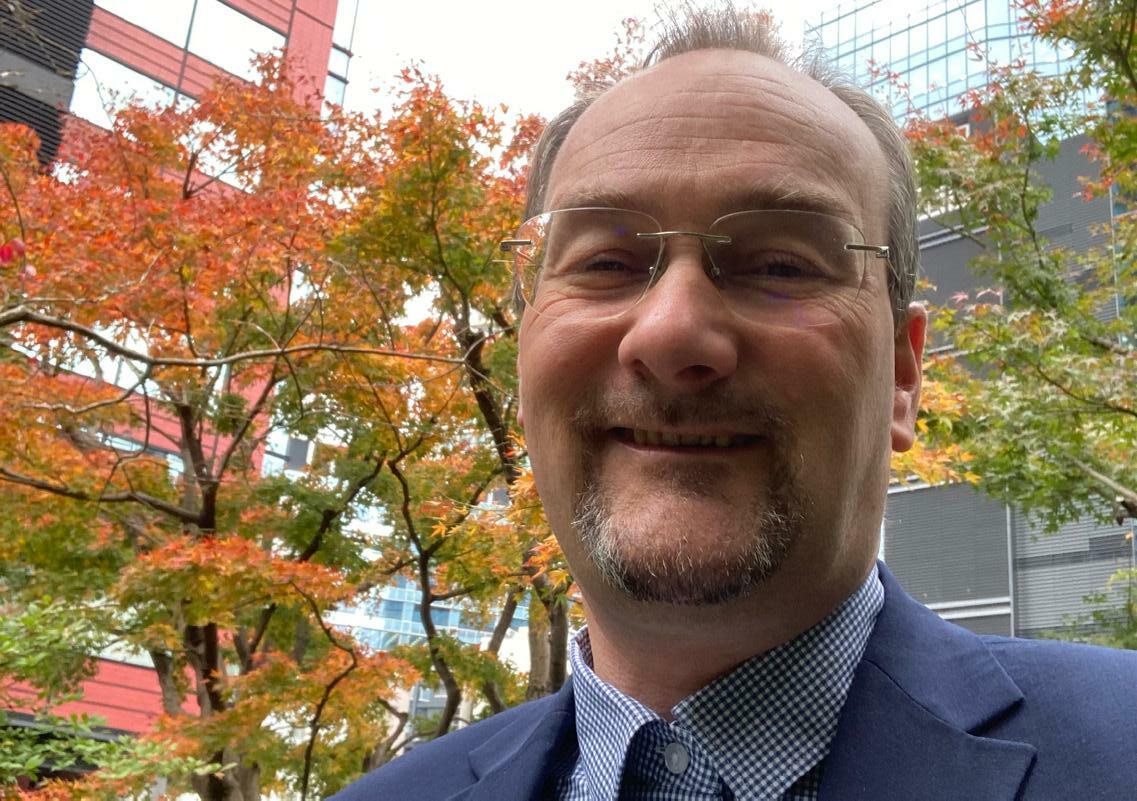

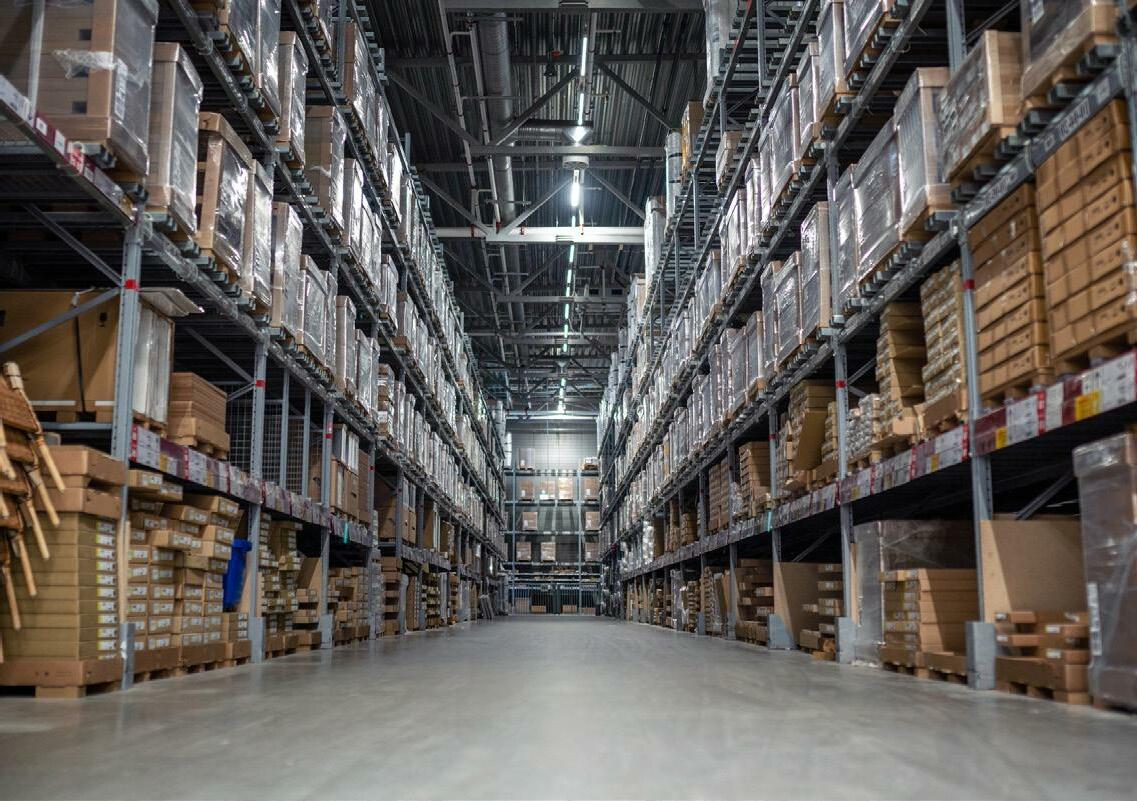






Effective procurement rests on data, and the more data, the better the procurement processes in potentia…
To analyse mountains of information; to make meaningful connections that would have, in all likelihood, been missed by human calculation, requires advanced Artificial Intelligence – and the rate of development in AI is about to open up an era that will transform procurement at its most fundamental level.
Efficiency is about to become much more efficient…


Adapting to change is no easy feat, here's how procurement is responding
Jag Lamba CFounder and CEO of
“Mature
Mark Perera is CEO and Co-Founder of Vizibl, the company behind the world’s leading supplier collaboration and innovation platform.
As CEO, a large part of Perera’s role involves speaking directly to Vizibl’s customers and prospects to learn more about their challenges, gaining an understanding of how Vizibl can work alongside them to iterate on and expand existing offerings to meet those needs.
Procurement’s sustainability progress
Perera feels that “there has been an overall lack of real progress in sustainability”, though he emphasises that “this isn’t something that can be landed at the door of procurement alone”, with “some mitigating factors at play that have also prevented things from moving forward at the pace that they need to”.
He says procurement has had more “immediate” issues to deal with in the supply chain, mainly caused by the hangover from COVID-19, the ongoing Russian war in Ukraine, and – for people in the UK – Brexit-related supply problems. Therefore, ways to reduce scope 3 emissions in the value chain, for example, have once again had to take a back seat.
Sustainable sourcing is growing, and Oceanum is exploring the many uses of sea plants to transform numerous industries from packaging to textiles

As sustainability efforts grow globally, Owens Corning – the world's largest manufacturer of fibreglass composites –seeks a circular economy
Recent survey finds netzero 2050 targets being thwarted by lack of skills, robust reporting standards, and costs of procuring materials. TAIWAN
Procuring semiconductors from Taiwan may be exposing fragility across the semiconductor supply chain, with Taiwan being responsible for nearly 65% of global semiconductor supply. Single-supplier dependencies fail to spread the risks.
Once upon a time, procurement was merely about driving profits. Get stuff, sell stuff, make money, repeat. The emergence of extra-material cultural values has galvanised the drive to transform procurement from the ground up. The future of procurement will concentrate on ‘triple-bottom lines’, incorporating ‘people’, ‘planet’ and ‘profit’ into the same framework.
Even when procurement was wholly concerned with the bottom line, efficiency was key. ‘Time is money’ – you know the crack. But time is foremost a resource; the foundation of all the rest – and so productivity and efficiency are crucial, thus growing concerns for procurement. Simply put: the more that’s digital, the less wastage.
If the past is anything to go by, change is the only constant – and the past 3 years have brought about more change to procurement than the last 30 combined.
Here are our top 6 predictions for the future of procurement:
Teleportation will revolutionise procurement forever
Ok. So this one’s a bit of a fantastical indulgence. For now. All science was once science-fiction. Take an iPhone back a mere century and the planet would bow at your feet in subservience.We’ve already achieved teleportation in the quantum world, and perhaps it will be AI that helps us bridge the gap between the micro and macro. Think Amazon ‘Time’, with “Rightnow delivery”.
Procurement’s role will keep gaining traction
You’re sick of hearing it, but perk up your ears: ‘Pandemic’. This single event brought about so many changes in the way the world itself is organised, let alone the procurement world (and they are intimately connected), that procurement went from a lowly background function to a board-room-level, I’m-here-to-save-your-life critical service, in the twinkling of an eye. Procurement will inevitably continue to rise in its prestige.
The rise of AI will redefine the function
At the upper echelons of digitalisation is AI. Our greatest procurement gripes are due to our shortcomings in prediction – predicting pandemics, predicting wars, economic collapses and the rest. Advanced AI will be able to make predictions that we cannot even fathom. They are unknown, unknowns. What is known is that AI will transform the very nature of procurement itself. Watch this space.
ESGs, DE&I & ethical standards will take hold Environmental, Social, (and Corporate) Governance, Diversity and Inclusion, Ethics – my, my, how far we’ve come since the days when we just wanted ‘to get stuff’. Ethical value systems related to people and planet, now in their infancy, will subsume procurement entirely, and procurement itself will play a central role in ethical movements.

Joining IBM in 1978, Chief Procurement Officer Bob Murphy has witnessed fundamental procurement transformations from the very beginning, dexterously adapting in tandem – and transforming both himself and IBM in the process.
Bob Murphy, Chief Procurement Officer of IBM, is a true career veteran. Murphy joined IBM in 1978, going on to earn a Master’s degree in Manufacturing Sciences and Engineering in 1983. Until the late 90s, he held various engineering and management positions at IBM Greenock (Scotland).
In the 2000s, Murphy developed his skills to hold various roles in procurement and moved from Scotland to North Carolina until 2014, when he became IBM’s Vice President of Supply Chain and Chief Procurement Officer.
Since taking up this role, Murphy’s focus has been on improving the way IBM approaches procurement, by enhancing processes and applying technologies to help IBM “listen for need and act with speed” in support of its stakeholders.
In both procurement and supply chain, Murphy is still focused on this goal of working smarter and faster; in improving productivity; in reducing costs; in optimising cash and innovating – all aimed towards providing a better stakeholder experience.
At IBM, Murphy works with technologies and processes to handle crises such as natural disasters and pandemics. He also works with suppliers across the globe to source new products and services from new suppliers that, once upon a time, IBM couldn't have anticipated.
Murphy was instrumental in helping implement dedicated freight carrier lanes to maintain delivery routes throughout the
pandemic, as well as with pre-booking flight spaces to secure shipping capacity as part of his role.
He helped execute urgent accountspayable supplier setups, expediting payments for business-critical requirements.
As IBM CPO, a large part of Murphy’s role is to actively support IBM’s clients in achieving business objectives as well as increasing the marketability of procurement offerings. This includes continual transformation, employing leading edge technologies and empowering a skilled team of professionals to improve their clients’ experience.
The rate and pace of change in his industry is faster today than at any other time during his long and fruitful career. The seemingly constant advancements in tech are certainly a goldmine of opportunity but, at the same time, create challenges for business across every industry, with all working to stay ahead of this extraordinary technological curve.
For this reason, Murphy finds that his role entails the buying of commodities that are different to what they were five years ago – even to those just one year ago – as new products are continually entering the market. Teams need to be immersed in the businesses of IBM’s clients from end-toend to ensure they are providing value at every level.
Murphy feels that it is absolutely critical that procurement and finance operate together as one team, as the CFO function has the responsibility for ensuring the fidelity and operations of the company, as well as in achieving its objectives in terms of things such as free cash flow, profit margin and all of those critical revenue metrics; in IBM, they moved procurement under the CFO function.
Murphy wants to ensure that IBM has strong employee engagement to keep their procurement professionals happy and moving forward in their careers, despite the challenges of working remotely.
IBM is now far more visible and increasingly focused on achieving Environmental, Social and Corporate Governance (ESG) goals.
IBM also took a further step, moving Accounts Payable from finance to procurement’s remit.

The changing role of the CPO has led to Murphy saying that he is out there looking for ways to keep improving and adding value. He spends 25% of his time speaking with other CPOs, in addition to leaders from industry and technology companies, to discover how they’re thinking around challenges and motivating their teams.
“Ultimately, it comes down to revenue and growth, improving speed and productivity and selecting suppliers that provide a competitive advantage, all while protecting the brand. To do those things effectively, procurement processes need to be digitised from source to pay to provide visibility.”
“Some people refer to AI as ‘Artificial Intelligence’, but we at IBM refer to it as ‘Augmented Intelligence’. The whole point around AI is to help our human workers to make better decisions, to make them faster, to give them better insights and therefore to deliver better outcomes.”
I’m James Butcher, CEO at Supply Pilot. I am passionate about supplier engagement, which is achieved when companies work in collaboration with suppliers to accelerate change.
» At Supply Pilot, our mission is to help companies transform the way they work with their suppliers to become more successful –with more sustainable products and brands at pace, and achieving measurable results within weeks, not years.
I have worked across the manufacturing industry, as well as many household name retailers, on best practice for many years, so I understand that much of what manufacturers do is driven by the requirements of the brands they manufacture for.
There is often a disconnect between brand and supplier – and this sparked a passion in me for improving supplier collaboration. When applied correctly, it is a win-win for both brand owner and supplier.
The opportunity to achieve benefits through collaboration with suppliers is often ignored or, at best, underestimated. Right now, brands need to be responding to environmental and social challenges, and they can do this best by focusing on their supply chain.
Effective supplier collaboration can empower suppliers to do more on time
and, in turn, deliver accelerated results against brand and retailers’ sustainability commitments, in addition to their commercial goals.
Supply Pilot’s proven process and cloud platform are perfectly suited to driving this type of transformation.
» I’d worked part-time for my dad’s engineering company from a young age, and I think that experience helped my engineering mindset and problemsolving skills, as well as encouraging an entrepreneurial spirit.
My first role after graduating in engineering was as a software developer, which led me to becoming a solutions’ consultant, implementing product control systems for the likes of Boots and Bayer.
I spent an enjoyable 20 years dealing with data, lot and barcoding equipment in factories, working with global customers and partners on a wide range of projects –from aerospace to potato crisps – before moving into software control as the founder of Claricom.
Our aim was to help ensure accurate barcoding and date coding to increase traceability in the supply chain, thereby reducing food waste. That led to my next step in retail: working with the likes of Asda, M&S and Tesco to develop best practice. From here, my eyes were opened to the opportunities available through successful collaborations.
At Supply Pilot, our clients are typically the brand owner, whether this is a large manufacturer, consumer packaged goods customer or retail own-brand.
Change is most typically driven through procurement. This can range from the need to source products that meet certain responsible sourcing standards, or working with suppliers to deliver transformational processes, such as increased sustainable packaging or removing materials of concern.

» My favourite aspect is the ability to drive positive change, empowering brands and suppliers to enable this change. When done well, a more collaborative approach is the quickest way to deliver sustainability improvements that result in winning products. This defines success for the brands, as well as for the companies
that manufacture for or supply those brands.
What we do at Supply Pilot is to enable the ‘conversations’ that would otherwise only be had with a small number of strategic suppliers. Our work enables this to be had with all suppliers, quickly and effectively, to scale the positive impact.

» The biggest issue is often the sheer scale and complexity involved in procurement. The increasing number of suppliers, products and materials is often compounded by limited internal resources, which can leave clients feeling overwhelmed and with no option but to focus on the few.
What the industry needs is a simplified system of supplier collaboration, with clear, measurable and actionable communications on what is needed and why, to help inform and empower them.


» In the current uncertain economic climate, focus will be on cost and supplier consolidation. However, this can be a false economy. It can stifle innovation. Necessity is the mother of invention, and therefore I predict the ‘winners’ will be those that seize on the current conditions to not stifle innovation, but encourage and empower those that deliver lower cost and more sustainable, winning products.
“THEREFORE I PREDICT THE ‘WINNERS’ THAT SEIZE ON THE CURRENT CONDITIONS INNOVATION, BUT ENCOURAGE THAT DELIVER LOWER COST AND WINNING PRODUCTS"”




‘WINNERS’ WILL BE THOSE CONDITIONS TO NOT STIFLE
AND EMPOWER THOSE AND MORE SUSTAINABLE,
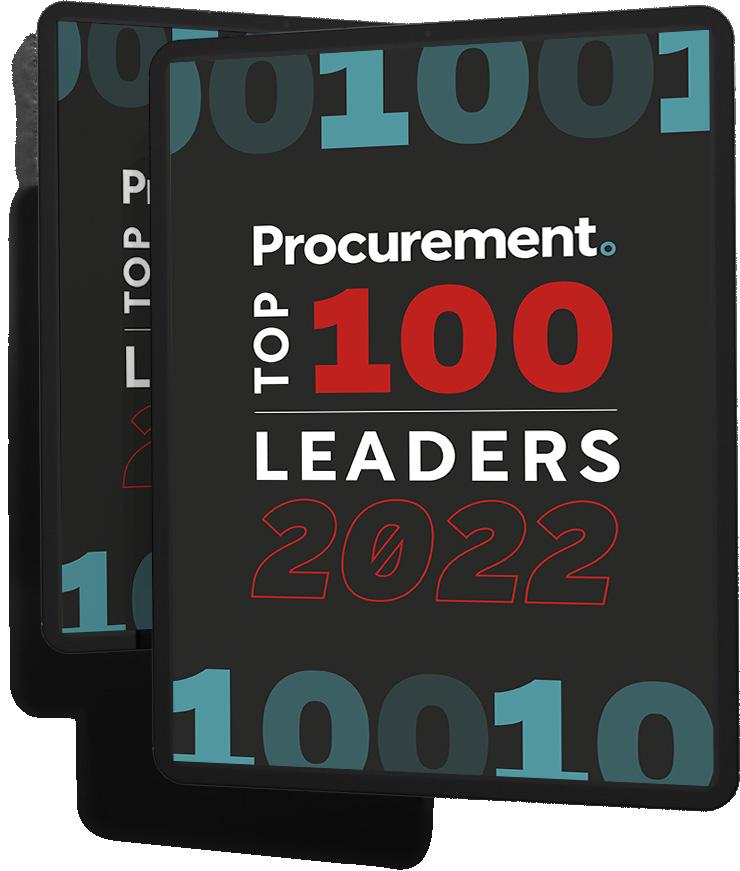



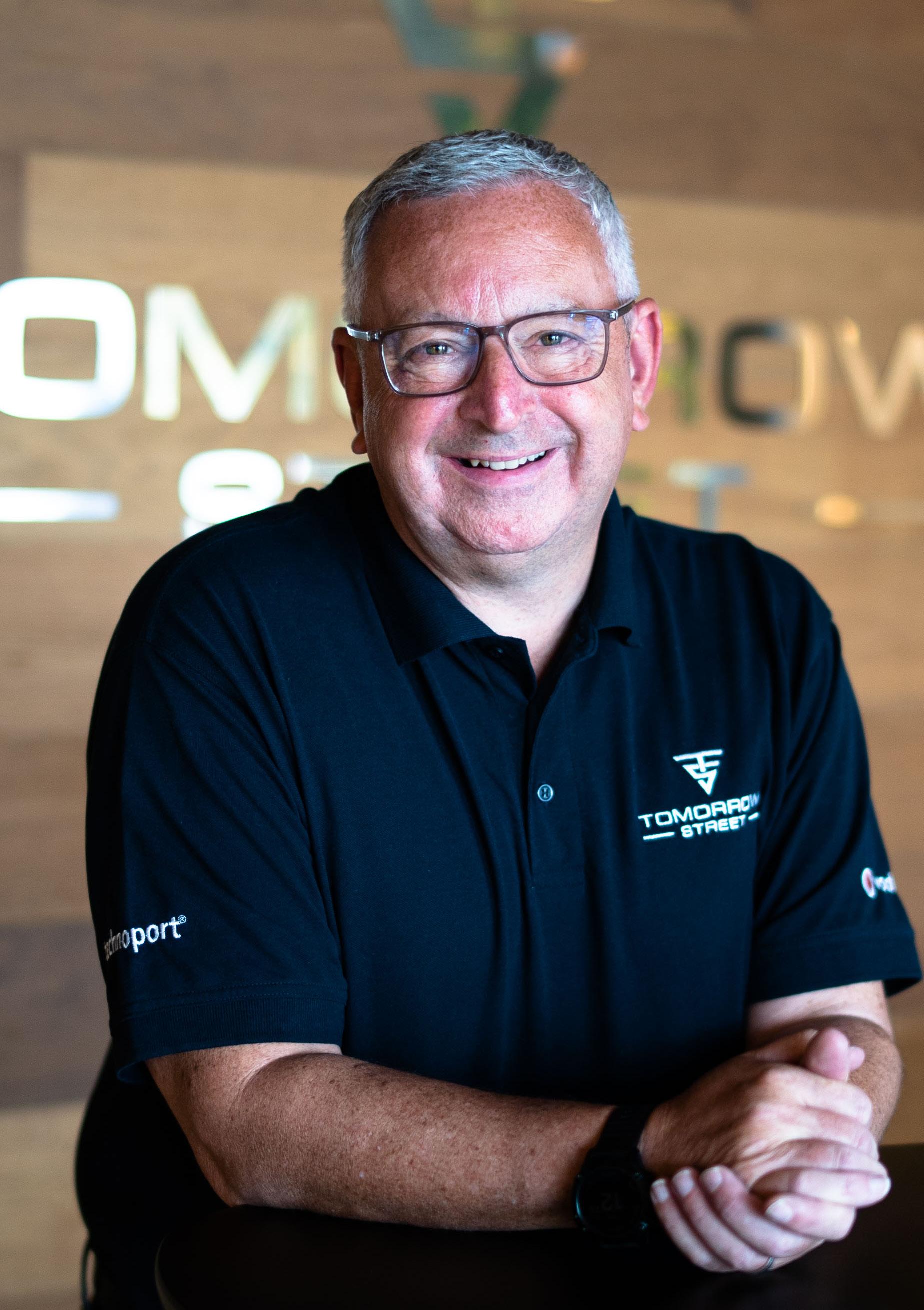
Vodafone was among the first organisations to see procurement as something more than a mere cost control centre – eleven years before the supply chain shocks of the pandemic prompted organisations the world over to follow suit.
It was back in 2008 that Vodafone established Vodafone Procurement Company (VPC) in Luxembourg, aiming to service the procurement needs of all Vodafone entities across the group. The motive for the move was to bring the company’s scale to bear.
“Prior to VPC, Vodafone’s supplier partners had to negotiate with every single operating company and tell them that they had the best procurement deal on the planet,” says Ninian Wilson, who is both CEO of VPC and also Vodafone Director of Supply Chain Management. “They don't do that anymore. Now, they negotiate once for our suppliers, and we hold the price books for the whole company.”
Today, Ninian Wilson and his team manage a spend of around €24bn across the company, and, as well as marshalling spending with suppliers worldwide, it supports the needs of its operating companies and group functions, in addition to selling procurement services to third parties.
Ninian Wilson, Global Supply Chain Director & CEO of Vodafone Procurement Company, on why problems are an opportunity to create competitive advantage

Huawei green energy solutions aim to drive technology revolution for a better, greener future. Together with global customers and partners, by end of Jun 2022 Huawei energy solution has achieved:
Green Energy Generation: 588.5 billion kWh
CO2 Emission Reduction: 290 million tons
Equivalent to Plant: 390 million trees
Learn More

Huawei is using innovative solutions, including the development of solar panels and energy storage solutions, to help significantly reduce carbon emissions
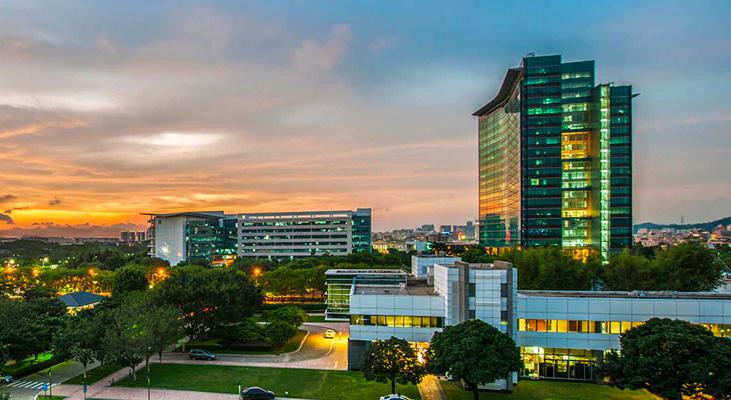

With the help and support of Huawei, Vodafone has been a pioneer in implementing its net zero strategy.
To support its ambitious goals, Huawei has used a number of innovative solutions, including the development of solar panels and energy storage solutions in a number of countries, including Egypt and South Africa, in a move to significantly reduce Vodafone’s carbon emissions.
“Apart from its European networks achieving 100% electricity supply from renewable sources in 2021, Vodafone is also committed to making all its African networks 100% powered by renewable energy by 2025,” says Huawei’s Senior Vice President, Vincent Pang.

“The current energy crisis in Europe has resulted in sharp increase in electricity bills and energy shortage, which is severely impacting telcos’ operations,” adds Pang. “To overcome the challenge, we have developed innovative solutions at the equipment, site, and network levels to
support telcos reducing energy consumption throughout the life cycles of their networks.”
Huawei has been continuously working with the Carbon Disclosure Project (CDP) and has achieved industry-leading scores for consecutive years in scope 3 carbon emissions: indirect emissions that occur in a company’s value chain. And with the globalisation of supply chains in recent years, Huawei has managed key supply chain issues to support Vodafone’s requirements, maintaining steady operations and remained determined to invest for the future.
To maintain supply chain resilience against pressure and to ensure both business continuity and cost advantages, Huawei works closely with suppliers and partners, Pang says.“We do not rely on any single country or supplier, and all of our key products have alternative sources within our supply chain,” he adds. “Vodafone and Huawei are long-term strategic partners,” Pang concludes. “We are absolutely confident in our ability to continue providing Vodafone with high-quality products and services.”


Wind River discusses its work with Vodafone, to help in its efforts to build Europe’s first commercial Open Radio Access Networks.
Wind River – a global leader in intelligent edge software – is in the vanguard of businesses driving the digital transformation of mission-critical systems and advancing the new intelligent machine economy.

One of the areas where the company is helping usher customers into an everchanging future is telecommunications. “We’re constantly strategising operations for the future,” says Kevin Dallas, Wind River President and CEO.
An important area for Wind River in telecoms is its work with Open RAN (O-RAN). This is a new approach to building mobile networks. Traditional RAN solutions required telecoms operators to work with single suppliers, an approach that works against smaller vendors, who lack the financial muscle to build and manage RAN solutions.

Wind River is embracing O-RAN in its work with telecoms customers, and as a result of its contributions to O-RAN including the contribution of key open-source technology, the company has been selected by customers such as Vodafone for production deployment of 5G.
“We were thrilled to be selected by Vodafone, to help in its efforts to build Europe’s first commercial O-RAN, which will be one of the largest in the world,” says Dallas. “Vodafone believes this will be the catalyst for other large-scale O-RAN deployments, and spearhead the next wave of digital transformation across Europe.”
But as well as opportunities, new technologies also bring challenges, most of which concern system integration. Vodafone recently published a white paper on the challenges of O-RAN system integration, with a call to action for ecosystem providers to integrate much earlier.
“Instead of buying a single box from a traditional vendor multiple vendors in the ecosystem need to work together,” Dallas explains.
“Distributed networks are complex,” adds Dallas. “This is why our focus is on “providing ease of deployment, increased levels of automation and operational efficiency.”
VPC is also a joint partner (with the Luxembourg government) in Tomorrow Street, a technology incubator with which it shares the same office and whose successes help grow the Vodafone tech ecosystem with scale-up businesses on the leading edge of telecoms tech solutions.
VPC helps Vodafone leverage scale on procurement “The rationale of VPC was strong from the outset,” Ninian Wilson adds. “Not only did it save vendors money because they no longer had as many account managers, but it also leveraged our scale as a company and provided a focal point for the whole of Vodafone.”
The Vodafone Procurement Company’s team operates across four areas, including IT, Networks, Commercial & Services, and Devices. “In all of these we leverage scale
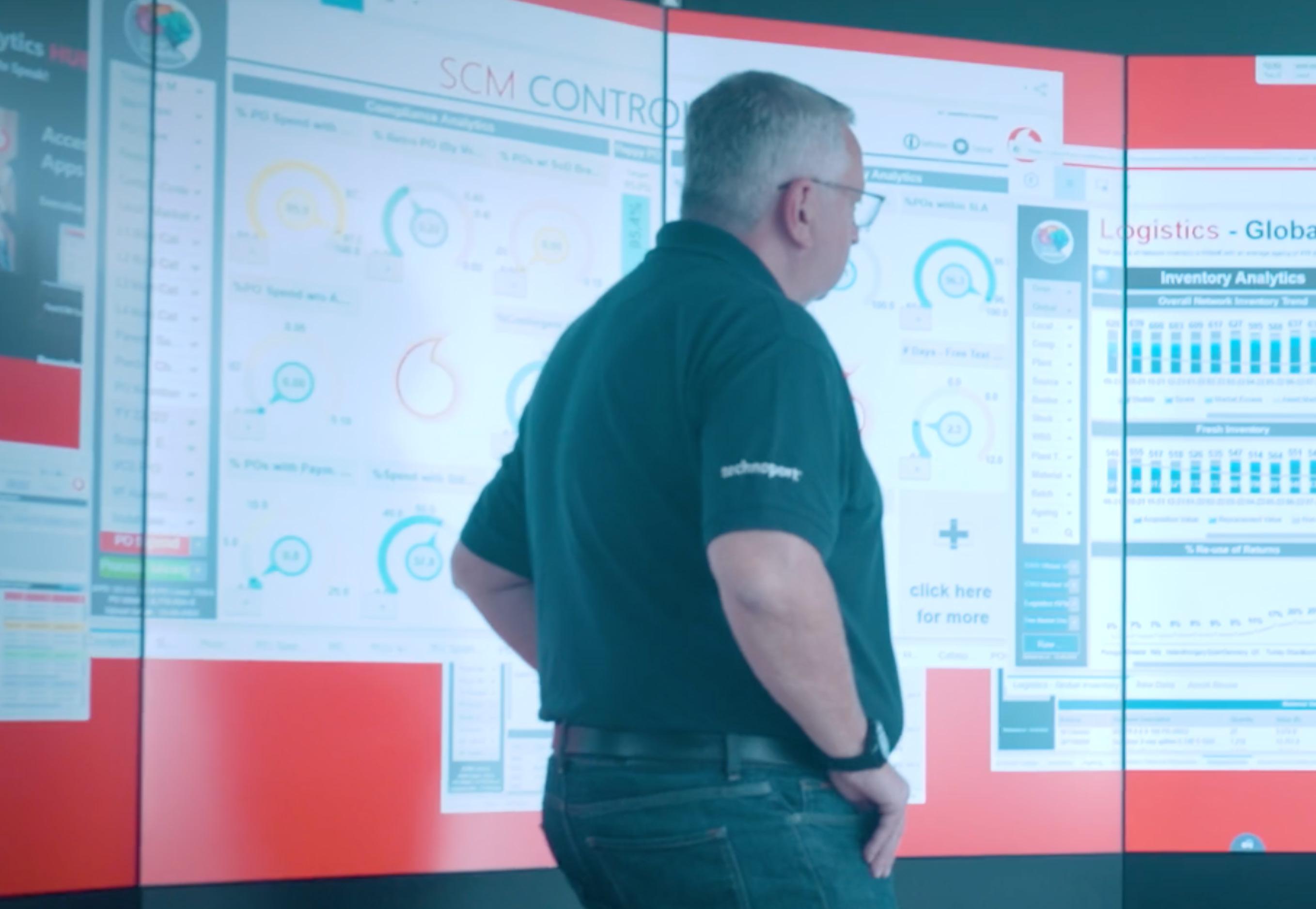
and hands-on expertise,” Ninian Wilson says. “The vision is to create the future of procurement with digital and pioneering practices, connected to experts worldwide.”
“
CEO, VODAFONE PROCUREMENT COMPANY AND GLOBAL SUPPLY CHAIN DIRECTOR OF SUPPLY CHAIN MANAGEMENT
TITLE: CEO OF VODAFONE PROCUREMENT COMPANY AND GLOBAL SUPPLY CHAIN DIRECTOR OF SUPPLY CHAIN MANAGEMENT

INDUSTRY: TELECOMMUNICATIONS
LOCATION: LUXEMBOURG
Ninian Wilson is CEO of Vodafone Procurement Company and Director of Supply Chain Management. He joined Vodafone on 1 June 2009 as IT procurement director and was appointed to the board of Vodafone Procurement Company in November 2009. From 2014 to 2016 he held the role of SCM Technology Director and was responsible for all technology sourcing in the company, including Networks, IT and new product development. In March 2016, he was appointed director of group SCM and CEO of Vodafone Procurement Company.

MarketPlace brings structural change to the way telecom operators SOURCE & MAINTAIN their networks by putting the CIRCULAR ECONOMY at the core of their business, resulting in efficiencies, cost savings & planet benefits. Our MarketPlace technology moves networks towards NET ZERO.










Shields CEO Daniel Jones explains how his company’s MarketPlace software platform helps telecom operators of all sizes save money - and the planet
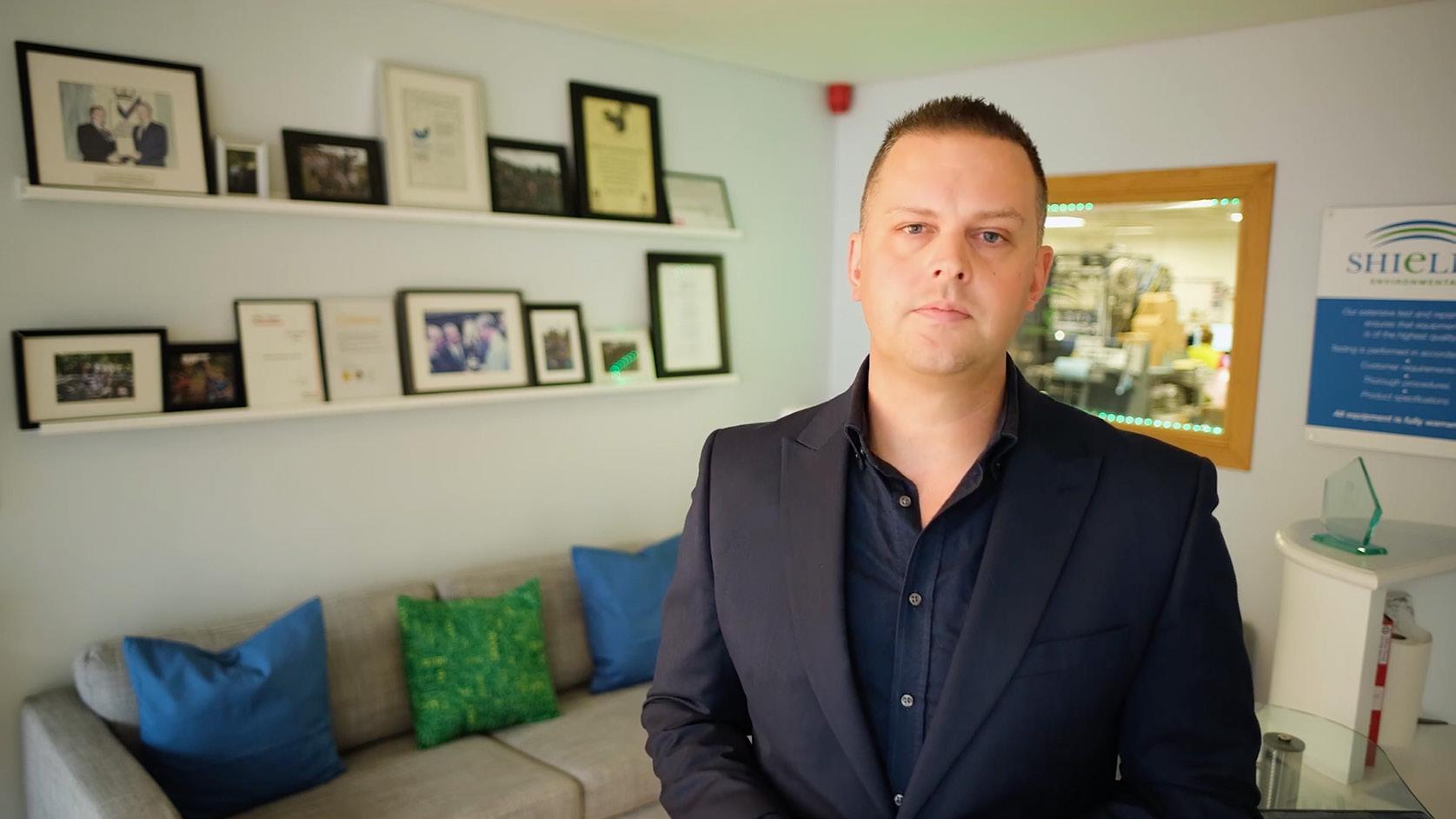
The global telecoms industry faces critical challenges in the fight against climate change and the drive to introduce a more circular economy. Reducing greenhouse gas (GHG) emissions has become a global goal to mitigate climate change, and telecom operators have an important role to play.
Drawing on four decades of experience working in the telecoms sector, UKheadquartered Shields has developed MarketPlace, a cloud-based platform which allows telecom operators to realise financial, environmental and social benefits.
“The telecoms world is now only 8.6 per cent circular,” says Shields CEO Daniel Jones. “The contribution network equipment can make to achieve a circular economy is enormous.”
MarketPlace has been adopted by the leading international telecom operator Vodafone, active in more than 25 local markets. To date, the Shields platform has enabled at least €30 million of CAPEX saving from reusing refurbished equipment and more than €5 million of additional revenue generated from the resale of surplus network equipment. It has also saved more than 7,000 tons of greenhouse gas emissions during the process.
Shields had been offering circular economy services for a range of operators when they were first introduced to Vodafone UK in 1998.
The telecom giant was in the process of modernising network equipment, and Shields formed a relationship with Vodafone UK that enabled them to introduce a 3R principle: 1) optimise Reuse back to Vodafone UK,
2) Resell surplus Vodafone UK assets globally and 3) Recycle the delta with a zero landfill policy. This 3R policy adopted with Vodafone UK is the foundation of MarketPlace which has introduced a fourth ‘R’ and explores Group Reuse after local needs have been catered for.

“MarketPlace creates significant financial savings (avoidance) and generates new revenue streams, whilst at the same time reducing long lead times compared to new equipment. There is a positive business case that also saves the planet. It is a win-win-win for all telecom operators that embrace our MarketPlace solution, which they need in this highly competitive market,” says Jones.
Find out more



Open RAN provides an exciting opportunity for Operators and Vendors to collaborate in a more harmonious manner. While Operators get an opportunity to pick the sub-system components from different vendors aiming towards efficient technology, cost modelling and operability, vendors see this as an area to enhance their individual products or components, instead of building end-to-end traditional RAN models.
While Open RAN has led to a more open environment and expansion across vendors and ecosystems, it also has certain challenges, such as procurement. There are different models that operators are using to procure networks; the single-vendor model, in which all the risk is managed by a single entity that manages all the risks of multiple eco-system vendors, is one such model. The other model is procuring individual sub-systems, taking the responsibility to stitch the solution together and procuring professional services with limited liability. Each model has different implications on accountability, risk profile and commercial/ contractual conditions. From the seller’s
perspective, a risk premium is often defined to manage unknowns depending on the model. However, this can lead to Open RAN losing out as comparisons are often made with traditional RAN procurement models –a comparison that unfairly de-emphasizes the enormous benefits of Open RAN.

NEC has collaborated closely with Vodafone to contribute in the field of Open RAN; together we will build one of the largest commercial Open RAN networks in the world. The future of Open RAN is promising and challenging at the same time. To allow innovation to foster, we need to move forward steadfastly and with patience. In the short term, an investment led approach needs to be taken that doesn’t measure TCO on Day 0 and that doesn’t default to the vertically integrated solutions the market is accustomed to. This will give time for the benefits of virtualisation and cloudification to be realized, which will be the basis of building next generation networks.

Internally, its job is to support Vodafone, and, in so doing, it is also indirectly supporting Vodafone’s consumer and business customers around the world, whether these be large corporates or small companies.
Ninian Wilson says the Vodafone Procurement Company also has external customers to whom it provides procurement services.

“This is through what we call our Partner Markets Division,” he explains, adding that this team sells Vodafone products and services, including third-party procurement and supply chain support. “Our primary role is to make Vodafone successful and to provide it with competitive advantage,” Ninian Wilson goes on to remind us.
Ninian Wilson helps deliver competitive advantage to Vodafone Part of that competitive advantage is ensuring it works with the kind of suppliers who not only help the company mitigate
against supply disruption, but who also perform strongly on ESG requirements.
Before rubber-stamping suppliers to provide Vodafone with products or services, VPC vets them closely, assessing their commitment and performance on diversity and inclusion, the environment, and health and safety in areas where there is risk.
On ESG, Ninian Wilson says VPC has taken “a very strong and forward-looking position”, adding that Vodafone doesn’t just recognise diversity “but celebrates it”.
“We take every opportunity to ensure we create an inclusive environment for all and provide opportunities for thousands more across our supplier base,” he says.
“Diverse suppliers bring a huge positive impact to our businesses and, ultimately, to our customers. This is why we identify partners who embrace diversity in their workforce, and who influence companies in their supply chain to do the same.”
As a company, Vodafone says it believes that “the promise of a better digital future should be accessible to all” and is committed to “ensuring the more vulnerable are not left behind on that journey”.

“We help support Vodafone in this,” says Ninian Wilson. “We help it use technology to bridge divides in society, and to ensure people can contribute equally and fully to society. Our employees come from 50 nations, and we employ 36,500 women globally, so we understand what it means to have a diverse workforce.”
Prior to Vodafone, Ninian Wilson was Chief Procurement Officer with Cable and Wireless, as well as also being Operations Director at Royal Mail.
How did those challenging positions help shape him professionally?
“I learned a lot in the Cable and Wireless role,” he says. “It was my introduction not only to telecoms, but also to international procurement.” He enjoyed some of the
locations, too. “Most of our operations were in the Caribbean, so it was clearly a good job to have.”
At Royal Mail, Ninian Wilson says he had 158,000 people working with him or for him. “I learned a lot about what it takes to work with a huge workforce. It showed me the pros of my management style, but also the limitations.”
“Vodafone
DIRECTOR OF SUPPLY CHAIN MANAGEMENT


As a key partner of Vodafone Procurement Company, Netcracker is preparing the supply chain for a digital world.
etcracker’s portfolio of digital products is designed to help businesses, like Vodafone Procurement Company, innovate and automate their operations. By tracking data such as inventory levels and client payment history, companies can better understand their operational needs and ensure they are running as efficiently as possible.
Netcracker Digital Platform is made for the transformation to a digital world. With Netcracker Digital Platform, an open, modular digital-native solution, businesses can adapt quickly to changes in the market, stimulate innovation internally and maximize profitability from their investments.
“As we see an increasingly digital society, Netcracker is proud to be on the front lines of development for products that help businesses achieve automation,” said Bob Titus, CTO of Netcracker. “We want to enable Vodafone Procurement Company to fulfill its goals of autonomous procurement and reducing its carbon footprint as it takes the next step of its digital transformation.”
With cutting-edge data and analytics, Netcracker provides Vodafone Procurement Company with a competitive advantage in the marketplace. Netcracker Digital Platform automates every aspect of the operations environment within and across domains with embedded intelligence for zero-touch and self-management.
Netcracker addresses the digital transformation through:
outcomes
agility
collaboration
cloud operations
“In summary, Netcracker Digital Platform provides the tools and practices needed to deliver the digital future,” Titus said. “Our software accelerates business agility and stimulates innovation, enabling our customers to succeed in their automation goals.”

 NINIAN WILSON CEO, VODAFONE PROCUREMENT COMPANY AND GLOBAL SUPPLY CHAIN DIRECTOR OF SUPPLY CHAIN MANAGEMENT
NINIAN WILSON CEO, VODAFONE PROCUREMENT COMPANY AND GLOBAL SUPPLY CHAIN DIRECTOR OF SUPPLY CHAIN MANAGEMENT
“I like to be on first-name terms with everyone though, obviously, it's difficult to remember everybody's name. But you meet some wonderful people from very diverse backgrounds; I think you bring all that knowledge and those experiences with you when you take on a role like mine at a multinational company like Vodafone.”
Vodafone Procurement Company has seen many changes Ninian Wilson joined Vodafone in June 2009, and he has seen many changes in the years since. “Back then, the procurement team in

“Diverse suppliers bring a huge positive impact to our businesses and, ultimately, to our customers”
Luxembourg numbered 150 people, whereas today it is more than 400 people,” he says. “We've scaled operations in that time, but I also think its role is now more than being about just managing procurement activity. We're also managing physical logistics activity, such as warehousing distribution and supply chain for our network equipment. Obviously, we're also managing risk and building a more-resilient supply chain.”
The focus of VPC may have shifted over the years but the core of the business remains procurement, “making sure we get the right requirements from our

internal clients and that we have the right engagement with our supply partners”, Ninian Wilson says. “The core is the same but everything else around it, in terms of context, has changed.”
When asked what is his biggest challenge currently, Ninian Wilson replies by saying he sees challenges as opportunities, and adds with a wry grin: “Let’s just say there have been far more opportunities over the past three years than I expected.”
He adds: “But certainly I'm hugely proud of the work the team has done to get us through two years of pandemic. I think


the pandemic for us has been a defining moment for teamwork, collaboration, and getting things done together. Although, during that time we had never been physically further apart from one another, we had never felt closer. I felt it pooled the entire company together.”
It also changed the way VPC works, with hybrid working now the norm – something Ninian Wilson feels is “good for our people and good for our company”.

The pandemic also saw Vodafone offer staff the ability to work abroad for periods of time “which a number of our employees and colleagues have taken advantage of this year” according to Ninian Wilson, who then states how it has “changed the dynamic of working”. He does admit that, as part of this changing dynamic, hybrid working asks different questions of his managerial style.
“Managing people remotely is different to bumping into them at the coffee machine and having an informal chit chat,” he says. “I do miss that, but we're working hard to make sure we make hybrid working as productive for both the person and the company as possible. We've just about got the balance right but we're still learning.”
The Vodafone Procurement Company’s team has done ‘amazing work’

As well as his team’s sterling efforts during lockdown, Ninian Wilson says that his team has done “amazing work” battling microchip shortages across Vodafone’s operations, in the face of demand for microprocessors massively outstripping supply.
And supply problems continue apace, with geopolitical turbulence and inflation compounding pandemic woes.
“We've now got the impact of the Ukraine War, and yet more uncertainty in supply chains,” Ninian Wilson says. “I would say the biggest challenge we face today is creating more agile supply chains, which can flex as they meet ongoing challenges.”





“Supply as a sector takes a long time to change and ways of working tend to be quite embedded. So, making them more agile is certainly a challenge, but it also provides us with opportunity if we get it right.”
Asked what he feels VPC’s defining strategy is, Ninian Wilson says that no procurement or supply chain team can have a separate approach to the overriding company strategy.
“As a company, Vodafone’s strategy is to help society digitise, to be a more inclusive employer and to work really hard on sustainability,” he says. “This is a very

purpose-driven approach, and we’re strongly aligned to this, in that we’re adopting and driving a purpose-driven approach as a procurement organisation.”
Achieving this, he says, comes down to “how VPC builds relationships” with key partners and key suppliers “as well as how we transform our physical logistics and supply chain activity, and how we utilise all our great people to bring that strategy to life over the coming years”.
As Solution Engineering and Customer Engagement Principal at Aera Technology, Jennifer Chaplain not only implements Aera’s core technologies, she also designs decision intelligence workflows for global companies. Aera Technology was founded in 2017 with a vision to transform the future of work through decision intelligence. The company’s cloud platform integrates with existing systems to automate business decisions in real time, enabling global enterprises to gain agility and respond to disruption.
Among many other accomplishments at Aera, Chaplain led the implementation of the first-ever operational procurement solution on a decision intelligence platform.
A passionate evangelist of data science and machine learning in enabling predictive, self-healing supply chains, Chaplain guides
WRITTEN BY: ILKHAN OZSEVIM Jag Lamba, Founder of Certa, & Jennifer Chaplain, Solution Engineering & Customer Engagement Principal at Aera, on the Intelligent Procurement Revolution








customers in transformational projects so their systems can react to supply issues autonomously and in real time – including communication with n-tier suppliers and contract manufacturers.
Digital transformation and rise of intelligent procurement
Intelligent procurement solutions are the future because, to put it simply, there will always be more decisions to be made. And those decisions will continue to grow more complex while the window of opportunity in which to make them shrinks.
Chaplain says: “Procurement teams are on the front lines, protecting companies from supply chain risk in addition to reducing
costs. Yet, today, we see many procurement teams in continual ‘triage’ or ‘firefighting’ mode – dealing with disruptions and challenges to the extent that they lack time for strategic planning or collaboration.
“Planners react to shifts in demand that happen more rapidly than before; buyers react to more frequent disruptions, while finance guards against purchase price variances (PPVs) and impacts on revenue. The number of decisions that must be made daily force these professionals to be reactive rather than proactive.”
In this environment, dashboards and traditional methods of monitoring trends and making decisions aren’t enough. Procurement teams need intelligent solutions that can augment and automate day-to-day decisions. This will allow not only the team, but the entire enterprise, to be more responsive and strategic in a fasterpaced business environment.
Jag Lamba, Founder and CEO of Certa, agrees. Certa is a supplier and risk management software provider that takes the complexity and opacity out of working with third parties. According to Lamba, “procurement needs to have its hands in a number of different systems for these various functions”.
“It will fall to procurement to take the leading role in ESG initiatives”
JAG LAMBA, FOUNDER AND CEO, CERTA E
“To prevent being bogged down by the inefficiencies of disparate software and systems, intelligent procurement capabilities can integrate and automate all of these non-spend functions in a way that creates transparency and efficient workflows.”
The many benefits of Intelligent procurement Intelligent procurement solutions capture the causes of deviations between budgeted and actual spend, the decisions made and the outcomes of those decisions – in context and in real time. This technology reduces risk by helping procurement teams
make informed decisions more quickly in the face of changing conditions.
Chaplain says: “An ideal solution leverages data science as well as digital technologies to understand the business, recommend actions, predict outcomes and take action by writing back to source systems.
“Technologies that leverage decision intelligence enable procurement teams to harness the data inside their enterprise systems across the business to predict deviations, notify buyers, and automate important decisions – such as changes to supplier mix – within defined parameters.”
Companies that have implemented these solutions have revealed opportunities to cut costs while also improving visibility and facilitating collaboration among suppliers, contractors, and customers.
“Another big advantage that is worth focusing on,” says Lamba, “is the benefit intelligent procurement platforms can bring to companies' ESG (environmental, social, and governance) initiatives.
“With up to two-thirds of a company’s emissions coming from its supply chain, procurement will be crucial in gathering, analysing and reporting emissions data across units.
As Solution Engineering and Customer Engagement Principal at Aera Technology, Jennifer Chaplain implements Aera’s core technologies and designs decision intelligence workflows for global companies.

- Jennifer Chaplain, Solution Engineering & Customer Engagement Principal at Aera
My role is to guide our organisation as we help our customers do good business –by which we mean being able to be confident that the suppliers you work with are quality organisations that align with your values and mission – and manage our suppliers with transparency
- Jag Lamba, Founder and CEO of Certa


“That process will be even more difficult and time-consuming if procurement doesn’t have an integrated, intelligent platform letting them collect emissions from multiple sources and store them efficiently.”





Within the next two to five years, procurement teams will be forced to move from relying on processes and transactional recording systems (which often only show what happened in retrospect) into an environment that demands an ‘always on’ memory of decisions made, their contexts, and their outcomes.
“This digital record will be critical to strategy,” says Chaplain, “particularly as environmental, social, and governance (ESG) mandates require companies to measure and justify the impacts of procurement decisions. When we consider how many organisations still rely on spreadsheets, emails, or phone calls to track decisions and outcomes, the value of this technology is very apparent.
“In addition, decision automation helps procurement teams focus on the high-value, strategic decisions that deliver competitive advantage. Using predetermined rules and predictive logic to automate decisions that a person would have made reduces the team’s operational workload and allows those professionals to focus on their areas
of expertise, such as strategy, contract management, and negotiations. Relieving teams of those ‘firefighting’ responsibilities in turn allows companies to adapt and compete in this new environment.”
Intelligent procurement allows organisations to consider more variables in purchasing and supply chain decisions, allowing them to choose a course of action more quickly.
Optimal procurement decisions must consider data such as customer orders, safety stock, total cost of ownership, and on-time in-full (OTIF) performance. This equips companies with the capability of balancing risk, cost, and quality through the application of AI and machine learning, as well as data harmonised from across enterprise systems.
This allows, for example, a company to choose the best potential supplier for a given sourcing need, while monitoring spend and ensuring adherence to budget. Chaplain says: “Or consider that, with traditional procurement processes, a yearend deviation between budgeted spend and actual spend leaves staff working to understand the cause of the discrepancy. By contrast, today’s technology makes it possible to track performance versus budget on an ongoing basis, record decision outcomes, and make adjustments as needed.
“With this technology, companies can mitigate risks by breaking down the silos that hide process gaps. Moreover, companies can readily adjust strategic sourcing and contracts to consider changing market conditions or supply-chain threats whilst mapping both decisions and outcomes to business objectives.”
What does 2023 hold for intelligent procurement processes?
“In 2023,” says Chaplain, “we expect to see more executives at large organisations adopting decision intelligence platforms; siloed data, slow purchasing processes, and lack of visibility to supplier inventory positions are making it difficult to keep up with the pace of change.
“Despite advances in supplier collaboration tools, too many key communications or decisions still take place in offline channels – phone calls, emails, or occasional faxes. Technologies that leverage AI and machine learning to digitise and automate decision making across business functions and processes allow companies to detect a risk, generate or change purchase orders (POs), monitor for PPV, send approvals to managers, and release POs to suppliers in minutes or seconds, as opposed to hours or even days.”
Lamba adds: “Overall, I expect 2023 to be the year we see a large uptick in the adoption of intelligent procurement platforms –driven largely by the above factors. Those factors introduce a lot of risks, something that intelligent procurement functions are designed to mitigate.”
Future innovations in the intelligent procurement space
Advancements in digitised decisionmaking are not only providing actionable intelligence and measurable results –they’re showing procurement teams that they no longer have to rely on methods that aren’t allowing them to be competitive.
“It’s no longer reasonable for users to interact with multiple systems to process POs, negotiate contracts and analyse data,
then generate all the insights,” Chaplain says. “Realising that there are new ways of doing business is as important as the technology innovations themselves.”
Lamba believes that 2023 will be the year of ESG. “As the procurement function has evolved, those teams don’t just
manage spend, they now manage carbon footprint and more,” he says. “It will fall to procurement to take the leading role in ESG initiatives, or at the very least serve as the central hub for all the data required to tackle ESG initiatives to be sourced, stored and shared with the right parties.”
“Procurement teams are on the front lines, protecting companies from supply chain risk, in addition to reducing costs”
JENNIFER CHAPLAIN, SOLUTION ENGINEERING & CUSTOMER ENGAGEMENT PRINCIPAL AT AERA

 PRODUCED BY: CRAIG KILLINGBACK
PRODUCED BY: CRAIG KILLINGBACK

From empty terminals in 2020, to serving over 50 million passengers in 2022, Heathrow Airport has weathered some mighty turbulence in recent years. Now the UK’s hub airport is building back, Heathrow’s procurement team stands ready to ensure the airport’s growth is efficient, responsible and meets the needs of every passenger
From the outside, running a procurement operation with the size and variety of London Heathrow airport is an incredibly complex challenge. For Paul Doherty – the Procurement Director at Heathrow Airport –and his team, their job becomes clearer when they focus on the most important person in the building.
“The passenger is central to everything we do, every decision that we make and every project that we launch. Every operational change or operating procedure that we do has the passenger at the centre of those decisions,” he says.
With passenger numbers steadily climbing back higher, a hundred thousand priorities are walking through the terminal doors every day, each of whom need to be given the best possible travelling experience.

‘It is really important to us that, from the moment the passenger enters the airport, their holiday starts. So we want them to be comfortable, we want them to be enjoying the experience that they have,” he says.
Paul speaks passionately about customer care, about how every member of staff at the airport should support a passenger if

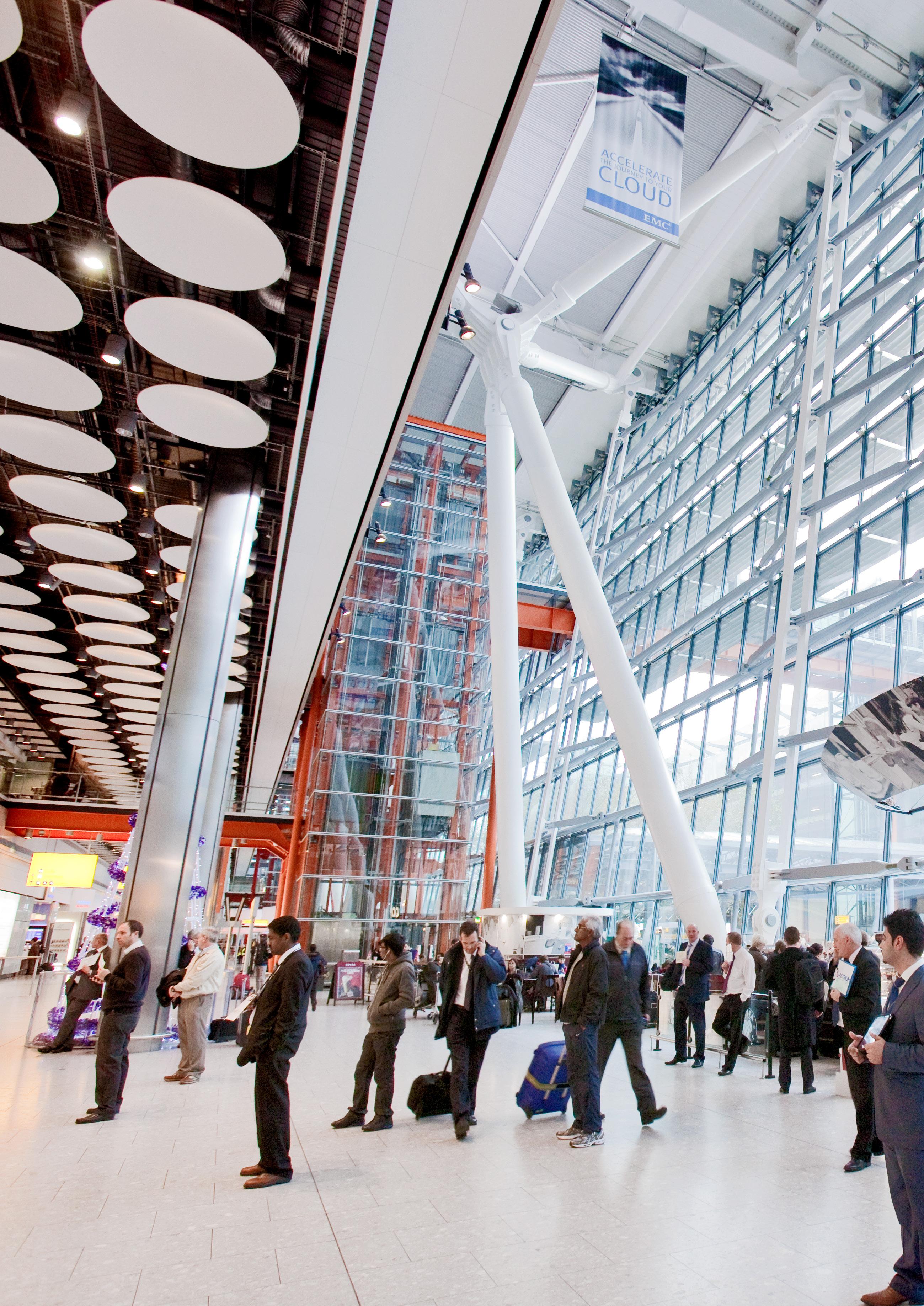
they see them in any form of confusion or discomfort. That mantra permeates right from the very top of the executive team down to all of Heathrow’s colleagues - including the airport's operators via their service signatureswhich provide a framework for the passenger service proposition, to notice and care, share what they know and ensure the passenger’s problem is resolved before they leave.
This is just an example of the variety of tasks that present themselves daily in what Doherty describes as a ‘city of services’, which features an enormous range of diversity regarding what they have to deliver on a huge scale.
“I've just come off of a call talking to someone who is at the party conferences, understanding the political landscape. Later on, I'm going to go and talk about cleaning performance in one of our terminals. This afternoon I'm going to talk about algorithm development and security products.”
Because of the incredible breadth of the services he speaks about, becoming a “specialist at being a generalist” is a given –there are few jobs where you can start your day dealing with politics and end with cleaning regimes, successfully able to pivot between the two as well as engage with everything else within that. It also necessitates having experienced people in post who can cope with operating under the pressures of one of the busiest airports in the world.

PAUL DOHERTY PROCUREMENT DIRECTOR , HEATHROW
“ The passenger is central to everything we do, every decision that we make and every project that we launch”


A world class player in the mobility market, committed to empowering the freedom to move everyday thanks to safe, reliable, sustainable and innovative solutions that serve the common good.
Contact us
Rebecca Mupita, MD of Transdev Airport Services, says the future for the company will be green, and connected to local Heathrow communities

Rebecca Mupita is Managing Director of Transdev Airport Services and CCH Aviation Logistics, both of which are part of the Transdev Group, whose core function is delivering multimodal transportation services.
Mupita and her colleagues are based a stone’s throw away from Heathrow Airport, and provide innovative, sustainable passenger transport and fleet maintenance solutions for the aviation sector. “We deliver solutions that are aimed at providing clients and customers with complete transparency, so that they better understand their operational demands,” she explains. “With this insight, we can identify and tailor the right solutions to support.”
As well as managing and maintaining complex airport fleet and equipment, Mupita and her team provide scheduled and on-demand transportation services and manage airport bus and coach stations. Tailoring its services and solutions is just part of the company’s transformation journey,

as it continues its recovery from a brutally tough pandemic. “Covid hit Transdev very hard,” says Mupita. “It decimated the aviation industry.” In the post-pandemic era Transdev is not just rebuilding, but is “rebuilding green”, says Mupita.
“Reducing emissions is at the heart of our sustainability measures,” Mupita adds. “We are currently planning to deploy a new electric fleet at Heathrow Airport, and through our new technologies we are also designing passenger services that reduce unnecessary transfers, while enhancing the passenger experience.” And, she adds, the company will also continue to extend its outreach initiatives, working with local schools, colleges, and universities, looking to find the next generation of ‘journey makers’.
“We’re increasing our apprenticeship schemes to develop young talent,” says Mupita. “Typically, logistics isn’t a career young people think about going into. But we are looking to change that.”
Doherty speaks on the transformational challenges – caused in part by the pandemic – that Heathrow have undergone while continuously modernising and embracing new security technologies. “Our new security solution means you won't have to take your laptop out of your bag,” he says. “You can go through security and just put your bags through a scanner. It’s a much less intrusive journey.”
“We talk about a frictionless passenger journey, and it's just like a good doctor in the NHS: when you need us, we're there.”
Doherty’s route to being Director of Procurement started in a very different, but also incredibly demanding form of transport.
He worked in operations at the London Underground for seven years, but says he always found getting into the capital space appealing and, ultimately, took on a more junior role at Heathrow to expand his personal skill-set. From there, he progressed through different projects, including the airport's role in hosting London 2012 Olympics arrivals, baggage categories, heading up terminals and, when the pandemic arrived, closing down aspects of the capital portfolio before moving into the operational environment to focus on cost reductions and supplier management.
“We did that as caringly and as responsibly as we could with our capital supply chain partners, many of whom are still with us and working. Following that, I went over

Paul Doherty is the Procurement Director at Heathrow Airport, responsible for Operational, Infrastructure and Technology procurement.

Paul’s accountabilities centre around meeting the airport’s current and future business needs. His teams are focused on delivering value for money, data-driven insights and trusted advice to both internal and external stakeholders. Paul is passionate about empowering his teams to target continuous improvement and delivering results to advance the talent of the procurement team.
A constant focus for Paul is working with our supply chain partners and local community to ensure Heathrow’s strategic sustainability goals and targets are achieved to maintain the airport's licence to operate.

Where our data experts pinpoint where you can make the biggest carbon savings to accelerate your path to net zero.
This is the Science of Service
This is just the star t
mitie.com/scienceofservice
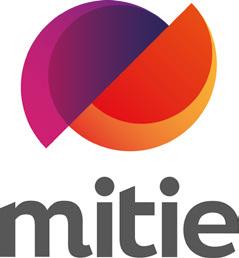
The exceptional, every day

Mitie prioritises decarbonisation and takes a flexible approach to sustainability through its Plan Zero, which supports its partner Heathrow Airport
As the UK’s leading facilities management and professional services company, Mitie is determinedly working on not only its own decarbonisation journey, but also supporting partners including Heathrow Airport. As Mike Sewell, Mitie’s Plan Zero Director, says, “if an organisation wants to drive real change in decarbonisation, it absolutely should be front and centre for their facilities management providers to be the party that’s helping them on that journey”. For partners like Heathrow Airport, Scope 3 includes their supply chain, which includes Mitie. Sewell’s approach to partner support is simple: “Just by operating better ourselves, we’re already helping reduce their Scope 3 emissions— and that applies to every single customer that we work with”.
Mitie has “committed to having net zero, from a Scope 1 and Scope 2 perspective, by 2025 and Scope 3 by 2035”. Mitie’s industry-leading Plan Zero initiative has three key focuses: eliminate carbon emissions from power and transport; eradicate non-sustainable waste; and enhance inefficient buildings.
For example, Sewell says that within Mitie’s operations the majority of emissions sits in our use of vehicles: “We’ve focused our efforts on decarbonisation of our fleet together with connected workplaces where we’re actually looking at better data connectivity, where we can actually monitor sites, understand sites and deal with things remotely.”
Mitie’s latest ESG report highlights its progress, centred around five pillars: Environment, People, Community, Responsible Supply Chain and Innovation. Among its sustainability successes Mitie reports a 33.4% reduction in emissions since the FY19/20 baseline year and how it has cut 11,445 tonnes of CO2 by investing in electric vehicles (EVs).



By prioritising its own decarbonisation journey, Mitie put itself in the best position to support partners and proactively work to reduce its impact.
As Sewell states: “Decarbonisation: it’s not a challenge for one organisation, one customer. It affects us all.”
1944 - Construction of London Airport's runways begins 1946 - London Airport Officially Opens
1955 - Her Majesty The Queen opens the Central Terminal Area and Control Tower 1966 - London Airport renamed ‘Heathrow’ 1969 - Terminal 1 opened 1976 - Concorde makes its first passenger flight 1986 - His Royal Highness Prince Charles and Princess Diana inaugurate Terminal 4 1987 - The British Airports Authority is privatised as BAA plc 2003 - Three Concordes make their final touchdown at Heathrow 2007 - A new air traffic control tower is operational – the tallest in the UK 2008 - Terminal 5 officially opened by Her Majesty The Queen 2009 - Major refurbishment of Terminal 4 2014 - New Terminal 2 re-opens 2015 - Terminal 1 closed 2016 - Heathrow celebrates 70th anniversary
to our operations teams to support them in removing the costs that we needed to be able to continue operating through the pandemic,” he says.
It resulted in him being offered the Director of Procurement in 2021, a role for which Doherty thinks the breadth of his experience across both the capital and operational sides of transportation has positioned him well, as having both pillars of experience gives a better, more holistic outlook on the role.
“I always knew the benefit of broadening my portfolio. I had relative success at quite a young age in the operational space and knew that to actually really understand the business, you need to understand both the capital and the operational side of the company,” he says.
The pandemic presented all sectors with genuinely unprecedented challenges, and Doherty believes that the legacy of that time is the biggest single challenge facing all airports: passenger numbers at Heathrow had consistently climbed in the decade leading up to the pandemic, before dropping to 22.1 million in 2020. This created a situation when scale had to be quickly changed to cope with a 73% decrease compared to 2019, while still keeping planes in the sky and passengers happy.
“Speaking as a Procurement Director, the pandemic is the primary challenge. Aviation took a substantive knock during the pandemic period that we have to take care of over the coming three to four years. It’s not just the debt in terms of commerce, it’s the debt in terms of having had to make difficult decisions around assets, services, our service proposition, our security proposition; having had to slow down pieces of work to make them affordable means that we now need to speed them up to make them deliver.”
“The playbook for the pandemic didn't exist. The thing that makes the UK proud







about Heathrow as a piece of national infrastructure is that we run at a capacity that no other airport, globally, runs at. We run at 98% across our two runways, we have more air traffic movements during the day, we move and turn aircraft around quickly. We have operating procedures for if we have a busy day, we have an operating procedure for if something goes wrong during a day –we have an operating procedure for most things. Yet this isn't operating procedure, this is managing demand in a different way.”
Strategic partners and pillars to posts
With demand fluctuating rapidly during the most acute months of the pandemic –followed by a gradual return to more familiar capacity levels – there has been pressure to scale engagement with suppliers and service providers around the Heathrow

“ We talk about a frictionless passenger journey, and it's just like a good doctor in the NHS: when you need us, we're there”
environment. This operates alongside a project called the Heathrow Partner Balanced Scorecard, which helps the procurement team choose the best strategic partners and convey the strategic aims of the business for prioritisation.
“It focuses on five main pillars: carbon reduction, social value inclusive of accessibility, inclusion and diversity, opportunities for local business, innovative solutions and behaviours. And that’s not just behaviours

“ The thing that makes the UK proud about Heathrow as a piece of national infrastructure is that we run at a capacity that no other airport, globally, runs at”
in terms of business-to-business behaviours, but also the behaviours between our supply chain and our passengers, should they encounter them, and also behaviours towards sustainability. So Heathrow’s role is incredibly influential and important in the supply chain, persuading them to contribute towards our aims.”

He describes the intention of creating a ripple effect with their partner organisations and the supply chains that support them, but making sure that that whole ecosystem is made up of organisations with sustainable practices built into their DNA as a service
provider, rather than simply raising their game to be part of the Heathrow environment.
“We are really keen that companies bring to bear, here at the airport, the best of what they're doing centrally. An account director reporting here at Heathrow, for example, will contribute towards their central numbers as a business.“
Doherty speaks about how the needle has moved rapidly on the subject of sustainability, due to matters such as the London living wage that are now built into contracts, yet wouldn’t even have been a discussion point a decade ago. He describes how sustainability is now a ‘licence to operate’ at an airport and how, if you do not have those strategies in place, it’s difficult to be part of the operation.
“It’s quite exciting how sustainability has kicked on and matured. It's absolutely the case that it is going to grow, not diminish. As an airport, we have to accept that we are historically polluters, so we have to take a responsible view of that. And we have an executive right now passionate about being responsible.”
These advancements in sustainability, and how it is inextricably linked to the supply
At Vanderlande, we’re committed to delivering sustainable solutions in every aspect of our operations. We do not want to do this alone, which is why we seek collaboration with our suppliers and customers like Heathrow Airport to maximise the impact of our efforts throughout the value chain.
When it comes to sustainability, there’s no doubt that close collaboration enriches discussions and allows all partners to learn from each other and align activities that support each other’s sustainability goals.
Want to know more? Read the blog about our partnership for sustainability with Heathrow Airport.

Learn more:

chain and procurement operation, play a pivotal role in Heathrow’s sustainability strategy. Heathrow 2.0 is their plan to connect ‘people and planet’ and to work to build a better, more sustainable airport. The broad strategy includes net-zero aviation, creating a great place to live and work, and having responsible business foundations. It’s a piece of work that shows how far the airport has come since they took the step to publish their first environmental policy back in 1992.
There is a raft of commitments from Heathrow to make them a better neighbour to both their locality and the wider environment. They are committed to cutting carbon in the air by 15% compared to 2019, their ground level emissions by an even more ambitious 45% and an air-side ultra-low emission zone by 2025 for all operational vehicles. The targets also include doing even more for the region in which they operate, providing 10,000 external jobs, apprenticeships and career opportunities for local people, as well as 15,000 workplace experiences.
This strategy also aims to have a positive impact throughout the sprawling sphere of influence the airport achieves via its strategic partners, being part of the London Living Wage Foundation and a good neighbour to other local businesses.

“I also personally have an objective to grow our small to medium-size enterprises from


2019 levels,” he says. “There are a number of initiatives and schemes we are doing both in the local chambers of commerce and through business summits to help us achieve those aims.” A statement that demonstrates Heathrow and its procurement team's passion passion to deliver on the commitments it has made.

Lessons to carry into the future and beyond It is this culture of collaboration that Doherty feels is the best route to building mutuallybeneficial relationships between Heathrow and their strategic partners. If they are working with other organisations who can innovate and deliver more than would normally be expected, they can produce better and wider outcomes than the ceiling setting a defined target could engender. He believes the biggest piece of learning for the whole management team was for them not to mandate but to collaborate, as they do not just want their partners to deliver up to a set limit, but instead to bring the best of what they can deliver to the airport, with a level of quality that is centrally ingrained within the business.
“We go back to the mantra: ‘if you can make it work at Heathrow, you can make it work anywhere’.”
Ultimately, Paul Doherty returns to the key purpose of every operational decision the airport makes, which is the experience of every person who walks through the terminal door with a suitcase in hand.
“The way in which we work with our supply chain is to always make sure that we are listening, collaborating and challenging ourselves to make sure that we don't miss the opportunity to get something even better for ourselves, for our passengers and for our airport community and stakeholders.”
 –
–
Ash Finnegan, Digital Transformation Officer at Conga, reveals that most organisations attempting digital transformations

Ash Finnegan is currently digital transformation officer at Conga, which provides end-to-end solutions to help organisations transform their revenue operations (RevOps) and navigate business complexity. In her role, she works directly with customers and partners to execute these programmes in-house.
Drawing upon her 20-year-strong experience as a digital transformation consultant, she has spearheaded the development of a unique framework that empowers organisations to understand the revenue operations’ landscape and successfully tackle their transformation journeys. This assessment ensures organisations implement technology at a pace that they are ready for, only incorporating solutions that drive real business outcomes.
are missing the point entirely


“This is an industry-leading framework, and it is now utilised by Conga’s entire frontline, partner network and global customer base, including 11,000 organisations, such as Accenture, PWC and Adobe,” she says.

Digital transformation maturity landscape for procurement Finnegan says: “The day-to-day supply of goods and services has become increasingly challenging over the past few years. The emergence of new risks and increasing market pressures – such as global supply chain shortages, price increases and inflation – have meant that procurement teams have had to accelerate their digital transformation initiatives to cope. Digital change programmes have become a necessity to overcome the challenges of cost control, supplier relation securitisation and supply chain traceability.
According to PWC’s recent Global Digital Procurement Survey 2022, digital transformation is now considered a top business priority. In fact, 77% of companies
“Employees need to see digital transformation as an opportunity rather than a challenge to be overcome”
are now equipped with source-to-pay digital solutions, while 50% of procurement leaders believe digital transformation will be a major focus for the next few years.
Though digital transformation in procurement offers many benefits such as cost control, supply chain traceability, and risk mitigation, that doesn’t mean it’s easy to implement a company-wide strategy – only 36% are successful.

“While recent events may have accelerated companies’ digital evolution or change programmes,” says Finnegan, “it’s still very much in its infancy. There are plenty of lessons to be learnt, particularly when leaders are looking to harness as much data as possible to make far more accurate
strategic decisions for their organisation.
“Looking ahead, procurement departments will be setting ambitious digitalisation targets for next year. Teams will be looking to maximise their operational efficiency and will need to ensure that they are making the right digital investments for long-term gains.”
Challenges for successful digital transformation Finnegan says: “Too many leaders are focused on the ‘hype’ around digital transformation, prioritising technology over strategy, simply picking the latest digital solution and implementing at speed, in an attempt to keep up with their competitors
ASH FINNEGAN DIGITAL TRANSFORMATION OFFICER, CONGA“Too many leaders are focused on the ‘hype’ around digital transformation, prioritising technology over strategy”
– with no real idea of how this will improve their operations or services. This presents a great risk to their business and any future DX initiatives.
“As the pandemic has proven, most transformation projects are extremely complex and tend to be rushed. There are so many teams, processes and systems involved – many of which are siloed or disconnected, resulting in serious operational complexity, inefficiencies, and data leakage.”
Organisations have to get their data in order before committing to a transformation programme. All systems, data and processes need to be aligned, and leaders need to ensure all workflows are fully optimised
before implementing a solution – especially if hoping to use a specific new tool to make major strategic decisions for, or changes to, their organisation.
Putting people at heart of transformation crucial Digital change programmes fail when organisations treat them as ‘technology change’ projects, rather than ‘people change’ projects.
Effective digital procurement transformation is all about the connections between people, processes and technology. Most falter due to lack of employee and departmental preparedness amid poor communication.

“Change is often made without considering the teams involved and how it will affect their job role,” says Finnegan. “Leaders need to consult and reassure teams that technology is, in fact, their ally and explain how a particular digital solution will help them in their roles.”
It’s often best practice to discuss change programmes across departments prior to implementation – leaders may be unaware of current processes or inefficiencies, while
employees can offer valuable insight into how communication and data-sharing could be improved across teams.”

of company culture and employee buy-in
Putting people first matters. True digital transformation involves rethinking the connection between people, processes and data, establishing a pathway that connects them all together. Moving forward, leaders
“True digital transformation involves rethinking the connection between people, processes and data, establishing a pathway that connects them all together”
ASH FINNEGAN
OFFICER, CONGA
need to consider their employees when establishing their integration plan and approach it in a phased manner.
“They need to ensure that all their employees understand what they’re trying to achieve,” says Finnegan, “but, most importantly, they need to get their buy-in and ensure that they’re on board well before implementation. Company culture is critical to the success of any digital transformation programme.
“Technology exists to make their lives easier; employees shouldn’t feel like their jobs are at risk, or that they are not performing well. Leaders should prioritise re-skilling employees, and clearly defining job roles. Employees need to see digital transformation as an opportunity rather than a challenge to be overcome.”

It’s difficult to accurately measure the value of digital transformation in procurement, since it is a continuous journey. There will always be a new way of working – a new technology or tool – or ways of doing business. Leaders need to be smart and match digital solutions to real strategies that improve procurement performance.
Finnegan says: “Organisations should ideally focus on identifying existing operational issues and reviewing legacy systems before making any serious investments.
“By streamlining their operational models, companies will have far greater insight into data streams and into problems that need to be rectified. They will be able to establish the next stage of their procurement digital transformation journey, but there needs to be measurable impact. Given budget constraints, it’s important that leaders only purchase solutions or services that they can utilise, and that will improve their operational performance.
“The real value here is when procurement teams can establish whether they are leveraging all of the data at their disposal. They should have far greater visibility of their revenue and data streams and be able to identify other areas of improvement. Only then, will they be able to make strategic decisions for their organisations, which leave them far more agile and adaptable to any given outcome.”



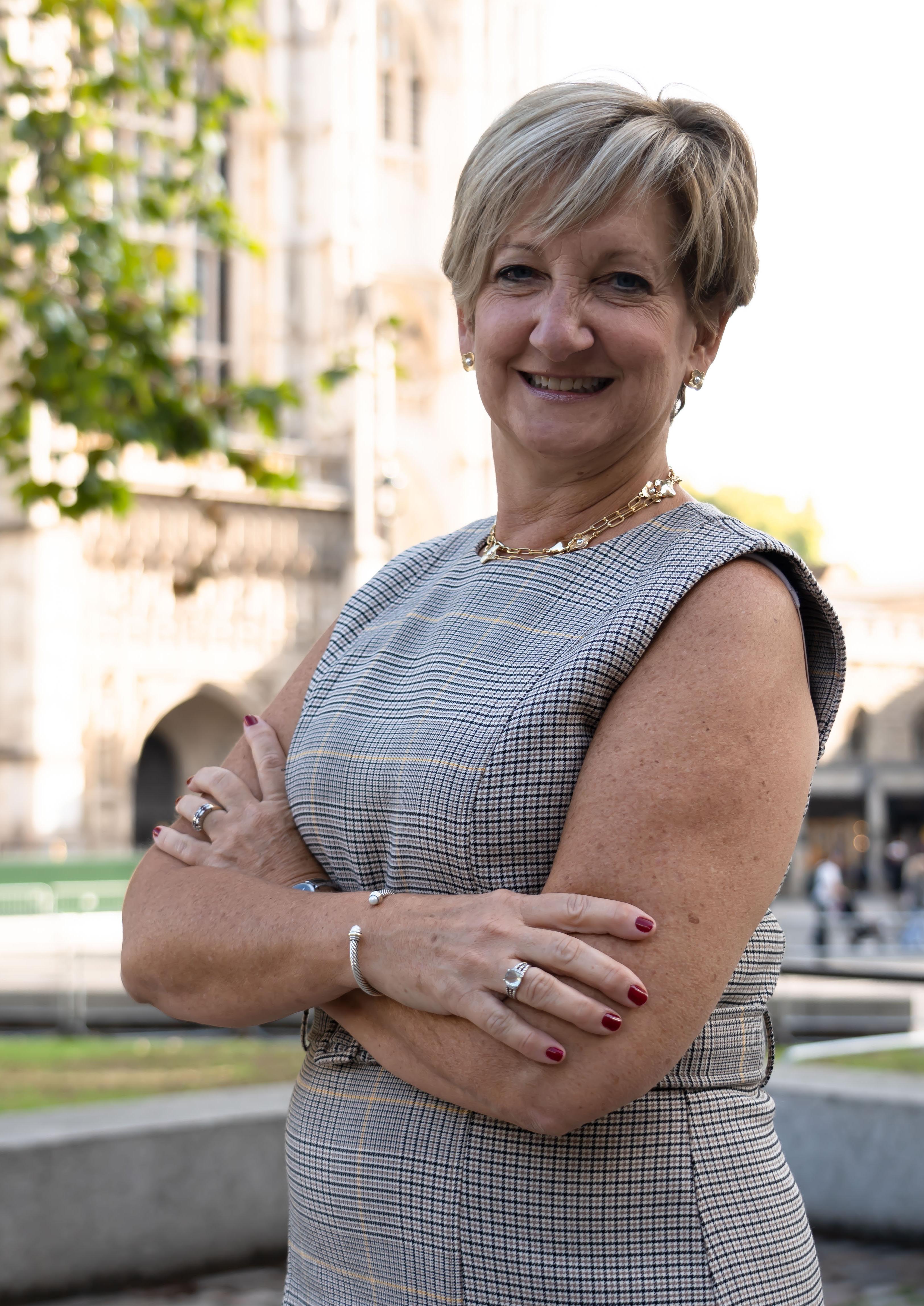
Brutally honest. That’s a phrase that springs to mind when talking procurement transformation with Sue Spence – Vice President, Global Sourcing & Procurementat FedEx Corporation.

Drafted in by the shipping and transportation giant a little over nine years ago to build a centralised sourcing and procurement operation from scratch, straight-talking Spence wasted little time in making a big impression.
“One of my favourite phrases is ‘begin with the end in mind’,” she says. “My approach to designing the future state of sourcing and procurement at FedEx was to first define what world-class looked like for our function. We came up with seven characteristics of a bestin-class organisation and then gave ourselves a brutally honest assessment (red, yellow, green) on how close or far apart we were from those characteristics. There was a whole lot of red back in 2013, but by 2018, it was a whole lot of green.”
Let’s just put the scale of the task Spence faced into perspective. In fiscal year 2022, FedEx delivered 3.1 billion packages. That is almost 8.5 million packages per day, delivered globally, by plane, train and truck. Over 550,000 people work for FedEx, literally juggling billions of moving parts, schedules and itineraries.
FedEx Corporation, on driving the organisation’s procurement
 SUE SPENCE VICE PRESIDENT, GLOBAL
SUE SPENCE VICE PRESIDENT, GLOBAL
A great deal of that US$17bn annual Spence spend goes on fuel, and when there is disruption in the supply chain, like during the Colonial Pipeline cyber attack, it would be easy for FedEx operations to slowly run out of gas – were it not for robust risk assessment in the organisation’s supply chain. This is where Spence – and the sourcing and procurement team she has shaped – really shows her value.
Prior to joining FedEx, Spence had a 28-year career with United Technologies Corporation, in positions of increasing responsibility at the aerospace divisions of Pratt & Whitney, Hamilton Sundstrand and Sikorsky Aircraft as well as a key leadership role in Sourcing at the UTC Corporate office. She had multiple roles of traditional procurement, strategic sourcing as well as managing continuous improvement for both the assembly and maintenance and repair operations at Pratt & Whitney – experience that has proved invaluable in her FedEx role.
“Take a leap of faith and be more confident in your abilities. There is never a perfect time to go for the big job or challenge”
SOURCING & PROCUREMENT, FEDEX CORPORATION
“My time managing continuous improvement taught me the criticality of the measurement system as well as ‘learning to see’ through process mapping, root cause and corrective action, and especially in business processes where there is so much opportunity to streamline,” she says. Spence brought that methodology to FedEx, which proved an extra challenge as she was an ’outsider’, but also gave her the distance from the company to see a clearer route forward. But when you are tasked with building a world-class procurement team, what are you looking for? Spence is quick to list: demonstrating category expertise; managing effective stakeholder relationships; making decisions based on data, not emotion, and monitored by a robust measurement system; focusing on process improvement to increase productivity; raising the bar on performance for both suppliers and employees; and leveraging spend across the entire book of business you have with your suppliers. Recognising that this is a Herculean task for an organisation as complex and vast as FedEx, it’s also essential to proactively develop and manage the existing talent on your team. And that’s just for starters.

TITLE: VICE PRESIDENT, GLOBAL SOURCING & PROCUREMENT AT FEDEX CORPORATION
INDUSTRY: FINANCIAL PACKAGE FREIGHT DELIVERY
LOCATION: UNITED STATES
Joining FedEx in October 2013, Sue leads a team managing US$17bn of spend, systems and policies governing the global sourcing and procurement process. Sue serves as a member of several Supply Chain Industry and University councils and advisory boards, and in 2020 was honored with the Institute of Supply Management’s J. Shipman Gold Medal Award, a recognition of individuals whose career accomplishments have advanced the supply chain management profession. Prior to FedEx, Sue spent 28 years at UTC in positions of increasing responsibility in Supply Management and Operations Transformation at Pratt & Whitney, UTC Headquarters, Hamilton Sundstrand and Sikorsky Aircraft.
Company
“In order to drive such a large transformation, you need to understand what you are getting into and do not underestimate the level of energy it will take,” says Spence. “This isn’t just referring to hours in the day, but mental energy to drive toward something new, especially in an organisation where outside executives are unusual.
“Be an evangelist about the mission and transparent with your team as much as possible; give frequent feedback and always explain what the accomplishment of the team’s goals can mean to their career. Be decisive, once you have allowed for multiple points of view to be heard. Don’t be afraid of the stretch goal and ensure when you ask for resources (both people and budget) you have a solid business case for your request.”
So just how did Spence achieve the sourcing and procurement transformation FedEx was hoping for? She says it was down to a number of what she calls guiding principles – five pillars that delivered the desired results. Lucky for us, she is happy to share:

• INCLUSION – include every one of our managers and their teams in creating the enabling initiatives that would help us accomplish the best-in-class characteristics, and allow those ‘future state teams’ to lead the execution of these projects.
• ALIGNMENT – socialise and gain alignment with our key stakeholders inside the company so they understand WHY we were undertaking the journey, HOW we would measure success, and WHAT service levels they could expect from us. In the first six months I was there, I met with 100 of the top
SUE SPENCE VICE PRESIDENT, GLOBAL SOURCING & PROCUREMENT, FEDEX CORPORATION“Don’t be afraid of the stretch goal and ensure when you ask for resources (both people and budget) you have a solid business case for your request”
executives of the company personally to explain the mission and gain their support for it.
• COMMUNICATION – frequent updates to my entire team about the progress of each of the initiatives and over communicate why they were important, how they contributed to the mission and how our value would connect and contribute to FedEx’s overall value for our stakeholders (employees, customers, and shareholders).

• ACCOUNTABILITY – commit to the team to train and coach them as much as possible so they could become worldclass sourcing and procurement members but hold them to a very high level of accountability.
• TRANSPARENCY – create measurement systems for our team, both qualitative and quantitative; act with data and drive relentlessly to root cause and corrective actions for issues we uncover as we perform our work and deliver our value.
“Take a leap of faith and be more confident in your abilities. There is never a perfect time to go for the big job or challenge. Read all the time, research anything that seems interesting whether it is business related or not (satisfy the curious mind). Never, ever think you have to choose between your family and your job.
“Family/kids, if you are lucky enough to have them, always come first. Providing for them by working hard and accelerating your career is not choosing the job first. You are providing a role model for them and having your own professional satisfaction, wherever you are in your career, is important to them because you will be happier.”
In 2020, Spence won the coveted Institute of Supply Management’s J. Shipman Gold Medal – recognition of her advancement of the procurement and supply chain management profession. She is suitably modest about her achievement, saying her grown daughters now believe “mom may have a good idea or two every now and again” while also saying it has helped boost her LinkedIn connections. But don’t be fooled for a second – Spence appreciates the gravitas of the award, and her position as a role model both within procurement and in general.
“I attribute that to a diversity of experience within procurement – from the beginner level all the way up to the Chief Procurement Officer role, both on the direct as well as indirect side in very different industries,” she says.
“In business generally, I attribute that to working for my first 29 years in a very male-oriented environment that was also engineering focused. I am an economics and political science major with an MBA, and learning the technical side of the business presented quite the challenge.
As you can probably tell by now, as you would within five minutes of sitting face to face with Spence, her leadership style is inclusive, transparent, decisive and what she calls “biased for action”.
“My team will tell you I push like hell and am always digging for more info, more achievement, what’s next,” she says. “I love the debate and will switch sides of the debate to hear how they will defend their positions; I want them to be confident and anticipate as many questions as possible. I’ve often said if you can get by me, you are ready for anyone!”
“A non-technical female in a maleoriented engineering-focused industry…. success took grit, resilience and asking a whole lot of questions. Being curious was/ is a critical skill that has helped propel my career.”
Speaking at Procurement & Supply Chain LIVE London in October, Spence had the audience riveted both in her keynote session and the closing panel discussion. Respected and revered by her peers and the next generation of procurement professionals alike, she is a warm, honest, and supremely talented leader that other leaders can learn from. Which is just one reason why we expect Spence to continue

“My team will tell you I push like hell and am always digging for more info, more achievement, what’s next”

“A non-technical female in a male-oriented engineering-focused industry….success took grit, resilience and asking a whole lot of questions”
to drive the shape of procurement in the foreseeable future. So what does she think that looks like?
“The transactional, repeatable work that we did 30 years ago will and should be automated and as touchless as possible,” she says. “The focus of our talented teams has to be strategic, market-savvy, innovative, and value-driven so that we are

seen less as the back-office support group and more as the partners for the business.”
You can imagine procurement professionals around the world nodding in agreement with that.
Aleksander Hajdas, Lead of JTI’s Procure-to-Pay (P2P) programme, on why P2P is so much more than just integrating procurement with accounts payable
 WRITTEN BY: ILKHAN OZSEVIM
WRITTEN BY: ILKHAN OZSEVIM
Aleksander Hajdas joined JTI (Japan Tobacco International) as Lead of the Procure-to-Pay (P2P) programme in 2021. His goal is to transform JTI’s ways of working by eliminating complexity and leveraging technology to build new best-in-class processes so its teams can excel. To this end, his key focus has been to encourage procurement and finance teams to closely engage with each other by streamlining end-to-end processes.
The current landscape of P2P at JTI JTI started its Global Business Services (GBS) journey at the beginning of 2020. Hajdas says: “The whole team was ramped up under pandemic conditions. But now, 3 years after the pandemic took hold, we are already being perceived as a mature organisation with a wide portfolio of services – and our appetite is concerned with both evolving and bringing a world-class experience to our customers. Our value really lies in the knowledge that we’ve gathered into a single, comprehensive stream.”


The e2open connected supply chain platform provides the end-to-end visibility and collaboration you need to tackle unpredictability. Build trust and confidence with your channel, supply, logistics, and global trade partners. Take control of supply constraints through direct procurement and meet customer commitments in the face of disruptions and scarcity.
The connected supply chain. Moving as one™. www.e2open.com
E2open and the e2open logo are registered trademarks of e2open, LLC, or its affiliates.
ALEKSANDER HAJDAS, PROCURE-TO-PAY (P2P) PROGRAMME LEAD, JTIAs one of their first ever transitioned workstreams, P2P is at the very forefront of JTI’s GBS-led transformation. Hajdas says: “We are introducing self-learning tools and building process-mining capabilities.
The coming years are going to be quite exciting

Over the last few years, customercentricity has emerged as a key metric for the entire P2P industry. “This includes not only the quality of service we offer to our external stakeholders, but also – and maybe most importantly – the experience we provide to our teams,” says Hajdas.
A common misconception concerning customer-focus is that it entails executing on everything that an organisation is asked to do. This was the classical approach to customer focus. But that has changed. “Now,” says Hajdas, “we endeavour to discover improvements, together with all our partners. As P2P leaders, we ought to educate our customers on how things can
“As P2P leaders, we ought to educate our customers on how things can be done differently and what excellence really looks like”
for us.”
be done differently and what excellence really looks like.”
In that regard, Hajdas observes that JTI’s P2P programme inspires the possibility of more complex decisions being made. Opportunities are not being greenlit based entirely on financials: “Non-quantifiable benefits are increasingly more important as we come to appreciate the actual quality of outcomes. We are able to prove that with better quality, comes added value. This approach will eventually lead
to efficiencies that might have been otherwise missed.”
How organisations are leveraging technology to gain a competitive advantage in their P2P processes
The way JTI’s P2P programme gathers and leverages data is crucial. Hajdas says: “We all saw poor data quality being recognised as a high risk for countless projects. Enterprises that are able to flip the quality of data to their advantage through leveraging technology

“As we mature in our journey to automate, capacity release should be re-invested in upskilling and retraining the teams”
will inevitably get ahead. The next step is process automation, which is extremely data-reliant.”
For Hajdas, the future of P2P rests unequivocally on further investments in new technologies such as machinesupported processes and insights from data. “However,” he says, “as we build our roadmaps and plan our budgets, I would pay special attention to legislative
changes, especially downstream in Accounts Payables.
“Governments are looking to eliminate tax leakages by implementing strict e-invoicing regulations. Navigating between all the different platforms and figuring out how to align our internal requirements with those that are mandated by the authorities will be a challenge. For some countries this will have already materialised this year. For many others, these critical regulatory changes will take effect in 2024.”

When asked which innovations he expects to see emerge in the P2P space in the next year or so, Hajdas replies: “Perhaps not a specific innovation – but an innovative approach to how we invest across procurement and payables is likely.
“We are so used to looking for one-size-fitsall solutions that will solve all of our challenges. However, I think that’s not always the most optimal decision, and sometimes it’s just not possible to deliver on such expectations.”
At present, there are many start-ups which, rather than solving the inevitable cascade of problems, specialise in solving only a very few. On some occasions, a dedicated fix may just be the right approach.

“If we sign up early enough,” says Hajdas, “we might just get the perfect solution, as start-ups are more flexible in accommodating clients’ needs. However, to maintain all of these integrations would require an increased demand for IT support. Whatever the case may be, I expect the trend in allocating a portion of the budget to smaller-scale companies and start-ups to only get stronger over the coming years.”
Another trend that Hajdas feels will most likely continue is the struggle for talent. He says: “In the move from transactional organisation to transformation hub, further investment in technology or standardisation is going to trigger an increased demand for the right people with the right skills.
“As we mature in our journey to automate, capacity release should be re-invested in upskilling and retraining the teams. As a consequence, it’s possible that some organisations will choose to outsource extra processes in order to drive additional benefits, particularly if there is not enough scale inhouse.”

“Our appetite is concerned with evolving and bringing a world-class experience to our customers”
 WRITTEN BY: TOM SWALLOW
PRODUCED BY: MIKE SADR
WRITTEN BY: TOM SWALLOW
PRODUCED BY: MIKE SADR



Anyone harbouring a passion for adventure and sustainability will no doubt have heard of the company leading the market for electrified pickup trucks.
Not only does Rivian boast sustainability credentials across its entire business, it’s also a business built with the planet at the forefront of all its activities. Yet, while there are many exciting aspects to highlight, the critical element of Rivian’s story is the “design and development of categorydefining electric vehicles”, in the words of the company’s Director of Indirect Purchasing, Brad Hood.

We often see the company through the consumer lens. Thousands evangelise the clean, robust, unique style of the Rivian R1T and R1S—its pioneering EVs, the pinnacle of the environmentally and socially responsible business.
Founded in 2009, the Rivian story began with a vision for sustainable mobility. As an automotive enthusiast himself, the company’s founder, RJ Scaringe, saw that the two things he lived for—cars and nature— were not compatible in the long-term. This conclusion formed the very basis of the company, which holds an integral place in the electrification of automotive.
Brad Hood, Director of Indirect Purchasing at Rivian, on the benefits of a ‘blank canvas’ and how the EV manufacturer implements sustainable procurement
“He created a product that was a more sustainable alternative to the fossil-fuelburning carried out by internal combustion engine vehicles. He really wanted to facilitate a transition to more neutral energy transportation, not only for our generation, but for our kids', kids’, kids,” says Hood.
“It's a multi-generational purpose that goes beyond any one of us, which is what drives the overall culture at Rivian: we're here for something bigger than ourselves.”

Of course, there’s more to Rivian vehicles than the fact they run on electric propulsion. The company prides itself on sustainable sourcing and leveraging a circular system, right from the design stage. Its batteries can be easily removed for either recycling or ‘second life’ applications. When it comes to the interiors, vegan leather and other animal-free materials are used, with mid-life repairability in mind.
Beyond the product itself, sourcing also involves the unique procurement of oceanharvested plastics for its dunnage containers and other packaging solutions. Such actions earned the company the 2022 Excellence and Reusable Packaging award from the Reusable Packaging Association.
“If we are working on an e-sourcing event or an auction, we can leverage these templates”
“We use the most sustainable products we can and when we went public, 1% of the company went to the Rivian Forever Fund,” says Hood.
“We think about how to operate responsibly within the plant. When we began the conversion of the old Mitsubishi plant to the new Rivian plant, we used some of the old steel to make tables, a mezzanine—and we even repurposed old robots as a door holder for the conference room.
“We reused things, and maybe went above and beyond. Instead of scrapping it, instead of getting rid of those materials, we thought, ‘how can we repurpose that and reuse them?’.”
As a new entrant to the automotive industry in 2009, Rivian was built with sustainability in mind. And being a new business gave the company a competitive edge to not only grow, but advance the use of new technologies and lean processes.
Hood explains that when he joined the organisation in 2018, the procurement function was significantly smaller than it is today, but this has allowed the company to take an approach that is driven by technology.
“When I joined, there were 500, 600 employees. There were about three people within our department,” Hood says. “Now, the total company size is more than 20 times that.”
“At the beginning, we had a shell of a manufacturing plant. Now, we're fully operational, building three different vehicles with multiple different variations in Normal, Illinois.”
TITLE: DIRECTOR OF INDIRECT PURCHASING
INDUSTRY: OIL & ENERGY LOCATION: DETROIT, USA
Brad shifted careers from manufacturing and production planning to procurement after graduating from Western Michigan University with a major in Integrated Supply Chain Management. After spending most of his procurement career in consulting, he joined Rivian at the tail-end of their stealth mode in 2018 to help build their procurement department. Rivian has experienced tremendous growth since then, which includes the indirect procurement team that Brad leads. This has proved both Rivian and Brad the opportunity to grow the procurement organisation in the same manner as Rivian talks about designing the vehicles, from a blank

Essex Weld Solutions is a global company servicing customers across North America.
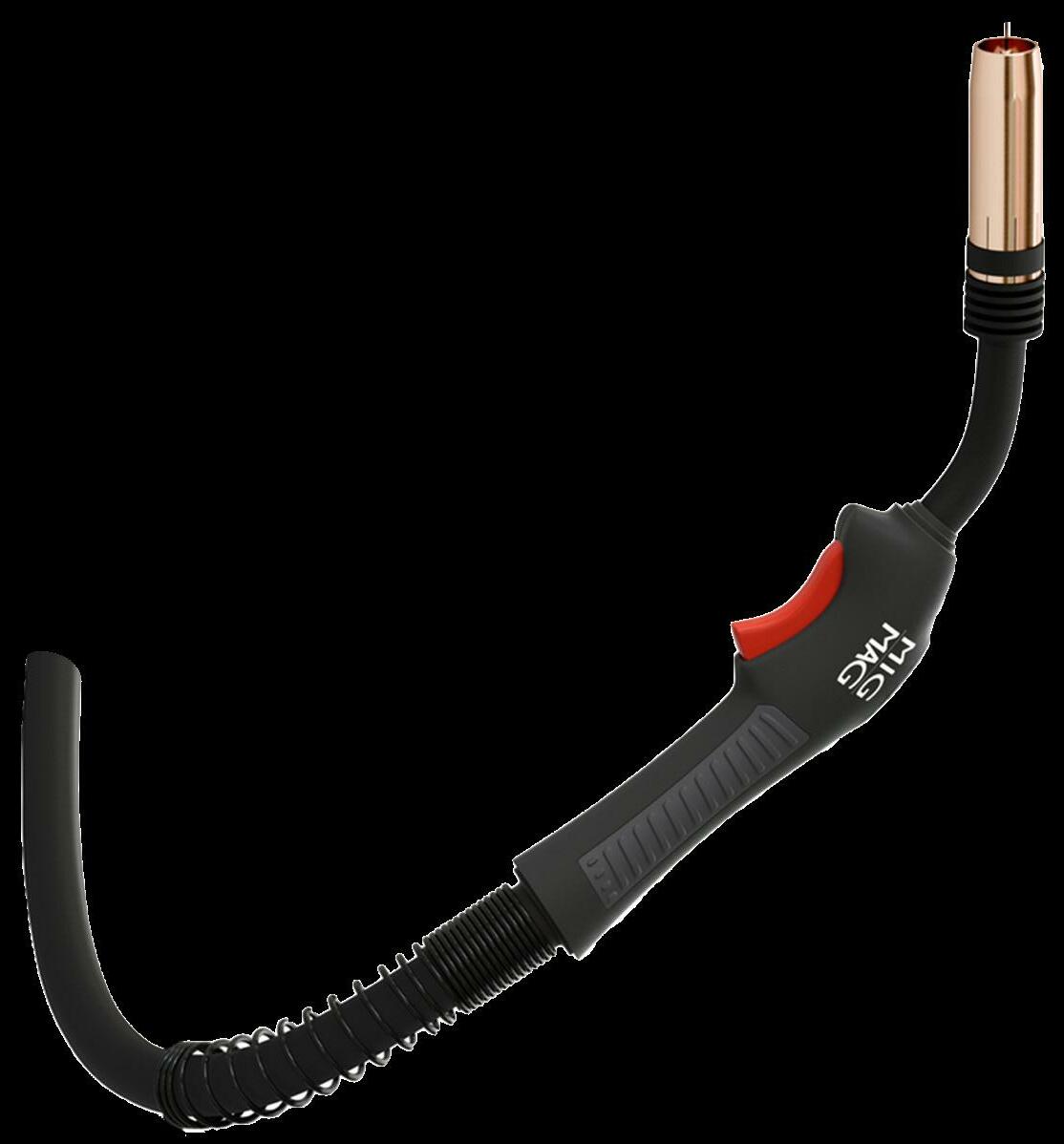


Our focus is the development and global supply of custom and standard automotive racking products. Essex Weld Solutions is a “Full Service Manufacturer” of custom automotive containers from bins to racks. We offer Designs, Prototypes, and high-volume production. This ensures superior quality control, something our customers expect and deserve.
LEARN MORE



Essex Weld Solutions began with a handful of customers and a production plant in Essex, Ontario. From the start, people were our strength. We have selected a team with a focus on integrity and trust, which is the foundation that we have built our reputation on. Keeping our customers’ needs at the center of every decision is what has led us to strive for excellence in everything we do. These values have been instilled in all our team members ensuring we all work together towards these goals.

Twenty years later, we have expanded to multiple locations across three countries. Our Canadian plants include Leamington and Essex, Ontario. We also have American plants in Laurens, South Carolina and Warren, Michigan as well as one plant in Durango, Mexico. All locations boast on-site engineering and full production capabilities so that we can provide in-house concepting, designing, prototyping, and large-scale production allowing us to be a one stop shop for our customers’ projects.
Over one-hundred years of combined experience has taught us that investing in the latest manufacturing technology is necessary to provide top quality products. Our plate and tube lasers, break presses, robotic welders, and full powder coat system allow us to maintain high standards across all locations. Our manufacturing process is monitored from concept to delivery using

our own ERP system, Edata+, with real time inventory levels, production status, and barcode tracking labels. This enables us to maintain inventory of common materials at all locations and efficiently control quality and delivery timing.
Our innovative approach to the everevolving world of manufacturing means we never stop improving the service we provide our customers. As manufacturing shifts to a greater integration of robotic production lines, we have developed a Metrology team that exclusively handles the precise quality control required for those projects. These continuous improvement efforts allow us to expand our capabilities so that we can better serve our existing customers, and reach out to new ones, as their needs change, especially as the shift to Electric Vehicles continues.
The story behind sustainability Rivian entered the automotive industry at an interesting period. The company was very much undergoing its formation when major carmakers first started thinking about EVs, which, at the time, were seen as a ‘nice-to-have’.
With a passion for automotive and a desire to protect nature in all its glory, Rivian’s CEO, RJ Scaringe, set about building his dream: a vehicle with no limits and an adventurous edge that would allow drivers to explore harmlessly, reinvigorating their love for the environment.
The company first piqued interest with its two EV models. The R1T, its pickup truck model, and the R1S, which leverages the same great technology in an SUV body. In 2022, the company reached a major milestone with the announcement of it supplying electric delivery vans to Amazon—the initial quantity being 10,000, with potential for the e-commerce giant to expand this to 100,000.
Rivian cultivating a business on what was seemingly a blank canvas meant that the company worked through many challenges in its indirect procurement function to ensure that it remained true to its roots.
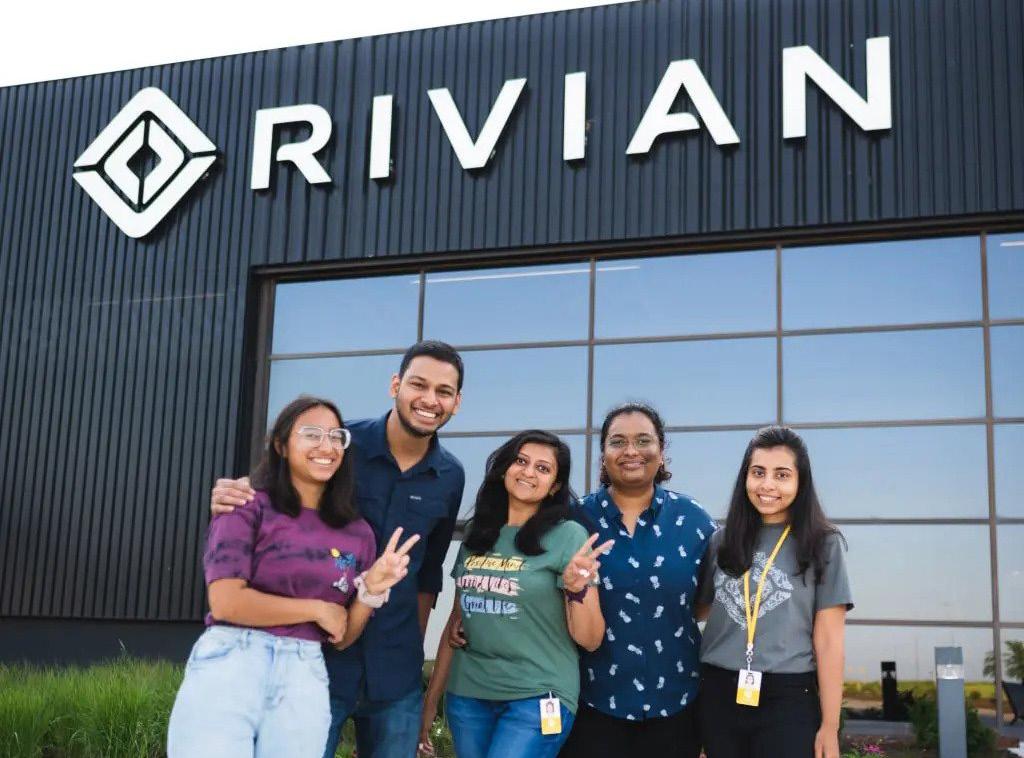

The solutions adopted by the company were pivotal. They allowed the team to focus on more hands-on tasks, alleviating the need for human input in the day-to-day processes.
“We had the opportunity to build an organisation that is truly best-in-class, from the ground up. We don't have to change any old behaviours; we can create new ones, and in the right manner, too. Balancing the two of those meant knowing
what we needed to do daily versus what was required to build a foundation for the future.
“This was the biggest challenge, balancing the short-term and long-term needs. There are so many day-to-day requirements, but we must be able to balance the day-to-day work, while building the foundation of the organisation we desire to build.”
Another major challenge that wreaked havoc on all supply chains—and inevitably affected Rivian—was the COVID-19 pandemic, which meant navigating a remote-working environment while scaling and taking on new team members across the globe.
 BRAD HOOD DIRECTOR OF INDIRECT PURCHASING, RIVIAN
BRAD HOOD DIRECTOR OF INDIRECT PURCHASING, RIVIAN
“We're fully operational, building three different vehicles with multiple different variations down in Normal, Illinois”

With data, automation, and AI, we help organizations transform and build value across the board. Explore how people and companies are reimagining supply chain networks at accenture.com
These trying times meant the company had to adapt to onboarding and training the team online, without knowing when new starters would come into contact with their colleagues.

As a result of these challenges, the company adopted ‘category cards’ to create ease in the purchasing process. This is just one of the ways in which the company streamlines the onboarding process, automating indirect procurement processes to allow a smaller team to manage more purchases.

“When you log in, you see the category, you select that category, and it gives you a brief description to tell you if you can buy it from a catalogue—so we can drive more spend to a catalogue—or it gives you a direction to reach out to a purchasing manager or supplier,” Hood explains.
“That way, we can touch more spend with a smaller team, increasing the addressability of the spend and continuing to educate the rest of the organisation to drive spend to our preferred buying channels.”

Further sourcing platforms used by the company provide further standardisation of indirect procurement processes. This includes supplier negotiation preparation, which can largely be templated—as Hood explains.
“If we are working on an e-sourcing event or an auction,
we can leverage these templates. “Automatically, a quantitative proposal comes in and we can analyse that based on our previous price paid, other proposals, market intelligence,” says Hood.
“We can look at that pretty quickly and find any outliers, identify where the best quantitative values are and work with our stakeholders as we incorporate the qualitative aspects. These tools really allow us to work faster.”
While businesses would often apply the term ‘digital transformation’ to their operations, it seems Rivian is beyond this, ensuring that technology is embedded into all processes from the earliest possible stage as part of its strategic approach to growth.
“It's a multi-generational purpose that goes beyond any one of us, which is what drives the overall culture at Rivian”

“It can standardise things and reduce errors but, for us, it allows us to actually promote and enrich the daily operations of those working in data-entry roles. They've now gone into more category management roles and supporting student sourcing, as well as those roles where we can marry technology and experience,” Hood explains.
As the company looks to ramp up the production of EVs, technology will become an integral component in allowing the organisation to scale its operations and meet demand.
The company will continue to add value to its services sustainably, with


“We use the most sustainable products we can and try to be more sustainable with the materials of the vehicles”
sourcing playing an integral role in reducing emissions down the supply chain. As the company expands its own charging network, technology will allow personnel more time to explore renewable energy sourcing, making sure that Rivian customers are charging up with clean energy.


Meeting its strategy for success hinges on its use of data in the procurement functions to standardise processes and focus on saving costs, time, and limiting negative
climate impact—with the overarching aim of eliminating it. As such, the procurement team will look at supplier spend and consider whether its dollars are going towards the desired suppliers.
While much of the technology adoption and integration is carried out in-house, Hood explains that technology partners will be leveraged by Rivian to meet demands unique to its processes.
Hood says: “We understand what we want to do in theory—on a whiteboard—but how do we integrate that into the actual software that’s more commonplace?”
In trying to answer this question, the company has been able to push technologies to their absolute limits, which is a benefit to Rivian, but also the partner that supplies that solution—making Rivian a testbed ripe for procurement solutions.
Mark Perera, Co-Founder and CEO of supplier collaboration and innovation platform Vizibl, on overcoming ESG obstacles though skills, processes and technology




Mark Perera is CEO and Co-Founder of Vizibl, the company behind the world’s leading supplier collaboration and innovation platform. As CEO, a large part of Perera’s role involves speaking directly to Vizibl’s customers and prospects to learn more about their challenges, gaining an understanding of how Vizibl can work alongside them to iterate on and expand existing offerings to meet those needs.




Perera feels that “there has been an overall lack of real progress in sustainability”, though he emphasises that “this isn’t something that
can be landed at the door of procurement alone”, with “some mitigating factors at play that have also prevented things from moving forward at the pace that they need to”.
He says procurement has had more “immediate” issues to deal with in the supply chain, mainly caused by the hangover from COVID-19, the ongoing Russian war in Ukraine, and – for people in the UK – Brexitrelated supply problems. Therefore, ways to reduce scope 3 emissions in the value chain, for example, have once again had to take a back seat.
Alongside those issues, however, he thinks there’s also a concern over a lack of real movement on actually tackling sustainability-related issues. At Vizibl, there’s a saying that “action beats inaction every
 MARK PERERA, CEO AND CO-FOUNDER, VIZIBL
MARK PERERA, CEO AND CO-FOUNDER, VIZIBL
time”, yet there are still too many cases of following lagging metrics rather than leading ones.
Perera says: “Businesses are becoming better and better at measuring their impact, but what are they doing about it? Significant progress has been made in a few areas, but
in many cases, the answer remains that we aren’t doing enough.”
How sustainability efforts have been impacted by disruptions Perera believes that, in general, climate change research and collaboration work has been affected by global and geopolitical events over the last few years. Russia’s invasion of Ukraine, in particular, has stymied collaboration between not only nations, but in some cases, entirely cut off supply chains that flowed from East to West.
“The war in Ukraine has greatly reduced global access to previously reliable sources of wheat and oil,” he says, “leading to shortages that have increased prices by around 20% and 50%, respectively – the knock-on effect of which is projected to cost the global economy around $2.8tn in lost output by the end of 2023.
“BUSINESSES ARE BECOMING BETTER AND BETTER AT MEASURING THEIR IMPACT, BUT WHAT ARE THEY DOING ABOUT IT?”
“Naturally, these more urgent, pressing issues for supply chain and procurement leaders have forced the sustainability agenda once again into the back seat; the looming and overwhelming threat of climate change is, after all, not as immediate a problem as ballooning day-to-day costs for both businesses and consumers alike.”
Nevertheless, Perera says that, with 2023 almost upon us and the planet looking less and less likely to avoid careening towards hotter temperatures – in fact, we now have a 50% chance of exceeding the 1.5°C-abovepre-industrial-temperatures limit before we even see 2030 – there has never been a more important time for ESG goals to be at the top of the corporate agenda. And procurement has a unique opportunity to lead the way.
Top
“In an environmental sense, while there’s plenty of much-needed talk about reducing
greenhouse gas emissions, water security needs to move rapidly up the agenda of business leaders,” says Perera.
The UN predicts a 40% global shortfall in water supply by 2030 if current consumption and production patterns fail to change, while analysis by NASA suggests that 13 of the world’s 37 largest aquifers have been depleted to the point where regional water availability is threatened.
“Water is an essential resource for many companies, especially those that have
manufacturing in their direct or indirect operations. As we move through the 2020s, it’s essential that CPOs prioritise sustainable water usage throughout their operations.”
Moving into the social portion of ESG, Perera believes that it continues to make good business sense for CPOs to have a robust methodology for reporting on human rights in their supplier base.
Businesses can find themselves involved in lawsuits, suffer reputational harm, and
miss out on opportunities and investments if they fail to properly care for the people who keep them in business. And, against the backdrop of modern slavery cases rising significantly in recent years – 86% of which took place in private sector supply chains – human rights must remain top of any CPO’s social agenda.
From a governance standpoint, Perera says that sustainable sourcing is both an established practice for CPOs, and also one that’s going to need further collaboration and innovation to remain viable. With increasing interest in greener versions of much-needed materials like steel and aluminium, a new issue is emerging: the lack of supply to meet the demand.
Without very deliberate decisions made by buying companies to adhere to sustainability principles, this lack of supply will both force companies to revert to sourcing original materials and drive up the prices of recycled alternatives.
MARK PERERA, CEO AND CO-FOUNDER, VIZIBL“SUSTAINABLE SOURCING IS BOTH AN ESTABLISHED PRACTICE FOR CPOS, AND ONE THAT’S GOING TO NEED FURTHER COLLABORATION AND INNOVATION TO REMAIN VIABLE”
“THERE HAS BEEN AN OVERALL LACK OF REAL PROGRESS IN SUSTAINABILITY, ALTHOUGH THIS ISN’T SOMETHING THAT CAN BE LANDED AT THE DOOR OF PROCUREMENT ALONE”
VIZIBL
“The most mature procurement organisations will need to harness the power of supplier collaboration and open innovation to transform unsustainable categories into brand-new opportunities for both their own business and the wider market.”
Most beneficial factors for CPOs looking to drive ESG initiatives
Perera believes that it can be tempting to try and pool resources into one area and focus primarily on capability uplift, process improvements or new technologies individually. Unfortunately, the inconvenient truth is that it’s all three in concert that will be necessary if CPOs are to meet ESG
challenges head-on with the urgency that is required.
He says that while it’s commonly quipped that without robust processes, you have teams that work ineffectively, without appropriate technology, you have teams that work inefficiently, and without the right (skilled) people you don’t have a team at all.
Perera doesn’t see any of these as viable options as we address the sustainability hurdles facing us. The combination of appropriately skilled team members using robust, fit-for-purpose processes underpinned by enabling technology is the only way in which CPOs will be able to deliver on strategic sustainability goals in the way that they need to: systematically – and at scale.


LivaNova is a global medical technology company built on decades of experience and a strong commitment to their patients. Their focus is on transforming lives with products and therapies for the head and heart, operating in Cardiopulmonary, Neuromodulation and Advanced Circulatory Support technologies.
For LivaNova, it’s health innovation that truly matters
Their diverse product portfolio and pipeline include the following therapeutic areas:
• Advanced Circulatory Support
• Cardiopulmonary
• Difficult-to-Treat Depression
• Drug-Resistant Epilepsy
• Heart Failure
• Obstructive Sleep Apnea
Their Chief Procurement Officer (CPO), Jérôme Lesenechal, has spent his entire career in Procurement, coming from 17 years’ experience in Automotive, through multiple categories, before joining LivaNova in February 2018.
Lesenechal leads the global Procurement team in charge of strategic sourcing activities, both for indirect services and for direct material, as well as new product development.

LivaNova’s CPO, Jérôme Lesenechal, chronicles what it takes to provide life-changing medical services through technology, procurement and innovation

When LivaNova needed a medically certified touchscreen computer to communicate with their new revolutionary perfusion system monitors they turned to Teguar, who assembled a team of product design specialists and developed a custom computer meeting every single requirement of LivaNova’s requests.

Medical computers manufacturer Teguar on why its latest work on LivaNova’s heart & lung machine was so rewarding
It might be said a healthy bottom line is the most gratifying thing for a business leader, yet for organisations working in the medical sector, saving and improving lives offers rewards that are on another level entirely. Teguar builds medical and industrial computers, and its CEO, Jonathan Staub says one recent project in particular “felt extremely important” – its contribution to the development of the hardware component of the Essenz Patient Monitor, a medical device that is used by clinicians during Cardio-pulmonary bypass procedures.
The project saw Teguar working with LivaNova, a global medical technology company that specialises in products and therapies for the head and heart. LivaNova tasked Teguar with providing the hardware
component of the Essenz Patient Monitor, a medical device that provides continuous, advanced and insightful data to show the key parameters at all times during a case. “Cardiopulmonary bypass perfusion supports patients during open heart surgical procedures, by taking over the function of the heart and lungs,” Staub explains.
Teguar developed an all-in-one touch-screen PC that met the exacting specifications that all medical electrical equipment have to satisfy, for the performance of highly invasive procedures. But as well as this, Staub says it was hugely important that the PC was also pleasing on the eye. “We pride ourselves on the elegance of our products,” he says. “Elegance is an important part of who we are and what we do.”

Product not approved in all geographies. More information on the Essenz Patient Monitor as well as important safety information available on the LivaNova website.
Among the important services Teguar provides to customers is long-term availability of computer components – vital for healthcare equipment that customers might not be able to afford to replace for many years. The company also has “an experienced and agile” global team that can meet customers’ needs.

So what was it about the LivaNova opportunity that drew Teguar in?
“LivaNova’s mission is to support perfusionists and their patients during lifesaving procedures,” says Staub. The Essenz Patient Monitor is the realisation of this mission.
“That we could be a crucial part of the development of such a cutting-edge medical computer was an exciting opportunity and a challenge to us.”

“This means our responsibilities go from clinical studies to spare parts management, through serial production and corporate services,” he says.
The relationship between a MedTech company like LivaNova and their suppliers is, of course, crucial: in the end, the quality of those relationships will determine patient outcomes.
JÉRÔME LESENECHAL CHIEF PROCUREMENT OFFICER, LIVANOVA“Suppliers share our values,” says Lesenechal, “especially our purpose to improve the lives of patients (which speaks to one of our core values, ‘patients first’).
“I consider myself as accountable for the healthcare supply chain, and our suppliers are doing so, too.”
Supplier relationship management, in MedTech and beyond, has been growing to a level of importance higher than ever before. Contract obligations or Purchase Price Management are not enough to manage ongoing supply chain disruptions anymore, and it’s not only about the power dynamic between the company and its suppliers.
"There is an urgent need to extend the company's borders to external partners,” Lesenechal says, “because together, we are stronger and more creative in anticipating and fixing problems.
“The CPO especially needs to orchestrate brainstorming sessions with suppliers; this can be to get support for a
“I CONSIDER MYSELF AS ACCOUNTABLE FOR THE HEALTHCARE SUPPLY CHAIN, AND MOST OF OUR SUPPLIERS ARE DOING SO, TOO”
difficult-to-source component, to drive a game-changing design evolution, or to influence business decisions.”
Lesenechal expresses that he has, on several occasions over the last few years, seen that the value coming from that type of co-working is very high, compared to a standard purchase price discussion.
Regarding internal stakeholders, he believes that procurement must play a strong role in Product Lifecycle Management.
From supplier selection in a new product design phase to the phase-out of another one through the proactive management of the obsolescence risk, Lesenechal maintains that procurement’s partnership with R&D and marketing can have a massive impact on the sourcing agility, as well as the profitability per product – and that this is what procurement must drive.
Developing second sources, having a dynamic process of redesign for electronics, and revisiting specifications to make them easier to source are key.
“What we call ‘Sustaining R&D’ must now be fully integrated into procurement´s strategy, as well as to the daily management of supply issues,” he says.
People development ‘beyond resilience’ Resilience is becoming quite a common topic, and not only in business circles.
“Resilience remains super important, and management must keep working on it, but I
TITLE: CHIEF PROCUREMENT OFFICER
INDUSTRY: MEDICAL EQUIPMENT MANUFACTURING
LOCATION: MUNICH, GERMANY
Jérôme Lesenechal was named CPO of LivaNova in August of 2020. His role includes leading the global team responsible for the success of Liva Nova‘s Material and Services Procurement, ranging from contract negotiations to supply chain remediations, delivering consistent operational results for LivaNova customers.

In January of 2021, his role was expanded to include Replenishment Process transformation to answer to the global disruptions in Supply Chain. With this added responsibility, he works with teams across Production Planning, Tactical Purchasing and Logistics to continue the modernisation of critical supply processes that team members use to deliver a reliable and predictable replenishment.
“Procurement can leverage its new image and influence to move from an ‘instructions-taking’ department to a ’decision-making’ one.”
Before this, Jérôme was Global Director of Procurement for New Product Development at LivaNova, where he led multi-year sourcing projects to increase LivaNova‘s portfolio. He began his career in the automotive industry at Peugeot SA by leading multiple categories, as well as global sourcing activities.
believe the new profile of a strategic buyer must go beyond that, to reach a kind of ‘extreme ownership’,” he says.

Lesenechal understands that, first, procurement needs to realise that its role is now a key to success in troubled times. “Yes, it comes with many responsibilities, but it is also a noble purpose to secure the healthcare supply chain. Procurement must be super proud about that!”

Second, he holds that procurement can leverage this new image and influence to move from an ‘instruction-taking’ department to a ’decision-making’ one. He says: “For those who were able to navigate across the 2020-2022 period

with success, the gain in credibility to the executive leaders opens new possibilities of challenging the status quo.
“Then, the coaching that procurement can provide to a cross-functional team can be very valuable, for example to speed up the implementation of a new design, giving the supplier a seat in this cross-functional team. The ‘new-gen buyer’ is now a mix of programme manager and marketing influencer, on top of the traditional skills of negotiations and strategic leadership.”
On one side of the value stream, it’s important for procurement executives to leverage the suppliers’ own market intelligence to predict the unexpected. Lesenechal thinks that all these risk assessments and information are very valuable intelligence that can be used at
the highest level of the company to orient the global strategy.
On the other side of the value stream, you have the customer, or ‘the user’. Here, too, there is a need to develop and quickly
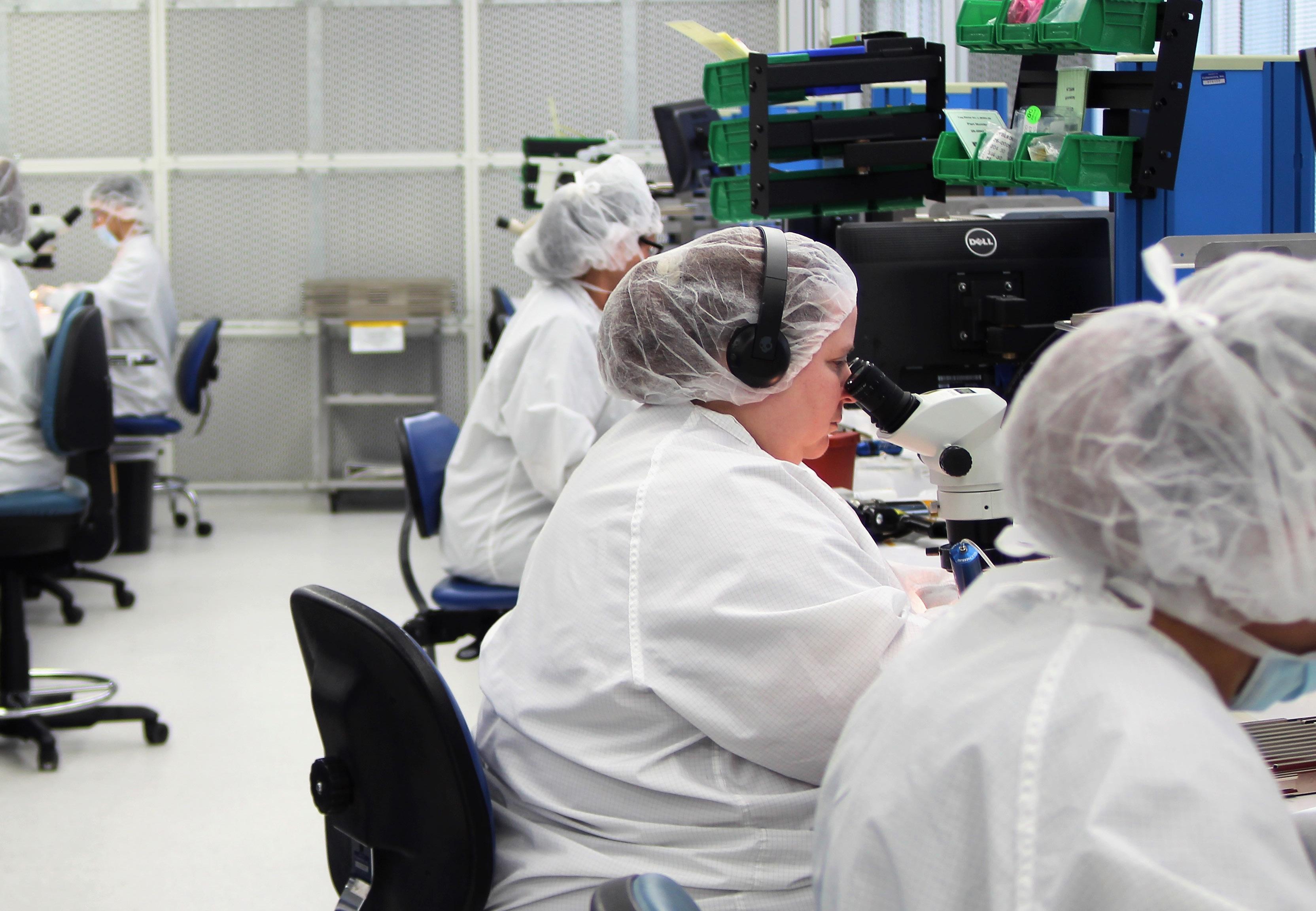
“AS LONG AS WE STAY CLOSE TO THE PATIENTS, THE USERS AND THE CLINICIANS TO UNDERSTAND THEIR NEEDS AND TRANSLATE THEM INTO SPECIFICATIONS, THE MEDICAL DEVICE INDUSTRY WILL KEEP ITS HIGHPERFORMANCE STANDARD”
JÉRÔME LESENECHAL CHIEF PROCUREMENT OFFICER, LIVANOVA
reinforce the relationship with the company's sales organisation, and with the final user.

“You will collect amazing data (about competition, about new needs, new market insights etc) that can influence your procurement strategy,” says Lesenechal. “I can tell you that you behave very differently when you know that a hospital has been waiting months for oxygenators for children, or that your main competitor is not predictable with its delivery plan anymore”.
Another layer of complexity is for LivaNova to procure, and thereby provide, these critical medical services, whilst balancing that against its Net-Zero ambitions.

And procurement is not only screening the current state: LivaNova also includes ESG considerations in each decision, in collaboration with corporate leaders.
Suppliers represent a large portion of their products’ bill of materials (BoM), and their customers also rely on them to control supplier engagements.
LivaNova’s next step will be to set up targets together with their suppliers internally, (travel, company cars, etc) for the commodities that are under management by procurement.
Continuous improvement on processes such as logistics can also help considerably. Redesigning the packaging, revisiting the supplier’s footprint to avoid long lead-time logistics – every decision can decrease the carbon emission of their sourcing activities and make their BoM more compliant with new and emerging regulations.
“FOR THOSE WHO WERE ABLE TO NAVIGATE ACROSS THE 2020-2022 PERIOD WITH SUCCESS, THE GAIN IN CREDIBILITY TO THE EXECUTIVE LEADERS OPENS NEW POSSIBILITIES OF CHALLENGING THE STATUS QUO”
Customers are prepared to reward companies that make ESG a central part of their mission.
“Procurement needs to act in a similar way and award business to the best suppliers in ESG,” says Lesenechal. “I believe that selecting a supplier with a very good rating can lead to better business for LivaNova and make us even more competitive in tenders.
“Given the way we need to balance deviations with additional action items to put us back on track, it’s easy to see why procurement needs to develop the right battle plan with stakeholders and suppliers.”
LivaNova’s partnership with Teguar LivaNova’s partnerships are crucial to helping them achieve their goals. One of their main partners is Teguar, an industrial and medical computer company.
Jonathan Staub (CEO of Teguar) and Lesenechal have been working very closely for many years to drive a new development.
The collaboration keeps LivaNova’s configuration as standard as possible, both to contain costs and to ensure the right design-to-source.
Lesenechal says: “There is no way that LivaNova or Teguar can influence market trends in consumer goods technology like laptops, but, together with the cross-functional team, we were able to limit customisation and other exotic specifications. This leads to better profitability on both sides, as well as better material availability for the sub-components.
“I need here to underline the great collaboration with our marketing and our programme management. Our team always managed the relationship with a dynamic and constructive approach.
“On its side, Teguar always challenged our requirements and design changes in the right way – and this is exactly what I expect from all my suppliers – helping us to bring to the market a product that will be sustainable both in terms of supply and costs of goods.”
Lesenechal is confident that LivaNova´s pipeline will match with customers’ expectations. “As long as we stay close to the patients, to the users and to the clinicians in order to understand their needs and translate it into specifications, the medical device industry will keep its high-performance standard.”
LivaNova’s products and therapies are used worldwide. With a presence in more than 100 countries, their team of approximately 3,000 talented people works to improve and sustain patients’ quality of life each and every single day.


Orienting to the future, Lesenechal says: “I believe the supply chain disruptions will remain my biggest focus in 2023, especially in electronics, costs containment and logistics management.
“We will continue our transformation of the replenishment process, and reinforce our partnerships with our strategic suppliers further. More than ever before, the integration of our suppliers into the company's strategy can make a difference in the design of sustainable products that fit with the market's expectations and in remaining predictable in lead-times despite all the headwinds.
“The last discussion I had some weeks ago with perfusionists and scientists from Belgium convinced me that these are procurement´s main missions for the near future. I am confident that LivaNova´s pipeline will match with customers’ expectations. As long as we stay close to the patients, to the users and to the clinicians in order to understand their needs and translate them into specifications, the medical device industry will keep its highperformance standard.”
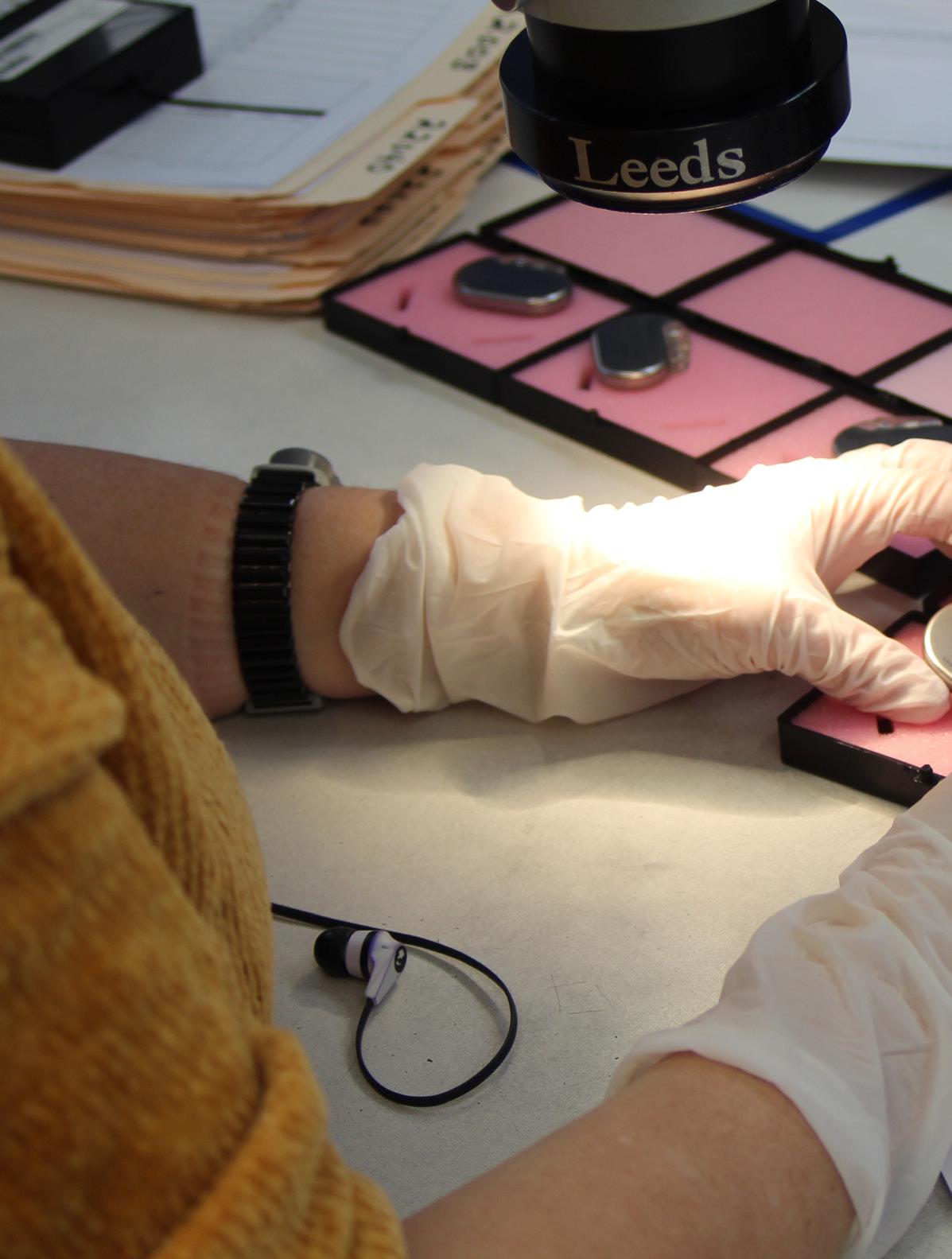

Major changes in technology, as well as the industry as a whole, are opening doors for important transformations.
In closing, Lesenechal says: “Areas we expect to grow or continue to grow in importance in the Medical Device industry are: 1) direct-toconsumer engagement, which has been a key for pharmaceuticals for years, but is just starting to gain traction in our market; 2) a continued shift toward less invasive/wearable diagnostics that can be used in the home setting; 3) better connectivity between implantable devices and patients and physicians with apps and the cloud; 4) more effective ways to meet with and train physicians remotely, including the use of AR/ VR technology; and 5) a continued shift toward more investment in clinical evidence to drive awareness, adoption and reimbursement”

“WHAT
MUST
BE
CHIEF PROCUREMENT OFFICER, LIVANOVA
Procurement takes place at board level. As such, the women that rise in its ranks are having a huge impact on crafting the present and future of procurement, supply chain and beyond.
Tested, proven, impressive and inspirational, these are the names and faces that are leveraging the market through their positioning in the procurement world; sitting at the helm of one of the most influential mantles across the private and public sectors – and growing.These are the Top 10 Women in Procurement.
With skill sets, expertise, vision & drive to surpass many men in the field, we take a look at the Top 10 Women in Procurement
A true veteran of Bank of America, Taryn Thomson – its Chief Procurement Officer –has been with BoA for almost 19 years. Though initially recruited as an analyst to the company as part of the Finance Management Associate Program (FMAP), she joined BoA as Assistant Vice President of Small Business Deposits and has worked her way up through the ranks.
Among her skillsets are analytics, portfolio management and financial modelling, credit, commercial banking, strategic planning, financial forecasting and more.
“Among her skillsets are analytics, portfolio management and financial modelling, credit, commercial banking, strategic planning, financial forecasting and more”
Jenny Koskinen, Chief Procurement Officer at Boeing, is a global commercial executive with nearly 20 years’ experience across oil & gas, mining, transport, and fast-moving consumer goods.


Koskinen has extensive skills across procurement & supply chain, marketing & sales, and business development and transformation. She has worked in blue chip organisations, lived in 6 countries, speaks four languages, and is recognised as a dynamic, international Senior Executive.

Kelly Bengston is responsible for enhancing Starbucks’ enterprisewide functional strategic sourcing and supplier relationships, creating consistent global sourcing processes, developing a sourcing talent management programme and building a valuesbased approach to working with suppliers across all categories of the business.
Bengston served as VP of Starbucks Global Supply Chain’s Strategy and Deployment team, a new team created to support Starbucks Supply Chain’s aspirations of becoming digitised; strategically aligning resources and priorities; and building capabilities through long-term capacity planning and supply chain intelligence.
A highly experienced Chief Procurement Officer working across multiple industries, Lisa Martin is a purchasing professional skilled in acquisitions, Facility Management (FM), strategic sourcing, business transformation, and Mergers & Acquisitions (M&A).

In 2018, Martin was listed in the top 30 Procurement Power List UK & Europe and, in 2013, she became the second woman ever to be honoured with the J. Shipman Award – conferred to individuals who've performed distinguished service for the cause and advancement of the supply management profession.
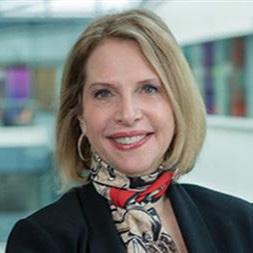
Join us at Join us at Procurement & Supply Chain Procurement & Supply Chain Live in London Live in London.






 PwC
PwC
Global Chief Procurement Officer since February 2022, Florence Tinsley-Roy has expertise in the transformation of procurement teams, as well as in developing local and global strategies.

Tinsley-Roy joined PwC in 2018, before moving into the role of Global Procurement Leader leading a team that negotiated global agreements for the benefit of the PwC network firms, while co-leading the supply chain work stream for PwC’s net-zero programme.

Tinsley-Roy has an MBA in Business Strategy and Procurement from the University of Birmingham.
A logistics, supply chain, strategic sourcing and procurement professional, Natasha Gurevich has over 22 years of resultsdriven performance with Fortune 500 companies.
Gurevich began her career as Manager of Strategic Sourcing for Visa, since working in multiple leading executive roles in procurement and sourcing for a vast range of companies before joining Nike.
With a consistent record of delivering significant cost reductions and continuous improvement initiatives, she also had success in streamlining corporate operations, increasing efficiency and enhancing profit performance.

With responsibilities including sourcing and supplier management, contracts, purchasing, travel, ethics, risk, supplier diversity, and acquisition integration, Alexandra Lopez also leads Cisco’s enterprise contract workforce strategy and its digital transformation evolution.
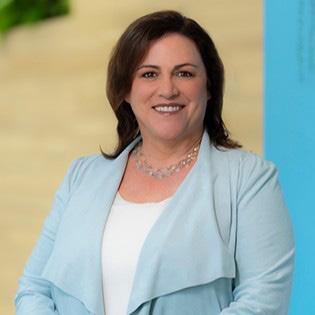
Her executive experience covers a broad spectrum including operations, sales, marketing, supply chain, transportation, logistics, and banking.

In 2020, she was honoured as one of B2Gs ‘100 Most Influential Women in Supply Chain’, and she received the highly-coveted Procurement Leader Award from the World Procurement Organisation in 2017.
CPO of PepsiCo Melani Wilson Smith is a global strategic sourcing and data-driven executive with a demonstrated ability to innovate and drive transformation across organisations and industries, as well as deliver savings to the bottom-line.
Melani joined PepsiCo in 2020 as Senior Vice President, Procurement Market Supply Officer at Pepsi Foods North America, becoming Chief Procurement Officer in January 2021. Since then, she has operated with accountability for sourcing and procurement across the enterprise.

Patricia Stroup, Chief Procurement Officer for Nestlé, has a long history in the dairy industry. Starting out as co-owner and manager of dairy farms in North Carolina and Pennsylvania, Stroup has headed-up both North American and global dairy procurement for Nestlé, and held leadership roles at Hilmar Cheese Company and Virginia Milk Producers.
As CPO of Nestlé, Stroup’s focus is on improving processes. She’s therefore been instrumental in the forging of relations between Nestlé and dairy
farmers, with whom she has always shared an empathic relationship. She holds a Bachelor's degree in Communications with a cognate in Dairy Science from Virginia Tech, an MBA focused on Food and Agricultural Economics from Purdue University, and a leadership certificate from the London Business School. Stroup has held the role of Chief Procurement Officer (CPO) twice at Nestlé, first in 2015 when she initially joined the company, and again in 2020.




An established global executive, Jennifer Moceri is an agent of change and a champion of diversity, equity and inclusion. She has extensive experience in the consumer, automotive and food ingredients industries, and is recognised as a highly accountable, resilient leader.
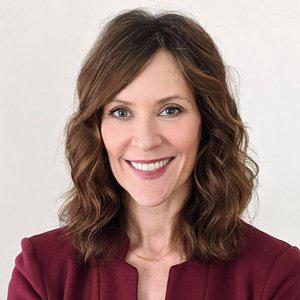
Moceri achieves results by building collaborative relationships with an unceasing focus on sustained improvement to drive step changes in productivity.
She is passionate about organisational transformation, capability and talent-building to enable growth, improve profitability and increase value to customers.
In 2019, Moceri became the Vice President of Global Procurement and Chief Procurement Officer (CPO) at Google. She is dedicated to diversity, equity and inclusion (DE&I), becoming a recognised figure in driving major changes across the widest possible circumference so that representation is seen throughout all aspects of the business world and beyond.
Under Moceri’s leadership, Google recognises its responsibility to promote diversity, equity and inclusion (DE&I) across all aspects of its operations.


Building on a successful digital procurement transformation that has made many headlines over the years and has become a reference point in the procurement industry, Vodafone is now working on a radical overhaul of its physical supply chain operations for network equipment.

Reinhard Plaza Bartsch leads Vodafone’s global network logistics transformation, a sizeable change programme that will reshape the way Vodafone manages demand and supply planning, as well as the logistics operations for its network infrastructure business globally. He is no stranger to big, company-wide transformations. Having been in supply chain roles at Vodafone for the past 15 years, he has been spearheading Vodafone’s digital procurement transformation, establishing the company’s procurement operations as a world-class industrial benchmark.
“The transformation of our planning and physical supply chain is just the next natural step for us in Vodafone. Building an ecosystem where we work with our partners to create end to end visibility and control of hardware deliveries and inventories across our whole infrastructure supply chain. This will enable us to proactively mitigate risk of disruption while allowing us to make much faster, accurate and cost-effective decisions to steer supply to support the growth of our network,” explains Plaza Bartsch, adding that he aims to underpin this transformation by blending the best of technology with people. “We will follow a ‘human-centric’ approach when embedding digital in the way we run our business”.

Reinhard is currently Head of Supply Chain at Vodafone, and is transforming its entire supply chain planning and logistics operations globally. He has also been spearheading the digital transformation of Vodafone’s supply chain by accelerating innovation and adoption of new technologies, driving operational excellent performance and unlocking new sources of value for the function. His career spans across a number of different industries with roles ranging from managing large scale
logistics operations to leading complex transformation programmes along the supply chain. At Vodafone, Reinhard has been pivotal in the establishment and operation of the Vodafone Procurement Company and the transformation of the global supply chain (which now oversees Vodafone’s €24 billion global spend). He has successfully delivered major transformation programmes that have delivered multimillion Euro in benefits for Vodafone and have also gained external recognition Reinhard is passionate about the role that technology can play in shaping the future of procurement, and is actively engaged in customer advisory boards for a number of procurement technology solution providers.

“If I look across industries – market conditions are rapidly changing. Supply chains around the world are being constantly challenged in the face of more frequent risk of disruption. Therefore the ability to control and steer your physical supply chain has never been more important and has become in many industries a real competitive advantage.”
Running a world-class supply chain “Vodafone’s physical supply chain operations have been quite disparate over the years. We are now aiming to consolidate, standardise and digitise things end to end to allow Vodafone to have full visibility and control of kit moving across our supply chain,” says Plaza Bartsch. “We are aiming for full traceability and control, being able to see equipment leaving the manufacturing plant, arriving at our warehouses and up to the point of deployment. Enabling us also to redirect wherever we need to in a seamless fashion.”
REINHARD PLAZA BARTSCH HEAD OF SUPPLY CHAIN/GLOBAL LOGISTICS TRANSFORMATION VODAFONEAmid challenges in global supply chains, many companies have recognised the importance of controlling the flow of critical products or infrastructure to run their businesses.
Plaza Bartsch views Vodafone’s planning and logistics transformation roadmap as an essential part of managing these challenges. Over the years, Vodafone – and many other

“More agile and self-stabilising supply chains by blending human innovation and the best that technology can offer”
MarketPlace brings structural change to the way telecom operators


SOURCE & MAINTAIN their networks by putting the CIRCULAR ECONOMY at the core of their business, resulting in efficiencies, cost savings & planet benefits. Our MarketPlace technology moves networks towards NET ZERO.







The global telecoms industry faces critical challenges in the fight against climate change and the drive to introduce a more circular economy. Reducing greenhouse gas (GHG) emissions has become a global goal to mitigate climate change, and telecom operators have an important role to play.
Drawing on four decades of experience working in the telecoms sector, UKheadquartered Shields has developed MarketPlace, a cloud-based platform which allows telecom operators to realise financial, environmental and social benefits.

“The telecoms world is now only 8.6 per cent circular,” says Shields CEO Daniel Jones. “The contribution network equipment can make to achieve a circular economy is enormous.”
MarketPlace has been adopted by the leading international telecom operator Vodafone, active in more than 25 local markets. To date, the Shields platform has enabled at least €30 million of CAPEX saving from reusing refurbished equipment and more than €5 million of additional revenue generated from the resale of surplus network equipment. It has also saved more than 7,000 tons of greenhouse gas emissions during the process.
Shields had been offering circular economy services for a range of operators when they were first introduced to Vodafone UK in 1998. The telecom giant was in the process of modernising network equipment, and Shields formed a relationship with Vodafone UK that enabled them to introduce a 3R principle: 1) optimise Reuse back to Vodafone UK,
2) Resell surplus Vodafone UK assets globally and 3) Recycle the delta with a zero landfill policy. This 3R policy adopted with Vodafone UK is the foundation of MarketPlace which has introduced a fourth ‘R’ and explores Group Reuse after local needs have been catered for.

“MarketPlace creates significant financial savings (avoidance) and generates new revenue streams, whilst at the same time reducing long lead times compared to new equipment. There is a positive business case that also saves the planet. It is a win-win-win for all telecom operators that embrace our MarketPlace solution, which they need in this highly competitive market,” says Jones.
Find out more
Shields CEO Daniel Jones explains how his company’s MarketPlace software platform helps telecom operators of all sizes save money - and the planet
businesses – have been regaining control on the physical flow of hardware required to run their businesses.
As part of its global logistics strategy, Vodafone is approaching its transformation in three phases.
“In the past we had multiple disparate logistics’ teams in the different markets in which we operate,” explains Plaza Bartsch. “The first part of our transformation has been quite simple: bringing everyone under one new vertical in our supply chain organisation. The key for us has been to align all our logistics teams towards a common operating model. Focusing on driving consistency in the way we run our logistics operations and warehouses so that no matter where you are in the world, our operations feel and look the same.”
Vodafone has also deployed a global network stock and warehouse management system, which provides full transparency to over 16 million pieces of equipment held by Vodafone across all warehouses world-wide.
“Implementing a common operating model and logistics system stack is foundational but also critical to enable us to drive our transformation at pace,” says Plaza Bartsch
Vodafone started with the first part of its logistics transformation back in 2019 and is continuously improving its physical logistics to optimise its inventory level, ageing and minimising obsolescence.
Part two of Vodafone’s logistics’ strategy is to transform how it plans its demand and supply for network equipment.
“Between now and 2024 we're actually deploying a new demand-and-supply planning model within Vodafone. We have started in Europe this year and have gone live in three of our big markets. We are now extending into the rest of Europe and will then finally extend this capability next year into Africa,” says Plaza Bartsch.
Vodafone is complementing this business transformation with the deployment of an Integrated Business Planning platform, that will enable Vodafone to systematically balance its demand and supply plans.
“Strengthening our supply chain planning function through new technology and capabilities will not only enable us to work closer with our partners in managing our supply chain, but will also enable us to optimise our inventory levels, and give us more flexibility to steer supply to where we need it. In addition, it will also enable us to drive the re-use of our assets across our network.”
As part of its logistics strategy and broader purpose agenda, Vodafone has established a so-called Asset Marketplace, which enables Vodafone’s operating companies to re-use equipment across different markets. Therefore, extending the life of the equipment procured which helps the company to save money, but more importantly, contributes to a circular economy by ensuring that used equipment is only disposed when it cannot be used anywhere across the group (as part of its commitment to the planet, Vodafone also ensure that any obsolete equipment is being ethically disposed).
“The third step in our transformation is the creation of regional logistics hubs. This will help us to optimise our logistics network and build further resilience in our supply chain,” says Plaza Bartsch. “We want to optimise our logistics network and need to make sure we have warehouses in the most optimal location and with the required size. The nature of our business will of course require us to keep some stock close to the markets, therefore it is key for us to leverage technology to orchestrate the logistics network.”
Vodafone has already announced at its Arch event earlier this year that it is going to establish its Pan-European Hub to run all of its physical
Deloitte’s Technology, Media & Telecommunications (TMT) industry group brings together one of the world’s largest pools of industry experts – respected for helping shape some of the most recognised TMT brands and helping companies of all shapes and sizes thrive in a digital world www.deloitte.co.uk/TMT

Why did you select Deloitte to partner with VPC on your logistics journey?

Reinhard Plaza-Bartsch: We are embarking on a complex transformation around how we do business within our markets, our supply base and VPC itself. This requires a new way of thinking, and we wanted a partner who could challenge us to ensure the results were ambitious but also practical. Deloitte was the only company that could bring Supply chain expertise, Pan-European analytics, tax specialists, technology implementation and transformation skills together in a single package. Deloitte were also the most diverse team we spoke to.
How was the programme structured and what capabilities were needed?
Anu Sekhri: VPC had a very clear vision of logistics that meant delivering against an ambitious triple bottom line of Sustainability, Operating Cost and Working Capital. This required VPC to control the end-to-end supply chain rather than simply being a buyer of network equipment. In response Deloitte mobilised three teams:
y A technology team that implemented an end-to-end leading forecasting and supply chain planning software solution
y A supply chain team that optimised the location of the new regional distribution hub and completed the warehouse design
y A programme management team that developed the overall business case and a three-year roadmap for delivery.
What are some of the key takeaways from the project so far?
Reinhard Plaza-Bartsch: Momentum is critical, keeping a successful programme moving forward means no pauses in delivery. The cost of delay is typically higher than the cost of optimising the solution.
Anu Sekhri: Sustainability is also at the heart of this transformation. At Deloitte we are proud to support changes to supply chain infrastructure and operations that have sustainability considerations at the core. This really is a ground-breaking supply chain transformation within the Telco industry and one that I’m pleased to be a part of.
Anu Sekhri, Supply Chain Partner at Deloitte UK, and Reinhard Plaza-Bartsch, Global Head of Supply Chain Management Development at Vodafone, discuss their collaboration on a transformative Telco supply chain project at Vodafone Procurement Company (VPC).supply chain activities for Europe out of Luxembourg.
“We’re building what we want to be the greenest logistics operation in Europe as well as the most automated warehouse leveraging 5G to automate activities in the warehouse,” says Plaza Bartsch.
Vodafone currently employs around 400 people in Luxembourg, a country where it has had a presence for 22 years. Its local activities include procurement, roaming, financing and digital capability operations.
But how does Vodafone measure the success of its transformation? For Plaza Bartsch, it is all about driving operational excellence in the way Vodafone runs planning and logistics. “Whether it is supporting faster deployment of the network by securing on-time and in-full delivery of materials, driving inventory levels down, minimising the risk of obsolescence and maximising the return of capital invested by extending the lifecycle of assets through re-use, we want to be cost-effective and world-class… and we want to get there fast,” says Plaza Bartsch.
The speed at which technology develops has been generally doubling every two years since the 1960s. This has not been different in the supply chain space, and many businesses have been striving to keep up with technological advancement without leaving customers or employee’s behind.

“This is not different for our transformation, we rely on new platforms and technology that will augment the capability of our people and enable them to do more, better and faster. No matter whether it is in planning and coordinating supply, automating warehouse operations or running simulations to mitigate supply chain risk, technology is and will be everywhere.” says Plaza Bartsch.
“Implementing these new systems in a timely fashion, ensuring that they deliver the right user experience is paramount in this change.”
For Vodafone’s logistics team, the next 12 to 18 months will involve increasing visibility across the supply chain and ensuring that change in ways of working gets well embedded in the organisation.
“This is a significant change programme and we are keen to get everyone on board. We want to make this change live and fluid for our people and ensure that everyone can personally grow as a result of this transformation,” says Plaza Bartsch. “I see already with excitement how we start running demand and supply planning reviews.
Our key supply partners are also actively engaging and becoming part of this new ecosystem.” says Plaza Bartsch.
Vodafone’s network suppliers will also benefit from this transformation, they will gain much better visibility across Vodafone’s supply plans and will be able feed into Vodafone planning system to ensure any supply risks are proactively mitigated.
“Developing into roles that have much closer interaction with our partners and are driving robust and mature supply planning for Vodafone is a great development opportunity for our team. I think everyone in our logistics team is as excited as I am about the future.” says Plaza Bartsch.
Plaza Bartsch’s perspective on future industry trends include the rising need for a more agile and self-stabilising supply chain.
He believes this is only going to be possible by blending human innovation and the best that technology can offer.
As part of its transformation Plaza Bartsch aims to develop a control tower to connect all of its physical supply chain and manage the end-to-end flow of goods from manufacturing down to final installation. In addition, he foresees already in his plans to invest in a digital twin for the supply chain in order to model scenarios for the future, and render Vodafone more resilient to supply chain risks.
“It is quite an exciting time to be with Vodafone and working to shape the future of our supply chain,” says Plaza Bartsch.





As an organisation, Accenture seeks to help build supply chains that are more inclusive and sustainable. It does so by encouraging a mindset of responsible buying, with the ultimate goal being to generate long-term value for its clients, supplier partners and communities.
Both within and outside of Accenture, one person above all others has taken on the mantle of driving performance and values around a diverse and inclusive supply chain.
She is Nedra Dickson. A Managing Director at Accenture, Dickson leads its global supplier inclusion and sustainability programmes across 22 countries. Her deep expertise in procurement transformation and supplier relationship management has seen her manage an estimated US$2bn in contingent labour spend.

Under her leadership, and with the help of her amazing team, Dickson has elevated Accenture’s supplier diversity spend to approximately $1bn globally, and she is also credited with expanding Accenture’s awardwinning Diverse Supplier Development Program (DSDP).
The programme is currently running in the US, Canada, UK, Ireland, South Africa, India and Australia, and there are plans to further expand its reach.
Dickson says: “Responsible buying allows us to work within our ecosystem to identify, develop and work with smaller, more diverse suppliers with increased agility.
Since falling into a procurement career via technical support, Nedra Dickson has gone on to become a world figure in promoting supply chain diversity

“DSDP reaches 7 countries, allowing us to drive a more-inclusive marketplace in our supply chain, and we also gain access to innovative, responsive and cost-competitive solutions for our clients.”
Under the programme, Accenture also requests that select suppliers provide information and data on how they are reducing their environmental impact “which in turn helps us improve our performance”, as Dickson explains, who has a strong pedigree in procurement transformation and supplier relationship management.
Supplier diversity programme reflects Accenture’s values “The programme is designed to grow and develop diverse businesses, and to support their integration into Accenture’s global supply chain. It’s very difficult for such businesses to navigate large, complex organisations like Accenture.
“So, if you partner a diverse business with an Accenture executive then you can help them peel back the layers of the business and facilitate collaboration.
“This way, a small business can come in and develop a piece of software or advance a platform, and can do so collaboratively so that we’re working together to innovate.”
Dickson adds: “By innovating with this diverse supplier, you're helping them grow their business, which means they begin to employ more people in their community. Then you're seeing an economic impact.
“It's a bit like a tech incubator. We look for diverse technology providers we can partner with, or even go to market with, and help the supplier build upon that technology. But it also includes non-tech businesses that we want to help grow.”
In her 21 years with Accenture, Dickson has acquired a deep level of experience of
NEDRA DICKSON MANAGING DIRECTOR, ACCENTUREworking with Fortune 500 companies across multiple industries and a range of disciplines, including: technology consulting, operations management, procurement and sourcing and category management.
And, yet, procurement was never on the radar of this engineering and computer science graduate, who began her Accenture career in tech support.
“I made sure everyone had a laptop, and I helped write some of the software we were using back then,” she says, recalling that time.
Dickson moved on to providing help desk support for clients and, in 2006, was tasked with moving the function to Bangalore, India. “That translated into doing tech work for some of our clients, and that’s when I realised I wanted to be client-facing.
“I didn’t plan to go into procurement,” she admits. “It’s something that happened organically. I was told there was an opening in that area – I knew nothing about
“Many small and diverse businesses looking to engage vast and complex Fortune 500 companies need help from non-profit organisations”
INDUSTRY: IT SERVICES AND IT CONSULTING
LOCATION: UNITED STATES
Nedra Dickson is a Managing Director at Accenture, where she leads its global supplier inclusion and sustainability programmes across 21 countries.
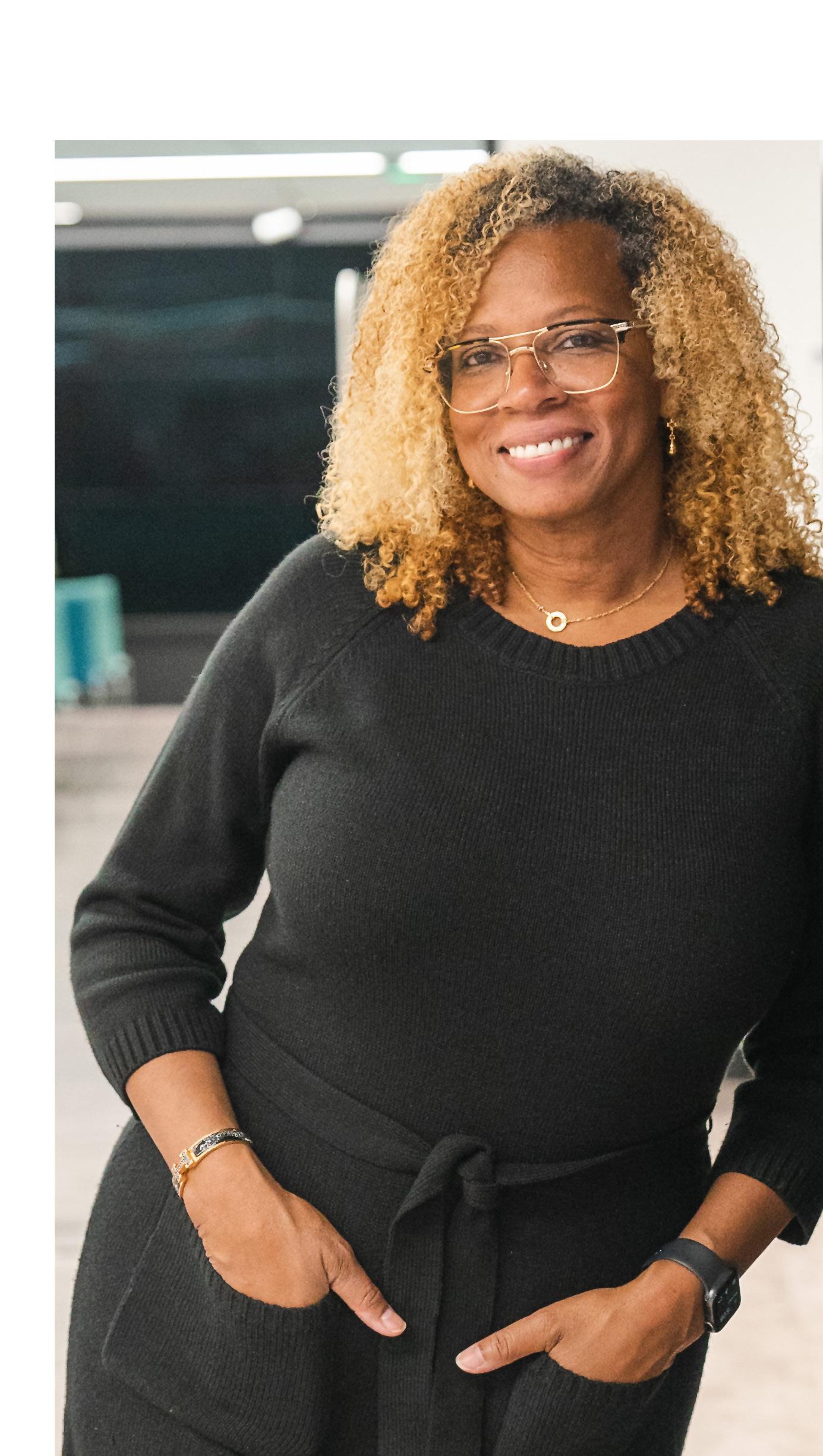

Dickson has strong expertise in procurement transformation and supplier relationship management, having managed over US$2bn in contingent labour spend. She also oversees Accenture’s procurement and client opportunities with diverseowned businesses globally.
A key undertaking for Dickson is expanding Accenture’s dedicated global Diverse Supplier Mentoring Program in seven countries. The programme is designed to grow and develop diverse businesses, and to support their integration into Accenture’s global supply chain.

VDart reveals how its Accenture partnership helped align its sustainability vision with a roadmap featuring gender parity and sustainable office design
No matter where you go or what you do, it’s impossible to escape the term ‘sustainability’. With climate change advancing at a rate more rapid than had been anticipated, ensuring that we work together to restrict and reduce the planet’s warming is paramount.
Helping organisations to digitally transform in the face of such drastic circumstances is VDart. Based out of Atlanta, Georgia in the US, VDart is, in the words of its Executive Vice President Rohit Bardaiyar, a “leader in digital transformation and technology talent management services”.

“VDart group as a whole is a 3,700-employee company, and we’ve been in business for about 14 years, specialising in talent
management and enterprise modernization services,” establishes Bardaiyar.


Being a company focused on digital transformation, possessing a clear and actionable sustainability framework is essential. Luckily, 2021 was the year that, under Bardaiyar’s leadership, VDart successfully graduated from Accenture’s Diverse Supplier Development Program on Sustainability. A five-year pilot programme, it focused on the adoption of “five major United Nations’ Sustainable Development Goals (SDGs)”. Following this programme, VDart was in a position to develop its sustainability roadmap and form a framework for ESG adoption.
“Accenture played a pivotal role in not just helping us establish our sustainability vision, but also in creating a strategic roadmap for the next five years,” Bardaiyar says. “They
were instrumental in helping us adopt the UN SDGs, even helping us design our newest green offices in India, per Accenture sustainability standards.”
The partnership between VDart and Accenture has included an expansive remit, with focus also being placed on other elements of Environmental, Social, and Governance (ESG) considerations, of which diversity, inclusion and equity (DE&I) is a core part.
“Diversity and inclusion is in VDart’s DNA,” Bardaiyar states. “At the moment, I’m proud to say that VDart 52% of our workforce is made up of women, while 38% of workers in our company are first generation workers, and 32% of our spend is with small, diverse companies. That’s how we think.”. “To us ESG is not a nice to have feature, but a critical business imperative”, he quotes.
procurement, but I was excited to learn how to help clients procure the goods and services they need.”
Dickson’s role sits between strategy and consulting Decades on, Dickson has carved out a unique role for herself at Accenture. “My current role sits within our strategy and consulting practice and is aligned to our supply chain. I help clients build, design, develop and grow their own supplier inclusion and sustainability programmes. I also help them fill gaps in their supply chains using small, diverse businesses.”
Dickson observes that her role is one that is made for procurement “because, typically, it is through procurement that contact with small and diverse businesses is made”.

She adds: “You’re procuring their services
and some of their goods, so this is why so many of these kinds of businesses are aligned to procurement organisations. We work with them not only to procure their services, but to augment and leverage their talent.”
Such talent might be found upstream or downstream in the supply chain. “They might be providing raw materials, they could be procuring your coffee, or procuring people to augment your IT service. There are diverse suppliers in marketing, in HR and in legal. There's so many categories small and diverse businesses cross.”
Dickson says that, although the role is “immensely rewarding”, it also comes with serious challenges, chief among which are misconceptions within Accenture itself around the capacity of small, minorityowned businesses.
“Awareness around why an organisation needs to embrace supplier inclusion and diversity is an ongoing problem,” she says. “The stereotype is that such businesses are too risky, or too small.

Stakeholder education key to building diverse supply chains “There aren’t enough conversations around the subject. We tend to write-off a business because they’re too small, mistakenly thinking that they're unable to scale up as fast. Then there is the size thing: many people look at small companies and see risk. They might doubt for example that the company has adequate insurance should there be any issues.”
Nevertheless, Dickson explains that one of the most important demands of her role is educating her own colleagues. “By educating internal stakeholders in Accenture, you also are educating your clients. Not everyone is aware of the value-add that small and diverse businesses can bring, and it’s my job to remedy that.”
She points out that part of the problem is how easy it is for people to forget that even large multinationals were once small businesses.
“Many of the large tech companies started life as a collection of small businesses that came together, and we want to continue to be at the forefront of this kind of thought leadership,” she says.
Sometimes, the educating Dickson undertakes might be as simple as providing clarity around what diversity and inclusion actually is.
“When you look at inclusion and diversity in the workforce, we’re talking about the volume of women and minorities,” she explains. “But ,with supplier inclusion and diversity, it’s about the number of
businesses that are 51% owned by a minority group. In both instances, the aim is to help underrepresented groups flourish.”
Leveraging small businesses in supply chain makes sense
What’s more, Dickson believes supply chain diversity is also about leveraging small businesses in your supply chain: “With so much disruption in the supply chain, small and diverse-owned businesses can help fill the many gaps.”
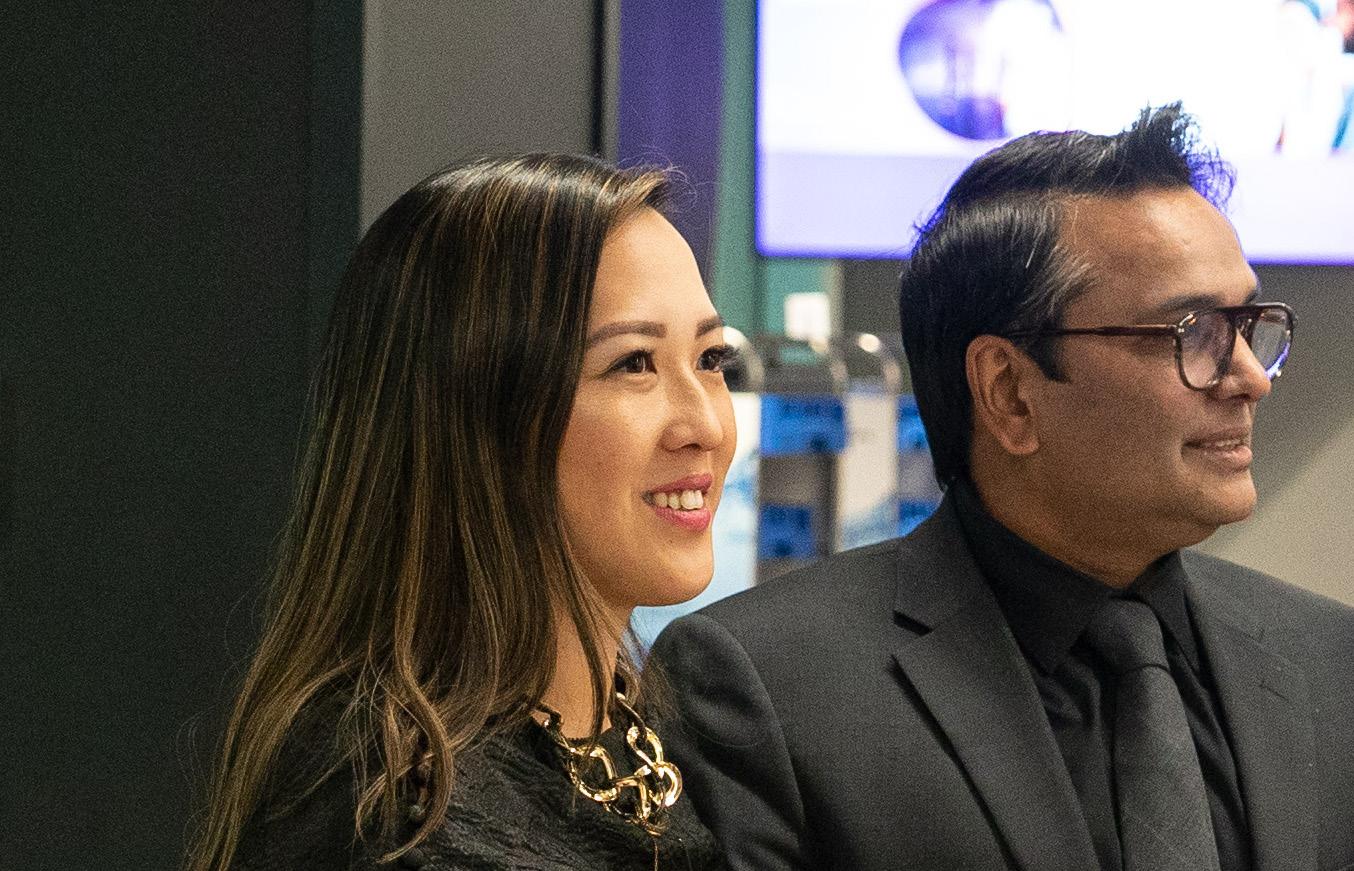
But there are far more substantive benefits of a diverse supply chain than plugging gaps, says Dickson, not least of which is innovation.
“Small and diverse businesses are nimble, able to do things faster than large corporations, where there are lots of processes and procedures. As a result, they are able to innovate at pace.”
NEDRA DICKSON MANAGING DIRECTOR, ACCENTUREShe also cites a University of Washington study showing that, for every $1mn that a diverse supplier is given, 10 jobs are created in the community. “So you're also looking at economic and social impact when it comes to such businesses.”
“My role is unique, as it sits within our strategy and consulting practice and is aligned to our supply chain”
Today’s supplier ecosystem is very different to that which Dickson first encountered at the start of her procurement journey, with one big change being around technology.
“Around diversity and inclusion, I'm seeing a lot of AI, augmented reality, data science, and sustainability,” says Dickson. “Small businesses have already begun to be very eco-friendly and are able to teach a lot of us large corporations where to begin.”
Dickson is unequivocal about the benefits smaller firms have to offer, but stresses that they need help when approaching large organisations with those benefits and expertise. “Many small and diverse businesses seeking to engage Fortune 500 companies will look for help from non-profit organisations, such as National Minority Supplier Development Council (NMSDC), National LGBT Chamber of Commerce (NGLCC), Women’s Business Enterprise National Council (WBENC),
DisabilityIN (US), Minorities in Supplier Diversity UK (MSDUK), The Canadian Aboriginal and Minority Supplier Council (CAMSC) and WEConnect International. Bodies like these bring suppliers in, certify that they are minority-owned, and then help facilitate introductions with larger corporations.
Countries leading way on supplier diversity ‘having the right conversations’ The NMSDC is based in the US, a country Dickson says is leading the way on diversity and inclusion in the supply chain. Canada and the UK are also strong performers, while South Africa and Australia get a mention in dispatches.
“The South African government has decreed that corporations must work with Black-owned businesses, and it’s the same in Australia with Indigenous-owned businesses,” she says. “There are many countries that are


beginning to see the benefits of leveraging underrepresented communities.”
Dickson believes that the reason these countries are making progress on diverse supplies chains is because “they are bringing the issue to the forefront”. She adds: “They're going in and finding small businesses within underrepresented communities. Then they’re finding talent there and are providing training.
“It’s in any country’s interests to do the same. With all the disruption we’re seeing to workforces at the moment, around staff retention and attraction, it makes good business sense for larger businesses to go into underrepresented communities, for example, to provide training around technical skills.”
Dickson feels Accenture itself has realised that greater flexibility and inclusivity are needed around recruitment.
“A key change we’ve made is to leverage our apprentice programme so that we no longer require entrants to have a four-year university degree. This way, we can train more people and give them the technical skills that are needed to plug the workplace gaps we're seeing.”

“Awareness

 PRODUCED BY: TOM LIVERMORE WRITTEN BY: HELEN ADAMS
PRODUCED BY: TOM LIVERMORE WRITTEN BY: HELEN ADAMS

In a post-pandemic society where there’s an increased focus on physical and mental health, healthcare organisations around the world have found themselves under the spotlight. Whether this relates to the integration of tech and automation, clinical effectiveness, or patient care depends on the organisations themselves.
Althea Australia is a part of the Althea Group, a global organisation working across 16 countries. The Group operates as an outsource technological partner that provides managed services and multivendor maintenance across an entire spectrum of medical equipment – both in public and private portfolios.
But over at Althea Australia, based in Melbourne, things are slightly different.
“We provide consultancy and procurement services across a full range of diagnostic imaging equipment, including CT, X-ray, and MRI, up to 13 modalities,” says Monique Gaspar.
“The procurement function really is the integral component of our business operations, and we’re really committed to delivering best outcomes and best benefits for our customers.”
Head of Business Operations and Procurement at Althea Australia, Gaspar runs its day-to-day operations and manages customer supply relationships. She is, however, a radiographer by trade.

With aspirations to be the preferred group procurement organisation for radiology across ANZ, Althea Australia’s Phil Barber & Monique Gaspar explain why



“I have 20 years of clinical experience in radiology in all different modalities,” says Gaspar. “I'm a subject-matter expert, responsible for the maintenance of our ISO 9001 accredited governance and framework. I'm also a procurement specialist.”
At Althea Australia, the team is small with multiple portfolios. Within this team, Phil Barber functions as the Senior Product Procurement Specialist and Business Development Manager.
“We aid in helping our partners to adhere to our rigid framework, our model, and our processes in procuring equipment,” says Barber. “I'm also responsible for the growth of the business, seeking out external opportunities with other groups, such as major corporations or private hospitals, and growing our business.”
Over his 30+ year career in the industry, Barber has become an experienced subject-matter expert across all facets of diagnostic radiology, led into the healthcare
PHILIP BARBER SENIOR RADIOLOGY PRODUCT/PROCUREMENTindustry because of a desire to utilise all learnedskills from the full span of his career.
“This for me, was a challenging new role. It gave me a new burst of life, and it was the first time I was on the customer or purchasing side, not with equipment sales and marketing,” says Barber.
In contrast, Gaspar has spent 20 years in a variety of hospital and private healthcare settings, having also done some teaching within this remit.
SPECIALIST, ALTHEA AUSTRALIA
“Because of our transparency, it opens the gate and gives us very open communication between the suppliers, which is a good strength”
LOCATION: AUSTRALIA
Philip Barber has worked Althea Australia since August 2021 as a Senior Product/ Procurement Specialist. Prior to Althea, he had a 30+ year successful career at GE Healthcare, progressing from GE Australia’s 1st In-house CT Applications Specialist, through various Sales/Marketing positions within their CT/MR Modalities; Thailand Country Manager and AsiaPacific CT Product Marketing Manager, based in Bangkok, Thailand. His last role at GE was within their ANZ Service Business, prior to joining Althea.
Phil is a Medical X-Ray Technologist by training from the University of South Australia and graduated from at Flinders Medical Centre in Adelaide. Phil’s strengths are his passion, knowledge, and experience, coupled with roles that have involved intense customer interaction. He has strong customer focus and balances the technical aspects/knowledge with clinical outcomes.
Phil is an Australian Citizen and resides in Gold Coast, Queensland. He lives with his Asperger’s son, aged 22 years.
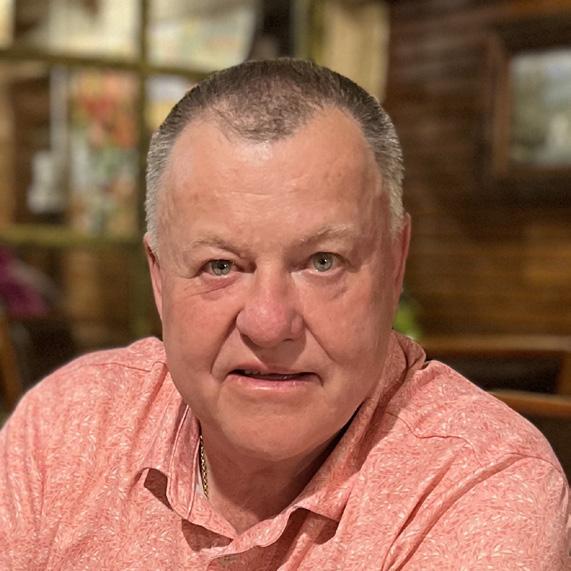

LOCATION: AUSTRALIA
Monique Gaspar came to Althea Australia in 2020 as a Radiology Product Specialist and has since risen to become Head of Procurement and Business Operations, overseeing every aspect of Althea’s business.
Monique commenced her career as a graduate radiographer in Melbourne and quickly entered a managerial role before being recruited to educate radiographers at the prestigious Monash and RMIT Universities in Melbourne. After a distinguished career in academia, she completed her MBA and later began working for Althea.
Monique is valued by Althea’s clients for her detailed understanding of their operational and capital needs, and how those needs are best answered by the various equipment vendors operating within radiology. She is appreciated by her colleagues for her enthusiasm, warmth and leadership.
Monique lives in Melbourne with her husband Andrew and their 3 children.
When our customers speak up, we listen. So when customers around the world told us they needed a fully featured room that’s both versatile and scalable, we got to work.
The CARESTREAM DRX-Compass X-ray Family is the result. You can depend on the DRX-Compass for exceptional image quality. Con gure the ideal system for your needs with either an overhead or oor-mount tubehead. It’s versatile and scalable – helping to eliminate technology obsolescence.
































Looking for a new X-ray room? Look to the DRX-Compass to help you navigate to the future.
















Quantum







Contact: carestream@qhealthcare.com.au


















“With Althea, I was looking for a new challenge. I'd previously worked in a different role in admin and HR, with a bit of procurement involved. So when this job came up, I saw that it was a role where I could combine my healthcare and radiology background with my business experience,” she says.
Procuring high-value medical equipment
Althea Australia aspires to be the preferred group procurement organisation for radiology and healthcare providers across ANZ – Australia and New Zealand.

“We really want to be a centre of excellence for procurement,” says Gaspar. “We provide professional and strategic targeted procurement to Radiology – using our best practices – and to the market. This results in significant savings and operational
benefits to our healthcare providers. We provide fresh new ideas to the marketplace that drive competitive tension, which is best for everyone.”
Althea Australia is the only company doing this in the ANZ market, specifically in Radiology, which Barber sees as a huge competitive advantage.
“Our model has helped us drive capital expenditure down, so it benefits our clients,” Barber says.
Traditionally in the ANZ market, medical equipment has been purchased based on long-standing, preferred supplier relationships.
“New suppliers find it difficult to penetrate, even if they have superior specifications or more cost-effective equipment,” says Barber. “Equipment procurement times were lengthy and often drawn out, with repeated
“We really want to be a centre of excellence for procurement”
back-and-forth negotiations, which wastes time and money. Corporatisation of the private market is still ongoing and growing, and more and more smaller groups are consolidating.”
Corporate organisations desire structured and streamlined procurement processes rather than just operating as individuals.
Private companies and public sector organisations that purchase medical equipment individually are often limited by the scale of their organisation.

Althea Australia utilises strategic procurement processes, aligned with the organisation business objectives. The company is actively marketing to healthcare providers that will drive the benefits of scale.
“Essentially,” says Gaspar, ”in our core team of 4 personnel – of which 3 are subject-matter experts – we have the experience and technical skills across all modalities within diagnostic imaging, remaining neutral and unbiased with respect to all the different vendors.
“With regards to our expertise in specification and functionality, part of our process is designed to save the customer time and money because we procure fit-for-purpose equipment and match their clinical requirements of the sites, to their budgets. We use our expertise and experience to bring down their capital expenditure on equipment procurement and reduce the total cost of ownership over the life of the system, including servicing.”
“Our model is ideal for corporates as well as individual purchasers,” says Barber, “where the same business objectives are to minimise unnecessary overspending to improve their balance sheets, whereas previously, individuals were purchasing
based on brand names and/or repeat replacements. Whilst we understand brand loyalty and other factors exist in choosing equipment, we offer alternative options to the customers with equipment that fits their clinical needs, but not necessarily just re-ordering the brand they've bought for years.
“We're very transparent in the process. We've opened the game up to all suppliers that have equipment that match the specifications and clinical needs of that site. I think that's a good thing for the industry.”
PHILIP BARBER SENIOR RADIOLOGY PRODUCT/PROCUREMENT SPECIALIST, ALTHEA AUSTRALIASupporting suppliers and upholding partnerships
How healthcare businesses have managed their supply chains and partnerships has evolved over the past two years. At Althea Australia, Barber believes that the key to their success has been their relationship with suppliers.
“We need to be able to best-fit their products to our clinical needs and our end users,” he says. “We rely on those supplier relationships to educate us and update our knowledge-data continuously.”
This is not just a once-a-year type of activity; Althea Australia’s suppliers are constantly updating with new products, innovations and technologies. Radiology

“Equipment procurement times were lengthy and often drawn out, with repeated back-and-forth negotiations, which was a waste of time and money”

equipment improvements and innovations are constantly changing healthcare.

“Because of our transparency, it opens the gate, which gives us very open communication between our suppliers – it’s a core strength,” says Barber.
The company has worked with medical equipment supplier Quantum Healthcare who distributes and services equipment from Carestream Health Inc, and other OEM’s.
“We've renewed – and actually strengthened – the relationship between Quantum Healthcare and our clients with recent successes in their x-ray products, and the potential with expanding their portfolio with ultrasound systems,” continues Barber. “We did this by providing constructive
feedback to Quantum on what they did well and what could be improved with their tender offerings via our debrief sessions. They acted on our feedback, which enabled Quantum to attain success within our procurement tender process. They listened to what we've had to tell them as a customer, we've informed them how we believe they can become successful, and they've acted on that. A win-win for both parties.”
Another customer supplier who has also enjoyed recent successes with their tender offerings to Althea Australia has been Fujifilm Asia Pacific, with recent wins for their x-ray, OPG and mobile x-ray products.
“We’ve had successful installations and positive feedback from our end-users

regarding the Fujifilm products, which are well supported by their service teams,” says Barber. “Globally, they recently released new ultrasound products that are now being introduced locally, so we're trying to open doors to our customer-base for them to demonstrate their products. We are also excited with their soon-to-be-released CT Scanner systems, which can further expand their coverage and footprint for Fujifilm. We offer consultancy and advice to them on their product ranges, suitability and positioning across the ANZ market whilst serving our customers’ needs.”
But what is it that makes such partnerships work? What does a partnership have to have to be successful?
“I think it's like any good relationship,” says Barber. “Understanding and trusting our framework and processes. They've got to understand how we work and how they work with us – and to do that, good communication is required between all parties.
“100% what Phil said,” concurs Gaspar. “You definitely have to be open and transparent; it really is key because then there's no misunderstanding of what's happening.”
In the past, it has taken some suppliers a long time to understand Althea Australia’s processes, with some even slipping back into previous modes of procurement.

“But once we installed our framework and explained how we work, they quickly adapted to become competitive,” says Barber.
That then allowed Althea Australia to fulfil product features while driving cost advantages for clients at the same time.

 WRITTEN BY: TOM SWALLOW
PRODUCED BY: CRAIG KILLINGBACK
WRITTEN BY: TOM SWALLOW
PRODUCED BY: CRAIG KILLINGBACK


John Wilgar, Chief Procurement Officer at NSG Group, talks about the fundamental changes the company is making to its procurement function to become more diverse and sustainable
What exactly is so exciting about glass? Well, apart from being one of the most versatile materials on the planet, it links to any and every industry you can think of. From the windows of a house, skyscraper or aircraft to protecting drivers under a transparent umbrella that screens them from the elements, glass is pretty much everywhere in some form or another.
As an integral component of innovation in the 21st Century, glass is also key in facilitating some of the major technological shifts that require devices like phones, tablets, computers, and even safety cameras mounted to the inside of vehicles behind the car windscreen.
With innovation more widespread, the industry is scaling up growth while reducing its environmental and social impact, contributing to all innovative processes in between to ensure that materials are fit for a more sustainable future of construction, technology, and automotive manufacturing and, quite frankly, any industry.
Somewhat ironically, glass must be transparent, and the same must be said when sourcing materials, particularly in terms of sustainability. As far as sourcing goes, sustainability doesn’t come without

understanding the impacts of the industry and, more importantly, how to fix them.
This is what was learned by John Wilgar, Chief Procurement Officer at NSG Group, who leads the procurement function of the business and is committed to sustainable change, adopting all necessary technologies to do so.
Founded towards the end of the First World War in 1918, NSG Group is one of the world’s largest manufacturers of glass and glazing products for the automotive, construction, and electronics industries— priding itself on this fact, in addition to being one of the major suppliers of glass to cars across the globe.
Part of the Sumitomo Group, NSG is becoming more invested in the development of glass products to meet the growing demand of the renewable energy sector, especially that of the solar energy network.

Another of the major trends supported by the organisation is the shift to electric mobility (e-mobility), which sees companies adopting more and more technological
JOHN“SUPPLIERS LIKE SHELL ARE REALLY KEY IN ENABLING SOME OF OUR IMPORTANT PROJECTS AND ARE ALSO ABLE TO HELP US SCALE THESE ACTIONS”
WILGAR CHIEF PROCUREMENT OFFICER, NSG GROUP
solutions to reap the benefits of an allelectric power system that’s capable of supporting more advanced solutions housed behind transparent glass windscreens.
The transformation of NSG starts with the programme named ‘Shape to Shine’. Beginning back in late-2020, the initiative is partly a response to the knowledge gained from COVID-19 and other disruptions.
As Wilgar explains: “The ‘Shape’ phase lasted around 18 months and, towards the end of that period, we began to focus more on the ‘Shine’ agenda, which is about asking ‘How can NSG contribute to a more positive future?’.”
This led to the organisation’s current strategy for procurement, which is governed by the core values of the business. A digitalfirst approach enables the company to instil its values.
“We began to establish a really clear and cohesive strategy for digital transformation to aid procurement in the company,” says Wilgar. “We’re evaluating how to get more from the digital tools we have today, such as SAP Ariba, but also looking for new tools that can support us in areas like supplier connectivity or supplier risk management.”

Secondly, NSG’s procurement team is looking at its operational approach, which is traditionally driven by a set procurement matrix, to provide greater opportunities to optimise its processes through standardisation and centralised procure-topay (P2P) activities.
“We centralised those, more than 10 years ago, into shared service centres, but we believe there is scope to improve other processes, such as sourcing, category management, and supply risk management,”
TITLE: CHIEF PROCUREMENT OFFICER
INDUSTRY: GLASS, CERAMICS AND CONCRETE
LOCATION: LIVERPOOL, UK
Wilgar has worked for Pilkington plc and NSG Group for twenty years, joining the group in 2003 as Head of Automotive Procurement in Europe. Prior to that, John held a number of procurement roles in General Motors, working closely with GM partners such as Isuzu, Renault, and Fiat.
Since 2003, Wilgar has held various roles in capital procurement, direct materials, indirect materials & services, energy, supplier development and process & systems.
John is passionate about enabling people to reach their full potential and about sustainability.
Wilgar originates from Ireland, is married to Jo with three grown up children—Owain, Niamh, and Rhys.


For businesses balancing continuity with decarbonisation goals, having a dependable and flexible energy partner has never been more important. That’s why Shell Energy is working with customers to meet the energy challenges of today, while investing in the energy solutions of tomorrow.
For businesses balancing continuity with decarbonisation goals, having a dependable and flexible energy partner has never been more important. That’s why Shell Energy is working with customers to meet the energy challenges of today, while investing in the energy solutions of tomorrow.
Shell Energy provides solutions tailored to the needs of businesses across a wide range of industries. These include the reliable delivery of gas, power and renewable energy, as well as carbon credits to help compensate for emissions.
Shell Energy provides solutions tailored to the needs of businesses across a wide range of industries. These include the reliable delivery of gas, power and renewable energy, as well as carbon credits to help compensate for emissions.
In Europe, Shell Energy is working with thousands of companies to meet their energy needs competitively, while helping guide them through the energy transition. This means powering their business in a way that is more resilient, as well as helping them reduce their carbon emissions.
In Europe, Shell Energy is working with thousands of companies to meet their energy needs competitively, while helping guide them through the energy transition. This means powering their business in a way that is more resilient, as well as helping them reduce their carbon emissions.
“We’re delighted to add NSG Group to a customer portfolio that includes global brands and national local businesses,” says Giorgia Arnaboldi, Senior General Manager B2B for Shell Energy in Europe.
“We’re delighted to add NSG Group to a customer portfolio that includes global brands and national local businesses,” says Giorgia Arnaboldi, Senior General Manager B2B for Shell Energy in Europe.
A deal to supply NSG Group with natural gas is an example of how working together on one solution can unlock new opportunities. NSG Group manufactures glass which, among other things, goes into the manufacturing process of photovoltaic panels used by solar power developer Silicon Ranch, of which Shell is the majority shareholder.
A deal to supply NSG Group with natural gas is an example of how working together on one solution can unlock new opportunities. NSG Group manufactures glass which, among other things, goes into the manufacturing process of photovoltaic panels used by solar power developer Silicon Ranch, of which Shell is the majority shareholder.
“It means the natural gas we supply to NSG Group in Italy is part of a bigger picture, which ultimately supports the generation of renewable solar power in the US market,” explains Giorgia. “It’s a perfect example of how one collaboration and one solution can lead to another.”
“It means the natural gas we supply to NSG Group in Italy is part of a bigger picture, which ultimately supports the generation of renewable solar power in the US market,” explains Giorgia. “It’s a perfect example of how one collaboration and one solution can lead to another.”

“We
as renewable electricity and alternative/low carbon fuels. NSG Group is increasingly turning to our supply partners to support our decarbonisation efforts and we are excited to work closely with Shell Energy as part of this strategy.”
as renewable electricity and alternative/low carbon fuels. NSG Group is increasingly turning to our supply partners to support our decarbonisation efforts and we are excited to work closely with Shell Energy as part of this strategy.”
John Wilgar, Chief Procurement Officer at NSG Group John Wilgar, Chief Procurement Officer at NSG GroupTo learn more watch the video or click
To learn more watch the video or click
Watch interview with Giorgia Arnaboldi, Senior General Manager B2B for Shell Energy in Europe“We believe this is an important platform to establish further opportunities together in areas such
believe this is an important platform to establish further opportunities together in areas such
says Wilgar. “I envisage centres of excellence for these processes in the near future.”
A further area NSG is acting upon is the physical footprint of the organisation. When looking at emissions reduction, the procurement team is tasked with indirect procurement functions to reduce realestate footprint and emissions, which results in the shift of premises globally and most likely a reduction as teams work more from home.

“In procurement, we are progressively changing our offices around the world to be more suitable for hybrid working and space efficiency,” says Wilgar.
This is also helped by NSG’s commitment to the Science-Based Targets initiative (SBTi), allowing the company to drill down into its Scope 3 emissions to meet rigorous sustainability milestones.
“We have a target to reduce our overall emissions 30% by the year 2030 and reach carbon neutrality by 2050 – importantly this includes Scope 3 emissions in our supply chain. We launched a sustainable supply
chain programme earlier this year, and this will help us address the Scope 3 challenge, but it doesn’t end with carbon reduction,” says Wilgar.
“We are also looking at the environmental impact of our suppliers, what they are doing to address waste and water consumption, and their actions on human rights.”
Wilgar also addresses the importance of personnel as a key pillar in sustainable digital transformation, noting that diversity, equity, and inclusion (DEI) plays a critical role in driving forward transformation and hitting its targets. Although diversity is a critical aspect of human resources from a social perspective, it is also something he has to
OF OUR SUPPLY BASE—AS AN ICEBERG”
consider when training or upskilling staff in a digital world.
“It’s really about creating the conditions for our people to realise their full potential and promote a fully diverse, inclusive workforce in procurement,” Wilgar says. “For example, we implemented a female focus group to help us understand the barriers for women to progress to top positions in the function.”

“We’ve been expanding our mentoring and trainer training programmes, including things like mental resilience to support our people through very difficult and challenging periods. We also make sure each person in procurement has a personal development plan.”
Today, around a third of our global Procurement team are women with around a quarter in management positions. This has to change—a more diverse team will better reflect the world we live and operate in and enable us to bring more and better ideas forward”
One of the points discussed with Wilgar— one that rears its head in many sustainability discussions—is around cost. At an integral point of the supply chain, much of the precedence is taken by cost optimisation and ensuring viability of products from a financial standpoint. But, as sustainability is often a costly shift to make, it’s interesting to see how businesses like NSG are able to transition to new and greener pastures,
particularly when, like NSG, 50% of spend is tied in the upstream supply chain.
One of the important activities that Wilgar must undertake is foresight; seeing the costs and understanding the wider global implications of the company’s sustainability agenda.
“I try to visualise the impact and value of procurement and of our supply base as an iceberg: the traditional financial measures are clearly visible above the waterline, but

increasingly, the greater part of this impact and value is below it,” says Wilgar.
“In other areas like supplier innovation, speed-to-market risk management, and sustainability, suppliers—both current and new—will contribute greatly to these new aspects of value creation for the company.”
This is where he highlights Shell Energy as a key partner in the activities at NSG. Shell Energy is a key enabler of the company’s targets and broadening its scope for other aspects, such as energy security and carbon reduction.
Specifically, NSG has been working to introduce alternative fuels such as hydrogen that will power the production of glass as well as biofuels as drop-in replacements for their fossil fuel counterparts. It is in areas such as these that partners like Shell can help NSG accelerate on its path to decarbonisation.

“Suppliers like Shell are really key in enabling some of our important projects, bringing technical capability and in some cases financing. They are also able to help
us scale these actions on a global stage to realise our potential in different regions,” says Wilgar.
“We’re very pleased to be working with them initially in Europe, but hopefully in other regions in the future. Shell is a company that shares our core values for doing business in an ethical way and contributing to the communities in which they work.”
With many fruitful years to come, NSG will delve further into the capabilities of technology for streamlining procurement, allowing the team to take a more strategic approach to sourcing sustainable alternatives, and adhering to its SBTis.
Growing the team and the technology it uses will allow NSG’s procurement colleagues to specialise in certain areas of the business to establish a much higher level procurement function and take the helm on further strategic processes like category management, risk management and mitigation, sustainable sourcing, and so on.
“It’s also my goal that the makeup of our procurement function is much more diverse than it is today. Not only in terms of gender, but in other aspects, such as ethnicity, sexual orientation, or importantly, diversity of thought,” says Wilgar. “Today, around a third
“WE CENTRALISED PROCURE TO PAY ACTIVITIES MORE THAN 10 YEARS AGO INTO SHARED SERVICE CENTRES, BUT WE BELIEVE THERE IS SCOPE TO IMPROVE OTHER PROCESSES”
of our global Procurement team are women with around a quarter in management positions. This has to change – a more diverse team will better reflect the world we live and operate in and enable us to bring more and better ideas forward”
JOHN WILGAR CHIEF PROCUREMENT OFFICER, NSG GROUP“The same principles apply to our supply base. My hope is that the impact and value of procurement—and, indeed, our supply base—is measured more in terms of those below the waterline activities and less on the purely traditional financial measures.”
This holistic view of sustainability in procurement will allow NSG to address all areas, from environmental impacts through technical innovation in the industry to meeting social needs both at work and beyond.
With the automotive industry ingrained into him, Wilgar fully appreciates the pressures that lie ahead, but is also excited for the e-mobility revolution, which will provide more challenges and opportunities for NSG. Electrification has become a testbed for technology that ties in with the demand for a supplier of both theoretical and physical transparency.
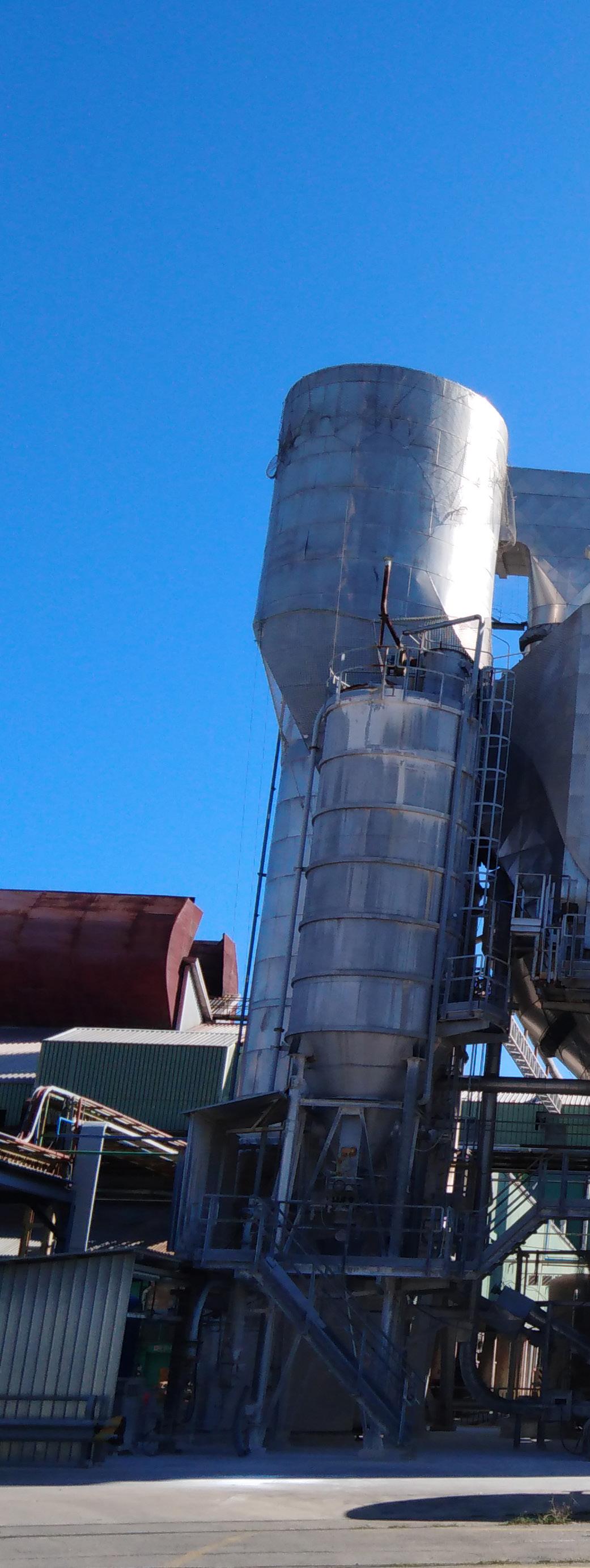
“WE’RE EVALUATING HOW TO GET MORE FROM THE DIGITAL TOOLS WE HAVE TODAY, SUCH AS SAP ARIBA”
Almost half of NSG Group’s total carbon emissions are in the supply chain. To achieve its Science-Based targets NSG must engage fully across the entire value chain.





 WRITTEN BY: GEORGE HOPKIN
WRITTEN BY: GEORGE HOPKIN

There are some charitable institutions in the UK that feel as if they are part of the fabric of society. The Royal British Legion is one such institution.
From providing expert advice and guidance to recovery, through to transitioning to civilian life, the Royal British Legion provides a lifeline for serving personnel, veterans and their families, supporting them in the face of hardships, injuries and bereavements. The RBL is the champion of Remembrance and is, of course, well known for the annual Poppy Appeal and its emblem, the red poppy.
And behind the scenes, procurement plays an essential part in the RBL’s work, helping ensure the organisation manages supply chain risk while maximising value for money from donated funds.
Last year saw the RBL mark its 100th anniversary with events that cast light on its proud past, highlighting its preparedness for a second century of service in a centenary celebration that focused on the future, along with the challenges and contributions yet to come.
The RBL was born out of the First World War, when four organisations came together to fight injustices and financial hardship faced by those returning home after service.
Founded as a campaigning organisation, the Legion fought for the fair treatment of those who had given so much for their country – and for whom it provided much-needed welfare and comradeship. At the same time, it committed to a pledge of Remembrance for the selfless service of the Armed Forces’ community.

The RBL’s strength derives from its network of members, volunteers, partner organisations and supporters. In its centenary year, events and activities provided key opportunities to recognise and thank the many charity partners, community associations, elected officials, and government agencies and services at all levels, whose valuable support makes it possible for the charity to do its work.
Centenary events held nationally, regionally and locally enabled the Legion to tell its story and recognise its people, past and present, while schools across the country held their own events commemorating the iconic institution. It
also gave the organisation an opportunity to emphasise its renewed strategic direction: placing those who need and support the Legion at the heart of all it does.
Procurement is an essential function within the Royal British Legion, helping to ensure the organisation manages risk within its supply chain and maximising value for money from donated funds. It’s an integral part of the RBL’s strategy and underpins its strategic priority of Operational Excellence.
In line with its function and aims, the organisation is committed to ensuring

I am a senior procurement professional with almost 20 years’ experience spanning both private and third sector roles. Passionate about selfdevelopment and developing teams/ talent, I am currently the Head of Procurement & Contract Management at the Royal British Legion, the UK’s largest armed forces charity. I manage a team of six professionals who manage our spend under three distinct categories –Corporate Services (IT, FM, Estates, HR, Legal, etc.), Fundraising, Remembrance and Marketing (Creative, Events, Print, etc.) and Operations (Care Homes, Recovery, Grants, Welfare Services, etc). We are working through a challenging


Working together as an extension of The Royal British Legion, our helplines ensure that veterans and their families receive the support that they need seven days a week.



its procurement procedures take an ethical approach, ensuring fairness and transparency while working with partners who adhere to legislation, including modern slavery and GDPR.
Procurement procedures also compel the RBL to acquire quality goods and services promptly, providing value for money based on a balance of criteria that’s specific to each requirement.
The RBL’s commitments minimise risk from its supply chain. Though it is not publicly funded – and therefore not subject to public procurement regulations – the organisation reflects best practices in its approach to sourcing all goods and services.

“Our procurement strategy supports the wider Royal British Legion strategy in supporting all serving and ex-serving personnel, as well as their families, in a reflection of the Legion's key priorities,” says Wayne Bell, the Legion’s Head of Procurement and Contract Management,
who joined the Legion in 2019 following more than a decade of procurement industry experience in his native South Africa.
The RBL’s campaign priority includes: Those We Serve, which ensures prompt, high-quality service provision that makes the best use of donated funds; Championing Remembrance, which supports the Legion’s Remembrance marketing teams to find and work with partners who will raise the organisation’s profile, helping them engage younger and more diverse audiences whilst seeking out new opportunities; Working Together, which engages suppliers as true partners passionate about the Legion’s cause; and, finally, Operational Excellence, which supports stakeholders whilst safeguarding the Legion’s expenditure and reducing unnecessary risk.
New Contract Management System supports RBL managers Contract management has been a particular focus for the RBL. In the past, the organisation has had limited contract visibility, further hindered by a lack of tools to support it. “Through collaboration with our IT department, we have built our own, fully-functional Contract Management System using SharePoint, which includes push notifications, dashboards, and other functions,” says Bell. “Our contract managers will have access to the Contract Management System, and we will be supporting and training them on how to manage contracts effectively.”
Earlier this year, the RBL also addressed issues around spend visibility. Again, it fell short of achieving the live, detailed visibility of supplier spending needed to understand, manage and analyse it. “On the back of a budgeting and reporting software that was purchased, we can now slice and dice our




spending as required from a procurement perspective,” says Bell.
Procurement training was disrupted in 2020 by the outbreak of COVID-19, subsequent lockdowns and ongoing restrictions. Nevertheless, the RBL is addressing this education shortfall by developing a suite of training programmes with the organisation’s L&D team. These are designed to equip buyers and contract managers with the skills for effective decision-making regarding buying and managing contracts.
“It’s difficult to manage what you can’t see, and we have been far too reactive in the past,” says Bell. “The combination of our Contract Management System and the visibility of our spend will be catalysts for us as we stepchange to be more strategically proactive.”
Without a capable team, it’s very difficult to be effective in procurement, says Bell – an acknowledgement that prompted him to rebuild his department in 2020. “We are fortunate that we’ve been able to recruit a team that is passionate about who the Legion are, what the Legion does and the contributions we make, but who are also skilled so that we can be effective in what we do,” says Bell.
Successful procurement operations also rely on positive collaboration with both internal and external stakeholders, something Bell is focused on in a bid to improve stakeholder relationship management at the Legion. “When we all collaborate effectively, we ultimately contribute towards supporting our beneficiaries,” he explains.
A broad range of services are coordinated by the RBL, including recovery support to currently serving and ex-serving personnel who are wounded, injured, or sick. The same support is also available for those who are experiencing multiple challenges such as unemployment, mental health problems, financial issues and alcohol abuse.

The Legion’s flagship recovery programme is the £27mn Battle Back Centre at Lilleshall in the West Midlands. It provides sports and adventure activities designed to promote self-confidence and improve motivation during recovery, increasing the effectiveness of the process.
The organisation also offers services designed to aid ex-Armed Forces personnel in finding employment. The Legion’s employment support helps those coming towards the end of their service to prepare for more traditional forms of employment and civilian life, in general. Not only does it ensure this, but it supports the wider family during the process, too. Funding for additional training or education is also available through the organisation’s employment grant scheme.
What’s more, much-needed guidance on business plans, finances and tax requirements is provided to those budding entrepreneurs looking to start their own business. Specialist assistance helps put together a business plan, source funding and identify mentors.
The RBL understands the allencompassing impact of housing issues on mental health and wellness, so it provides housing support and advice on a wide range of related issues. Included within this is advice and support to those who are homeless or imminently facing
Number of Employees
homelessness. As part of this work, the team disseminates guidance on housing applications to local authorities and can support challenges to statutory decisions on grant funding, housing allocation and eligibility.
When combined, each of these strands of support and outreach aids the Armed Forces community in maintaining independence, reintegration into society, community connections, and staying safe within the home via small adaptations, from installing personal alarms or support with funding for new equipment to working with family members about what to expect.
In the UK today, one in six people over 80 has dementia and, by 2025, more than a million people could have the condition. Inevitably, former service members feature in these figures, so the Legion provides care in the shape of purpose-built dementia units at four of their six residential care homes in Somerset, Warwickshire, Norfolk and North Yorkshire.
The Legion also has a team of specialist Admiral Nurses – a scheme developed in partnership with Dementia UK – who work in the community. Currently operating in
Lancashire, the West Midlands, Hampshire and Somerset, they offer specialist support, information and advice to the family carers of people living with dementia within the Armed Forces community.
Tackling money problems can be an emotional burden, so the RBL helps ease this financial pressure for thousands of serving and ex-serving personnel every year. The organisation’s financial team provides specialist compensation advice, help with debt and emergency situations, and can offer support during grant applications.

“WE ARE FORTUNATE THAT WE HAVE BEEN ABLE TO RECRUIT A TEAM THAT IS PASSIONATE ABOUT WHO THE LEGION ARE”
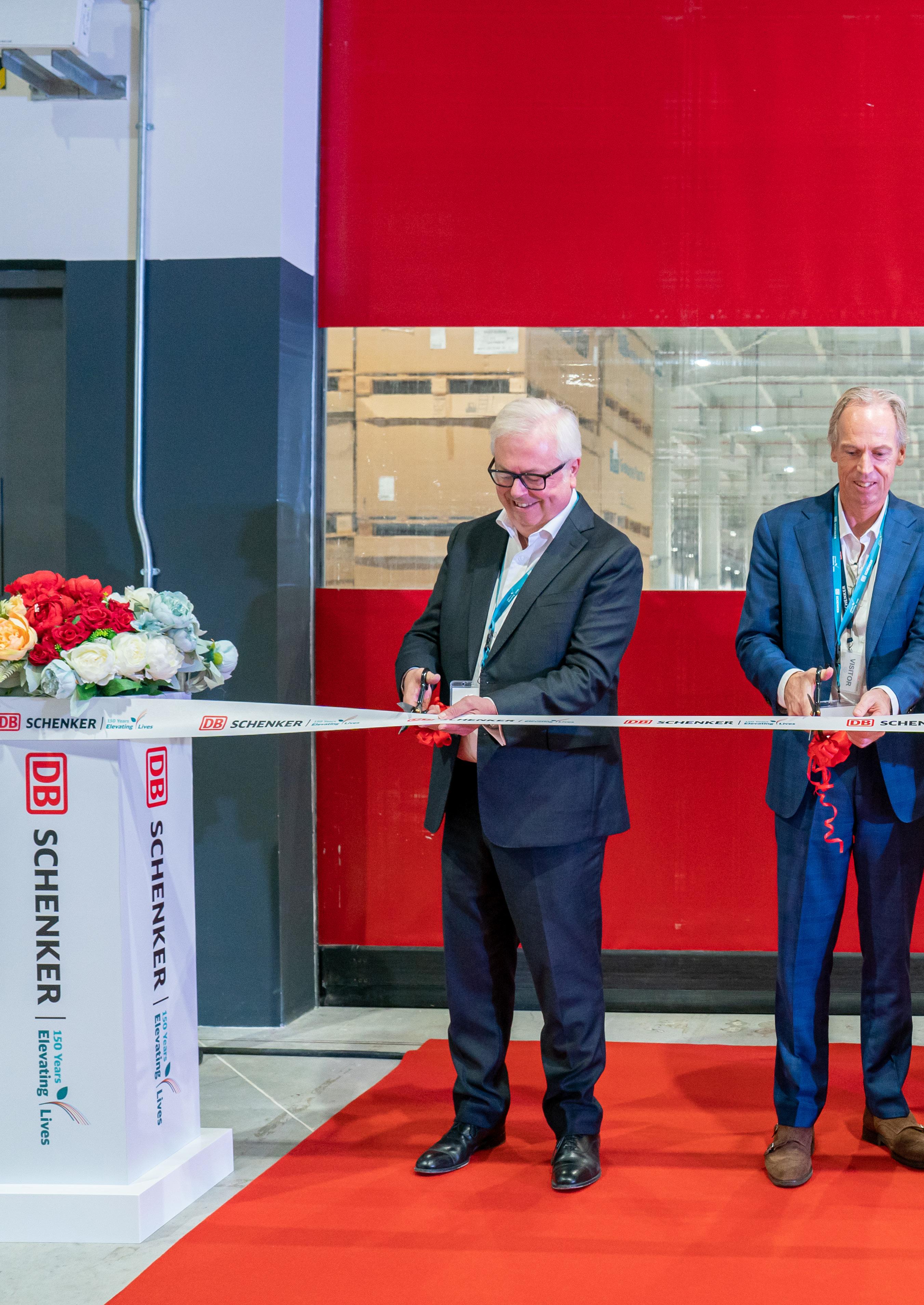 WRITTEN BY: SEAN ASHCROFT
PRODUCED BY: MUHAMMAD WAQAS
WRITTEN BY: SEAN ASHCROFT
PRODUCED BY: MUHAMMAD WAQAS


No one can deny the ineffective nature of UN COP conferences in the global quest for netzero carbon emissions by 2050. The goal of the recent COP27 event in Egypt was to build on the progress of previous conferences – of which there’s very little – and move the planet forward on the challenge of tackling climate change.
Yet the fact remains that words and talk are not enough. The planet is growing hotter by the day; the warmest 20 years on record have been the past 22 years, according to the World Meteorological Organisation, and it’s causing utter destruction in some of the poorest countries already.
Good intentions will do nothing to stabilise erratic weather patterns. Heatwaves, floods, severe storms, and rising sea levels due to the melting polar ice will continue unabated if talk isn’t translated into action – not only soon, but on a global scale, too. Parts of Fiji threatened already by rising sea levels have started strategising the moving of villages to alleviate flooding concerns, and it’s not long before other countries will have to follow suit.
In the wake of annual COP events, too many businesses sit on their hands, adopting a ‘wait-and-see’ approach to what will be required of them, legally, in terms of tackling carbon emissions. Others blanche at the costs associated with such action; they instead choose incremental progress.
The trouble with this approach is that it creates inertia at a time when the clock is ticking ever-louder on net-zero targets. Before long, we’ll be at a point of no return.
DB Schenker is, in this respect, unique: one of the world’s leading logistics service providers, it is a multinational company that understands the time for talking about sustainability is long past. Anyone who has seen – or read about – its logistics hubs’ development programme in Dubai will know that this is a company that prefers to be judged by its deeds on helping safeguard the future of our planet, not its words.

DB Schenker’s brand new sustainable logistics hub in Dubai is a marker of the company’s net-zero commitments

The company’s latest renewable-powered mega logistics’ hub in Dubai is known as DLC 3 and is the third in a series of such hubs, following the completion of DLC 1 in 2016 and DLC 2 in 2019. This third hub completes the company's expansion phase in the UAE.
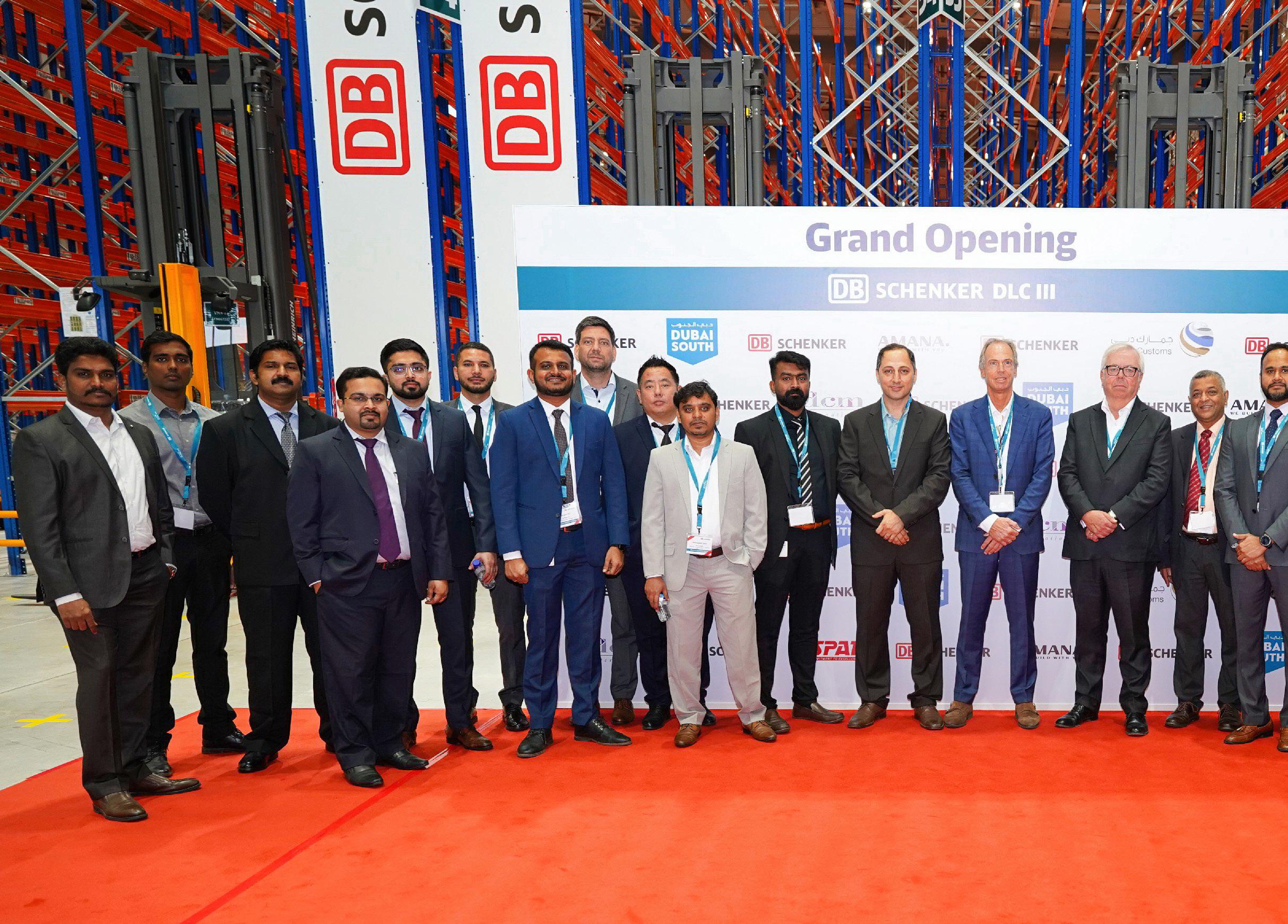
The 35,000sq/m DLC 3 is a warehouse that’s fully powered by solar energy. It’s also temperature controlled and offers total space for 90,000 standard European pallets.
“The solar systems installed at the facility provide the full energy demands for a vast expanse of warehouse and office space, saving a further 4,000 tonnes of CO2 emissions annually,” explains Ako Djaf, VP Contract Logistics SCM & Distribution, ME&A, for DB Schenker. “This is equivalent to planting over 400,000 trees.”
Djaf adds that, prior to construction, the company made a conscious choice to adopt environmentally-friendly technologies and
to use sustainable building materials. This, he says, meant a CO2 emissions’ saving of an estimated five tonnes.
It means that Schenker has become a frontrunner in the region regarding sustainability and innovative technologies, and that it is supporting the UAE’s Net Zero 2050 initiative.
Scenker committed to being net-zero by 2040 “Sustainability is a key mandate at DB Schenker,” says Djaf. “This is driven by our ambitious goal to become a carbon-neutral company by 2040. This is why, in the Middle East & Africa regions in recent years, we have invested so heavily in new facilities that make our operations sustainable.”
But the construction of this “expansive green logistics’ centre” also increases the capacity and scale of DB Schenker’s global network.
The company serves its multinational customers, who are global leaders in the FMCG, Fashion, Electronics and Automotive industries.
Its growing footprint in the Middle East and Africa regions is helping international companies expand their global reach, by providing access to a high-potential region that is the gateway to Africa.
TITLE: VP CONTRACT LOGISTICS ME&A
LOCATION: UNITED ARAB EMIRATES
Ako Djaf has worked in the logistics industry for more than 20 years. Since joining DB Schenker in 2005, Ako has held many leading positions in Central and Eastern Europe. As of 2012 to present, Ako is Head of Contract Logistics for the Middle East & Africa region.

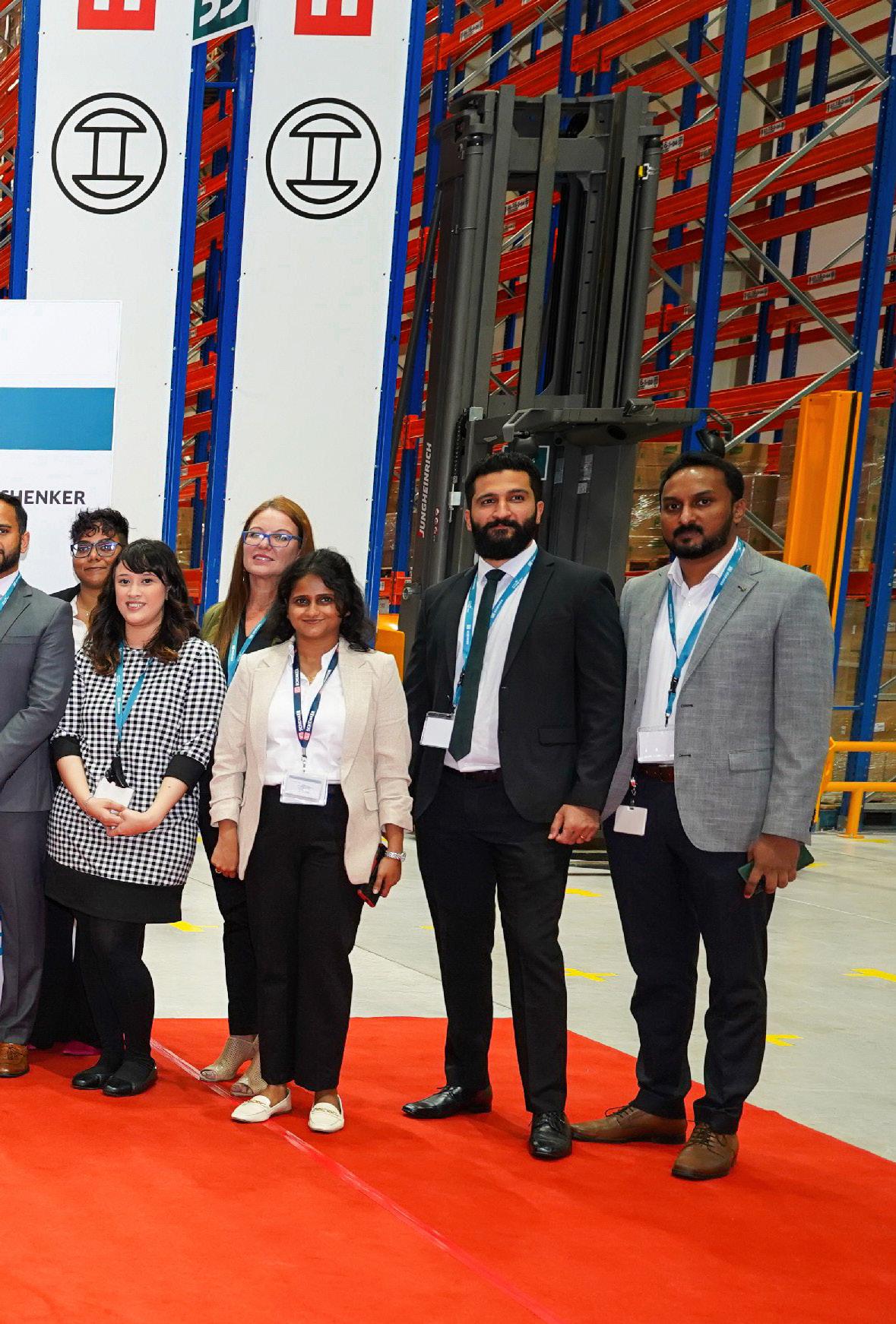
In his current capacity as Head of DB Schenker’s Contract Logistics division in the Middle East and Africa Region, Ako oversees all DB Schenker Contract Logistics & Distribution activities across the Middle East and Africa and is responsible for setting its strategic directions and goals.
He is a member of the DB Schenker Global Logistics Steering Committee and a member of the DB Schenker regional board of directors.
AKO DJAF VP CONTRACT LOGISTICS ME&A, DB SCHENKER“In the Middle East & Africa we have the sun to thank for the region’s access to renewable energy”
This makes the company one of the fastest-growing logistics service providers in the region, expanding the total area of its operating logistics centres by more than 350,000m/sq in the past seven years.

Schenker’s Dubai warehouse and logistics hub facilities are located in the Logistics’ District in Dubai South. This is a 18km/ sq district designed to facilitate the rapid
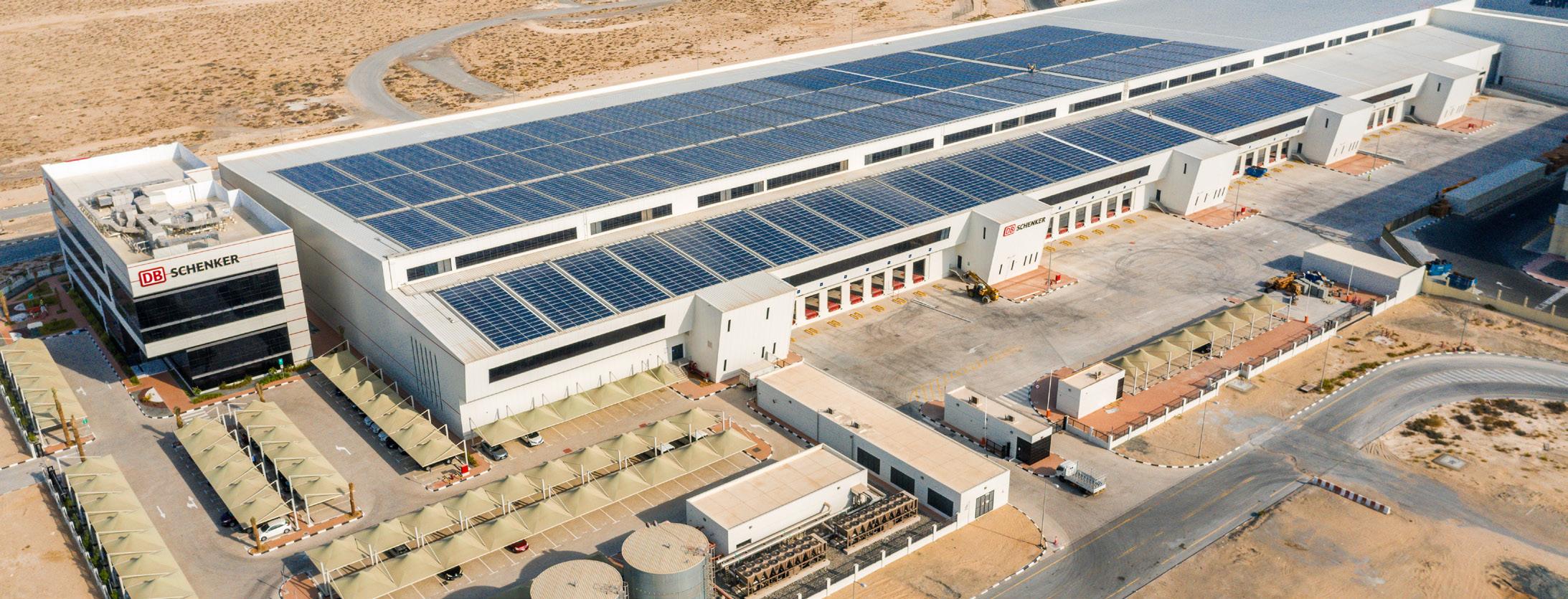

“As with any major project, having the right partners on board is crucial”
movement of goods through a busy logistics corridor, allowing cargo to be moved from port to airport in just 20 minutes, for example.
Its advanced infrastructure is perfect for companies like Schenker, as it helps support a seamless flow of goods, products, and services.
“DLC 3 leverages connectivity to land, sea, and air freight transportation modes,” says Djaf. “As with the first mega green warehouse DLC 2, the new centre further cements our sustainability commitment and agenda, not just in the region, but globally.”
“The three-phase growth plan we established in 2015, totalling 84.000 sqm of warehouse space, was an important strategic decision. All three facilities are close to Al Maktoum International Airport and Jabel Ali Port, one of the most important transportation hubs globally.
“Global and regional players benefit from the seamless, multimodal connectivity between road, air and sea transportation. This makes us the first choice for top-tier customers.”
The Dubai hub means the company can provide customers with warehousing solutions across a variety of industries, including consumer, automotive, industrial, and luxury products such as fashion items and accessories.

It provides a wide array of warehousing solutions, ranging from storage options for industries who work with dangerous goods to B2C ecommerce delivery services.
New Schenker Dubai logistics hub is state-of-the-art DLC 3 for example boasts a 5,000m/ sq mezzanine floor, designed for various value-added service activities, and features state-of-the-art warehouse management technology, including AI, robotics and automation.
“In the Dubai South Free Zone, there is a lot of paperwork to be completed for the Dubai Customs Authority and other bodies,” says Djaf. “And we have automated much of this to improve efficiency.”
DLC 2 and 3 employ around 300 employees each, with staff working around the clock in three shifts, seven days a week.
“We offer different types of warehouse services, including picking-packing, but also value-added services,” says Djaf, who has drawn on his long experience with DB Schenker to keep its Dubai expansion on track.
Djaf – who studied industrial engineering with business administration in logistics and production – has been working in the logistics industry for 20 years, holding leadership roles in central and east Europe, as well as in the Middle East and Africa, throughout his career.

Currently, he is responsible for the development and results of all contract logistics and distribution activities in the ME&A region.
One of his first leadership roles with DB Schenker was in Russia, where he spent seven years being responsible for country development.
“It was an exciting time in Russia back then, and we were able to achieve many milestones in terms of development,” he says.
But nothing could prepare him or his team for the COVID-19 pandemic. Although, thankfully, the world is now largely in postpandemic mode, the shadow of COVID does still linger over Schenker’s Dubai operations, as managing the threat of further outbreaks is an ongoing issue.
Schenker works hard to keep COVID-19 outbreaks at bay “Logistics is, by its very nature, a peopleintense business,” says Djaf. “This presents

operational challenges across warehousing and contract logistics, particularly with regard to preventing COVID-19 infections.”

He says Schenker has installed strict regulations regarding pandemic environments within its Dubai facilities: “We avoid infections by breaking teams down into groups that never mix. So if there’s an outbreak, it will not compromise the business. There are enough disruptions happening in the supply chain as it is, without that.”
In terms of delivering the DLC 3 project, Djaf says that, as with any major project, having the right partners on board is crucial, both in terms of delivery and ongoing success.
”We needed companies who share the same ambitions as us,” explains Djaf. “We wouldn’t have reached these milestones without our strategic partners.”
One key partner was the Amana Group, a conglomerate of companies that services the construction sector in the region, specialising in sustainable construction methods and green building solutions.
Another was design engineer specialist DCM International, which designed and project-managed DLC 3.
DCM designed and project managed the DLC 2 and DLC 3 complexes, which includes DB Schenker’s regional headquarters. The HQ is constructed of precast concrete, while the distribution centre is a steel-frame building that is serviced by 36 loading docks. The warehouse is fitted with roof-mounted solar power generation, which produces 95% of DB Schenker’s power requirements.
“The concept designs with which DCM presented us are exactly what they delivered in the end result, on time and on budget,” says Djaf. “This is a rare thing in the industry, and makes DCM stand out in the region as a reliable guarantor for well-executed design and construction project management.”
“Global and
players in Dubai benefit from the seamless multimodal connectivity between road,

Djaf says that the new Dubai developments will help drive innovation for its customers, as well as helping it increase the efficiency of its operations.

As for the ME&A region that he oversees for Schenker, Djaf is bullish.
“It has tremendous potential in terms of business development and also sustainability,” he says. “We have the sun to thank for the region’s access to renewable energy. The governments of the UAE, Saudi Arabia and Egypt are just a few of those who are investing heavily in projects to create solar cities,which will be run on solar power.”
Djaf believes this will give them an economic edge, because they will have access to competitively priced energy, which he says is crucial for businesses like DB Schenker.
"This is one of the reasons that the region is proving attractive for foreign investors, who comprise the majority Schenker’s customers,” Djaf says.
“Many multinational companies are locating more and more in the region. They see it as a platform for distribution from a geographical point of view. It is very attractively positioned, connecting Africa with Europe and the Asia Pacific region.
“This is why I see the region growing very strongly in the coming years, even in the face of all the disruption we are seeing at the moment.”
“The Dubai hub means we can provide customers with warehousing solutions across consumer, automotive, industrial, and luxury products”
AKO
VP CONTRACT LOGISTICS ME&A, DB SCHENKER


It only takes one simple idea to generate positive change in the supply chain. Simplicity is key to ensuring an equitable, profitable progression of sustainability solutions.

Organisations may aim to improve upon their energy consumption, manage their assets to reduce the amount of time for product distribution, or reduce the emissions involved in getting the products to market. Tosca, by providing reusable plastic packaging and pallet solutions in an efficient pooling system, challenges many of the sustainability pain points supply chains face today.
And supply chains face sustainability challenges of all kinds. However, through the managing and pooling of better packaging assets, Tosca seeks to battle many types of waste such as material waste, food waste, labour waste, and transportation waste. As a pooling system provider, as well as the designer and manufacturer of reusable plastic pallets and crates, the company is wholly committed to eliminating waste by developing products that last longer and are more effective in the specific supply chains it serves.
The company quickly began to realise that its patented designs were pivotal in minimising waste across many aspects of the supply chain. Benefits include reducing the number of pallets broken in transit, and designing more durable crates that can stack higher to decrease the number of trips required and are more protective to limit the number of damaged goods in transit.
Developing reusable plastic packaging and pallet products is Tosca’s sustainable solution for reducing costs and minimising time wasted in the supply chain

Tosca soon learned that its sustainabilitydriven products would open doors for technology integration to revolutionise the way customers use its reusable products.
Sustainable pooling solutions optimise the food supply chain

It’s important to note what pooling actually is and how it works. Luckily, the CIO himself tells us what this means and why it is such a critical process for the business.
Michael Weinberg describes pooling as the process of distributing a pool of reusable products across multiple customers, managing the distribution in a way that ensures each asset is cleaned and maintained to the highest standard in between uses.
MIKE
CHIEF INFORMATION OFFICER, TOSCA
“We’re seeing the importance of traceability, with the information detailing the status of assets becoming more and more critical”
“The idea is that the same asset can be used by various customers, so it's pooled. One day, this reusable plastic crate or a reusable pallet might be used by customer A; it comes back to us, we clean and sterilise it to foodgrade standards, then it might go to a different customer,” says Weinberg.

Throughout the pooling process, not only does the product service multiple customers, but it eliminates the need for single-use containers and pallets. To make the process feasible for this purpose, the pallets and crates must be carefully designed to be stacked using minimal space and incredibly durable to withstand intensive use. For the team at Tosca, this is an important function of its products and one of main focus points for the business.
TITLE: CHIEF INFORMATION
COMPANY: TOSCA
INDUSTRY: SUPPLY CHAIN LOCATION: ATLANTA, US
Mike Weinberg joined Tosca as Chief Information Officer in May, 2019. In this role, he is responsible for leading technology solutions throughout the organsation. Mike has over 25 years of technology leadership experience within management consulting, retail, and hospitality industries. Over the past 10 years, Mike has served in a variety of leadership roles within InterContinental Hotels Group most recently as Vice President of Global Hospitality Solutions. Prior to IHG, Mike worked in management consulting with Deloitte and Answerthink as well as serving as CIO for RetailOne.
Mike has an undergraduate degree from Emory University and an MBA from Emory’s Goizueta School of Business in Atlanta. He is
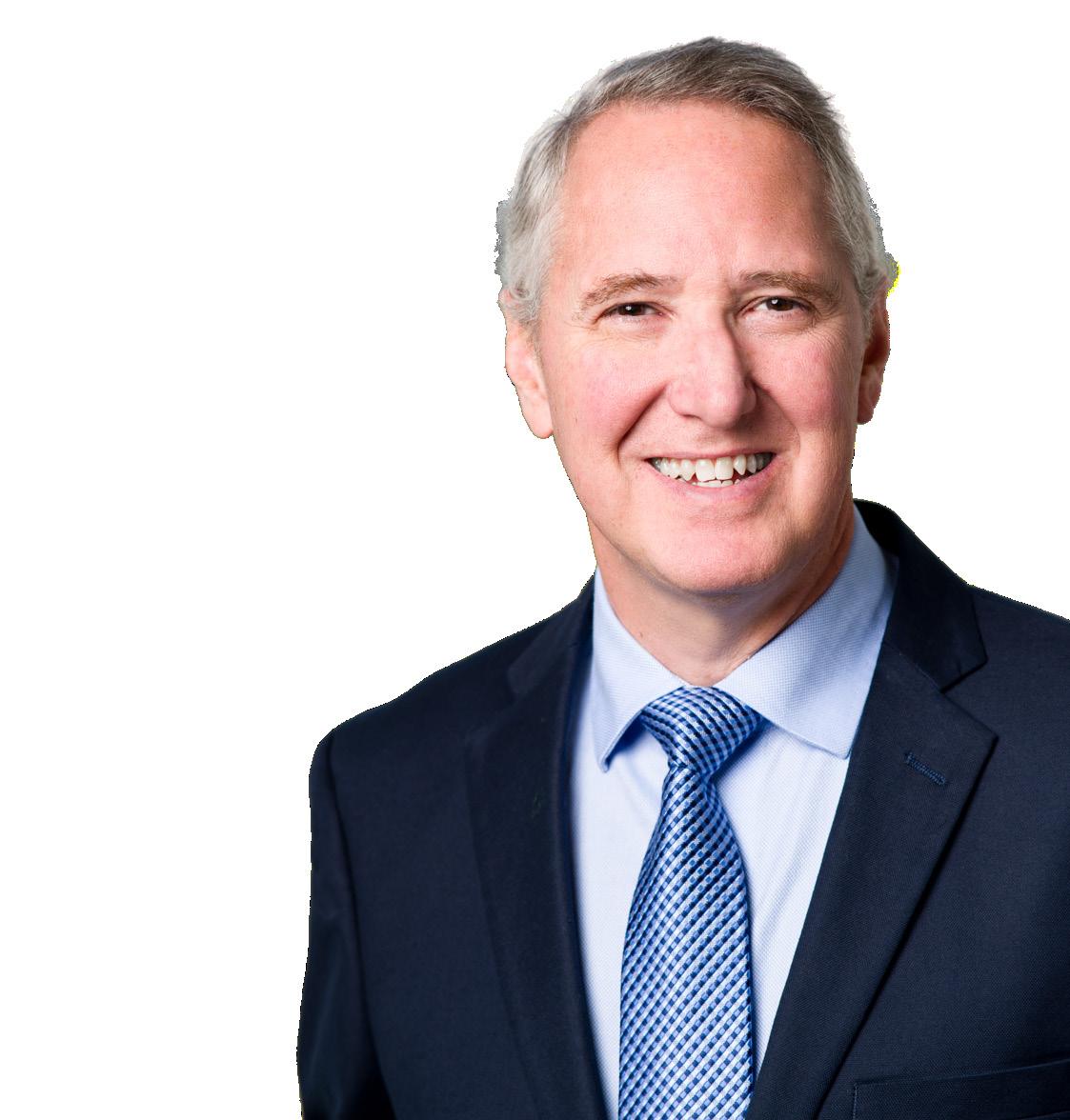
Tosca's portfolio of IoTtraceable, reusable plastic assets is the most robust the market has to offer, including crates, pallets, bulk containers, dollies and more, design to:

Reduce shrink/product damage
High-strength plastic protects products better than corrugated, preventing waste and reducing shrink.
Save on labour Straight-to-shelf design simplifies restocking.
Save space Foldable and stackable to maximise truck and store space.
Food safe
With the highest food safety programme in the industry, containers protect products from harmful bacteria.
Support sustainability Prevents the waste of single-use containers with a reusable, recyclable alternative.
“With multiple customers leveraging the same pool of assets, we all win. It makes it more efficient when we're all using those same things. And, because we are in the sustainability space, we do take it very seriously,” Weinberg says.
Before allowing the inevitable question to be asked, Weinberg addresses the cleaning process and how this is not only a major step in reusing pallets and packages, but showcases the company’s environmental commitment through water reclamation.
When it comes to the end-of-life stage for pooling products, the materials are reintroduced into the manufacturing process by regrinding the plastics into a form that allows the material to be remade into new assets. The pooling products achieve a lifespan of around 10 to 15 years, as they “sometimes get damaged to a point where they can't be reused for their intended purpose”, according to Weinberg. “Then we recycle that as well. We work with firms that will carry out what they call regrinding—turning our crates into other things.”
Tackling supply chain disruptions and improving
When it comes to environmental commitments, Tosca seems to be ticking all the right boxes—which is what the company set out to achieve when it ventured into the realm of reusable products. But this has also paved the way for something much bigger: a solution that has the ability to provide its customers with more efficient ways of working and better use of data to overcome supply chain challenges.
This is where the organisation incorporates technology into the mix, creating a more advanced supply chain service that tracks product locations,
conditions, and, ultimately, reduces waste in other areas of its customers’ supply chains.

The first challenge Tosca’s reusable assets help alleviate is product defects. The ability to assess the conditions of food provided in transport gives Tosca clients access to realtime data that measures collisions between crates in transit and ensures that goods are kept at the right temperature while on the road, all with the aim of supplying each unit intact and on time.
“I love to use our egg channel as an example, as it’s the one that most people resonate with,” says Weinberg. “Most egg farmers would take their eggs, put them in cartons, and pack those cartons into cardboard boxes. Those cardboard boxes would go to distribution centres, then to retailers that would put the cartons on the shelf.”
He explains that the Tosca solution uses plastic containers that have ventilation and are stackable to minimise damage of fragile goods such as eggs.
“1) You don’t have to worry about crushing, which is a problem with corrugated boxes; and 2) Because they’re ventilated, you don’t have to use as much energy to maintain optimal temperature on the truck, achieving better efficiency.”
With such examples, there’s a reduction in potential damaged goods received by the retailer, but also less time spent stacking goods on shelves. This is thanks to a minimalist design
“With multiple customers leveraging the same pool of assets, we all win”


pioneers sustainable solutions for supply chain waste
with a drop down wall, which enables the eggs to be displayed in stores directly in the RPCs.
“Once that crate is empty, the retailers just collapse those crates—and again, there's a reverse supply chain process. They come back to us, where they’re cleaned and reused,” Weinberg says.

This process describes just how seamlessly companies are able to interact with Tosca’s products, reducing unnecessary time spent handling goods and managing defects. It’s a solution that can benefit many areas of supply, but the focus for Tosca is the food supply chain and translating the same process across many other products.
On the subject of efficiency, one major disruption or incident that takes place in supply chains is missing consignments. Tosca aims to minimise the number of reusable assets that are left behind at specific intervals of the supply chain, using internet of things (IoT) technology for that very purpose.
“We
Introducing IoT to its clients has provided them with further time and cost savings as they gain the ability to track and manage the movement of their goods. Incorporating functions like GPS, bluetooth and cellular networks, clients are able to visualise the realtime location of each crate or pallet to assess any product delays.
The latest technologies used in this offering supersede foundational technologies, such as barcodes and RFID, that were previously used to check goods in and out of depots as points of reference on their journey to the customer. The IoT-driven system allows for more discreet information tracking as well as measurement of trailer temperature, humidity, and shock.
This system is particularly useful to track the location of pallets and crates, but also to track the temperature of fresh meat and poultry, frozen goods, and other products that require more tailored transit methods, such as refrigerated or freezer trailers.
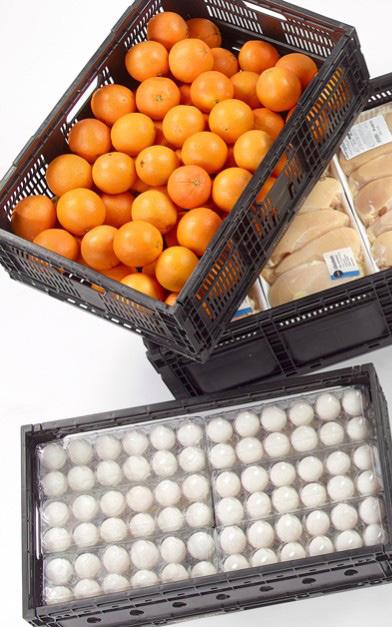
Growth catalyses digital transformation at Tosca
As a global company— headquartered in Atlanta, Georgia—Tosca has seen great adoption of its products and services across the states. It has also seen further interest from other countries in Europe, as well as Israel and others, thanks to some major acquisitions by the company.
To achieve its success, the company formed valuable partnerships with some critical organisations in technology, including Sycor for Microsoft Dynamics 365 support, SAP for implementing its HR systems, Data MTX for supporting most of its offshore labour requirements, and Sensolus for the presentation aspect of its global IoT solutions.
Another critical partner in Tosca’s success is Neway Technologies, which was the key
MIKE WEINBERG CHIEF INFORMATION OFFICER, TOSCAenabler of cloud migration and creating an almost-cloud-native workplace. The company works with Neway as its primary infrastructure partners, while also providing security solutions for its cloud-based business processes.
Weinberg believes that these relationships formed from the digital transformation of Tosca’s products, services and organisational processes will drive further integration of digital into the company and the optimisation of business-critical functions.
“I think we’re seeing the importance of traceability, with the information detailing the status of assets becoming more and more critical,” says Weinberg. “I think sustainability is a big part of it.”
“People partner with us because high quality reusables are one of the intersections
where commerce and sustainability meet. Having said that, I think there’s more need to recognise that sustainability is important and we’re getting more people across the globe saying, ‘we really want to invest in sustainable solutions, we don’t want to invest in one-way solutions’.”
In collaboration with its partners, Tosca continues to manage all forms of waste to enable seamless, cost-effective supply chain operations.
While Tosca is an organisation built on reusable packaging and palletisation, the company is much more than just a sustainability advocate— it’s a sustainability pioneer.

